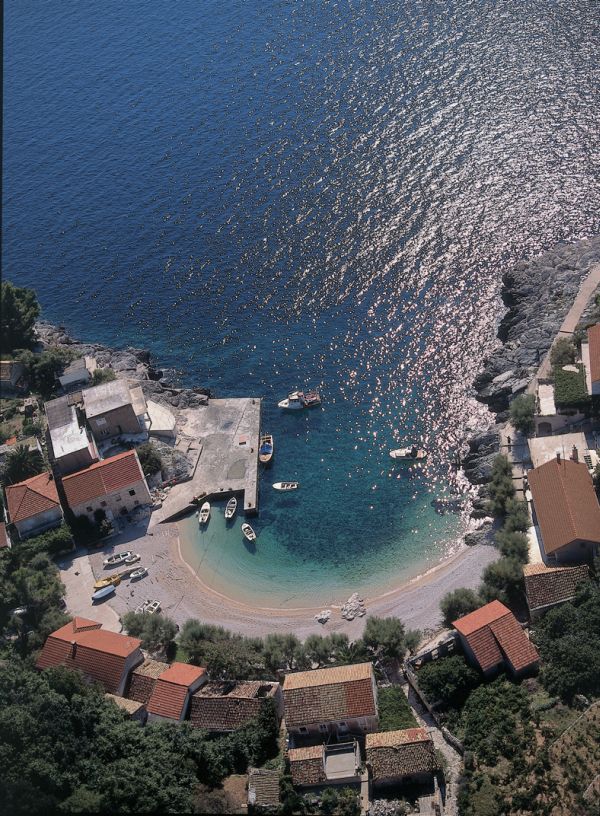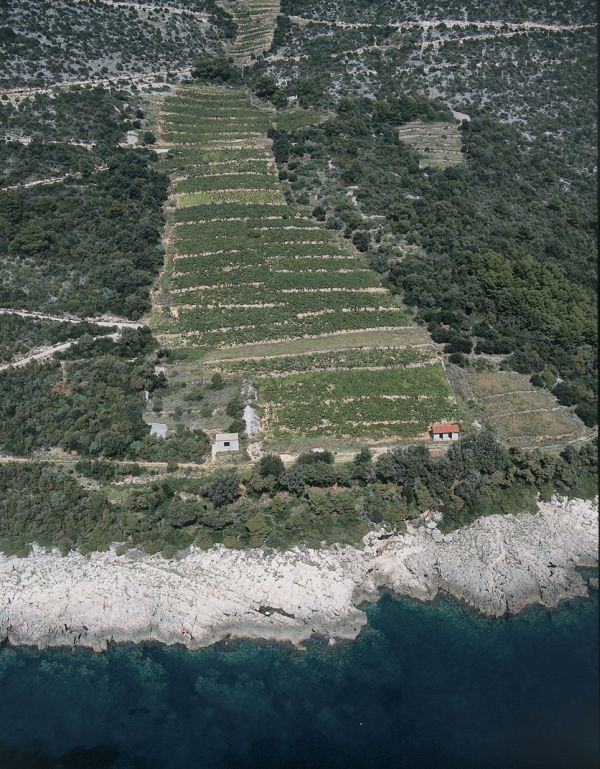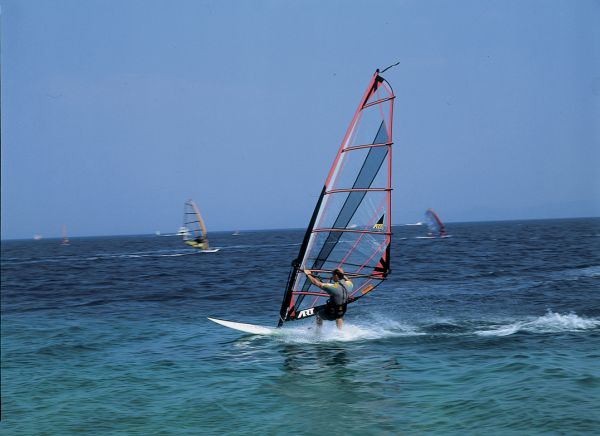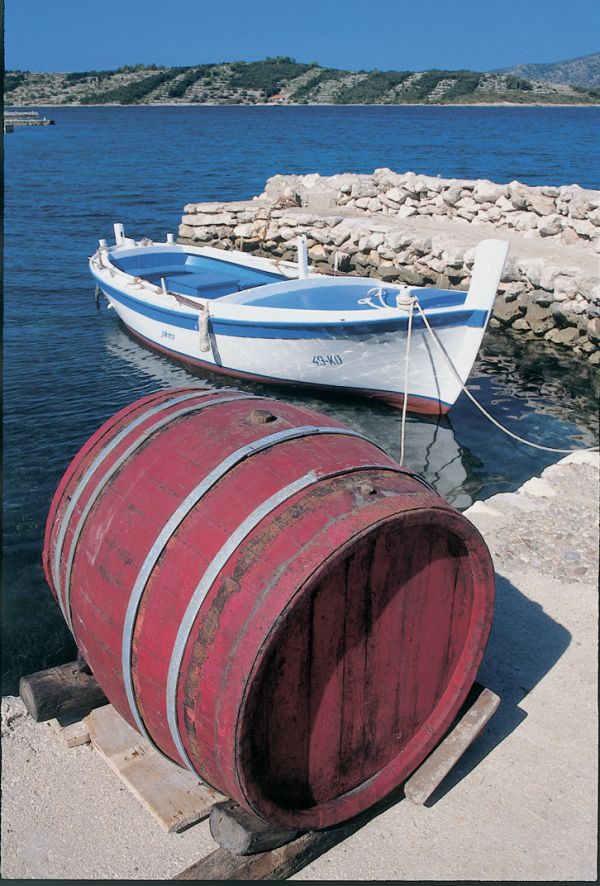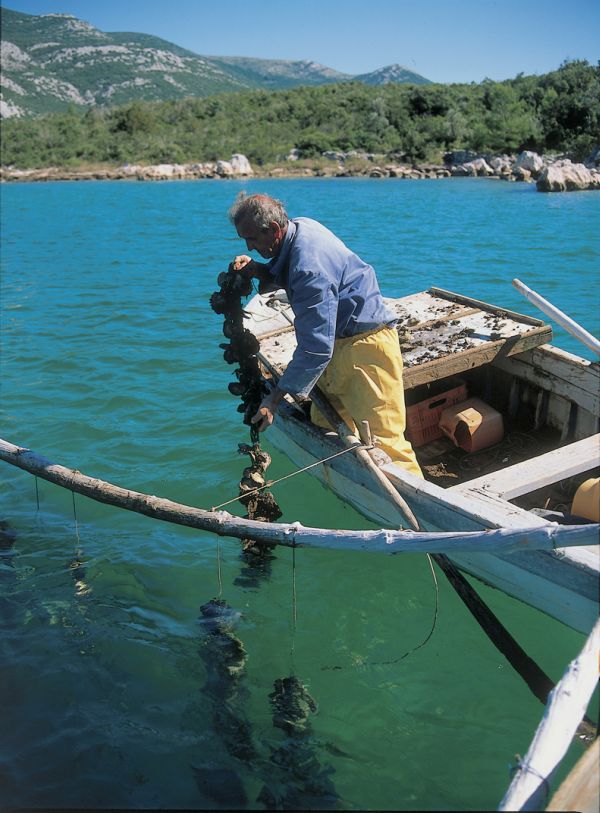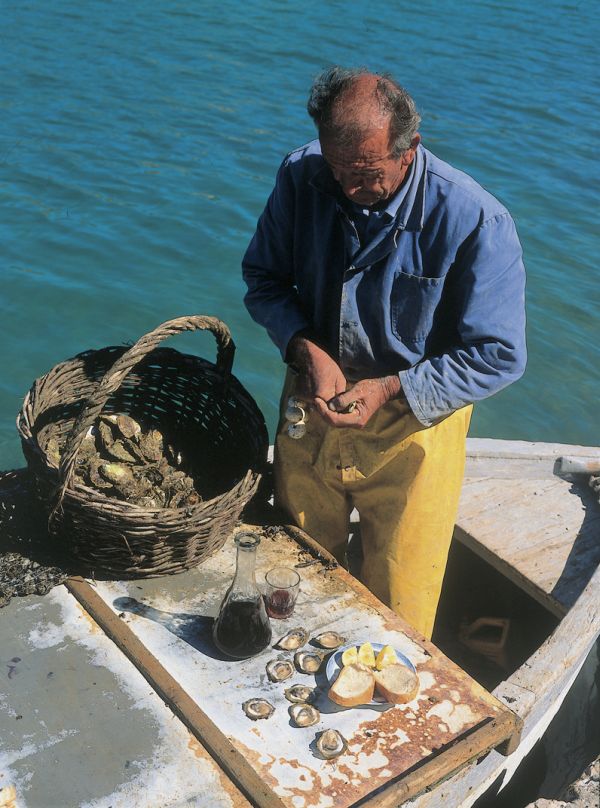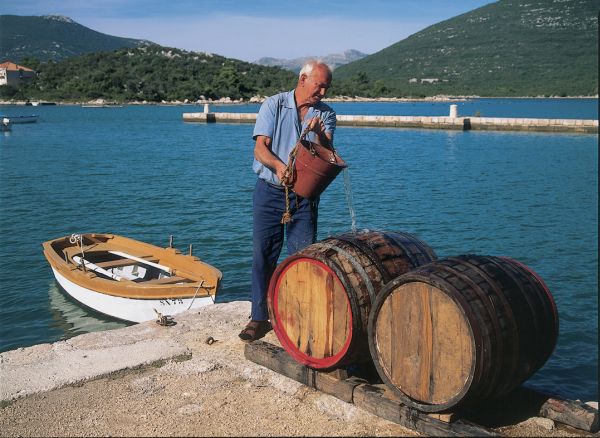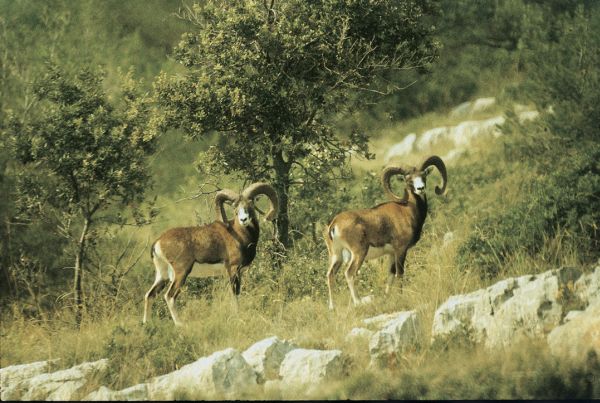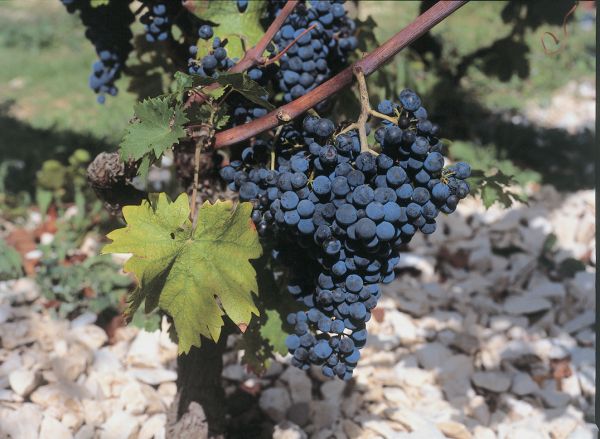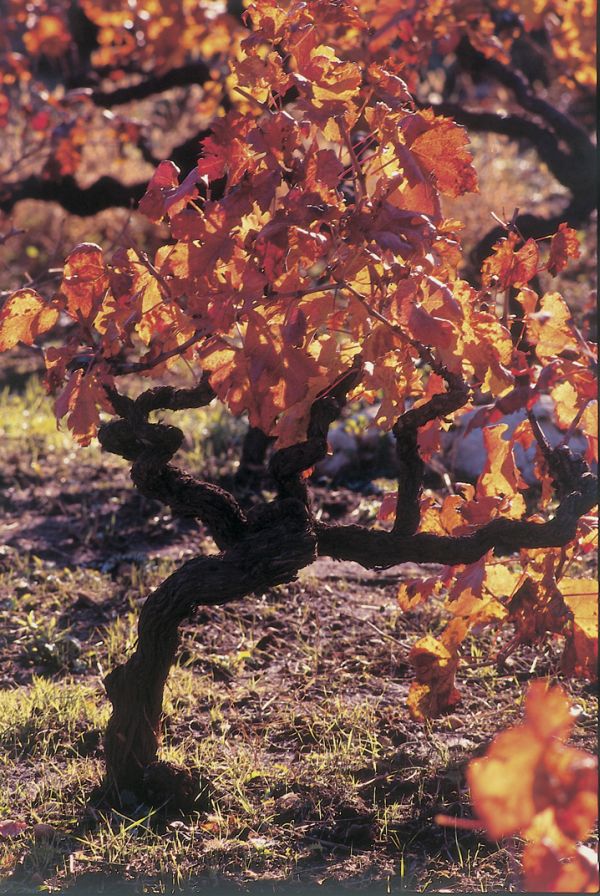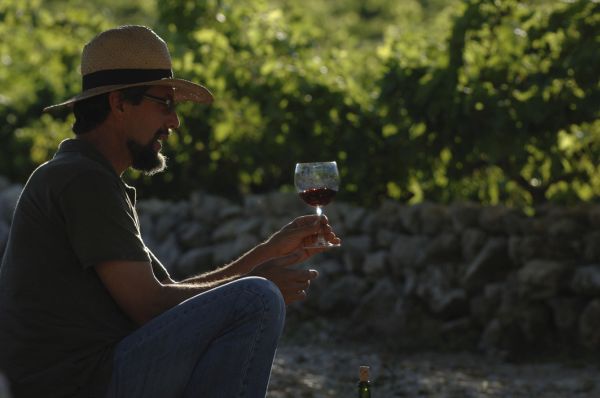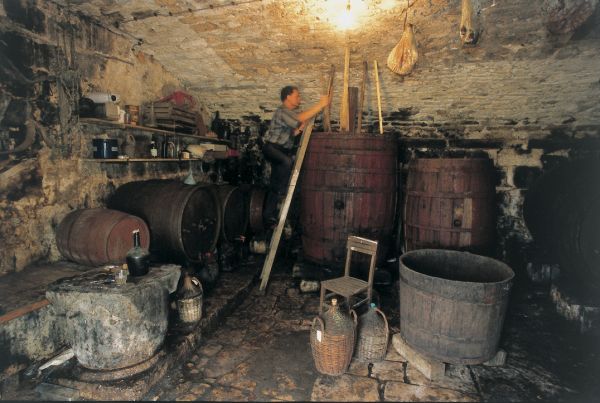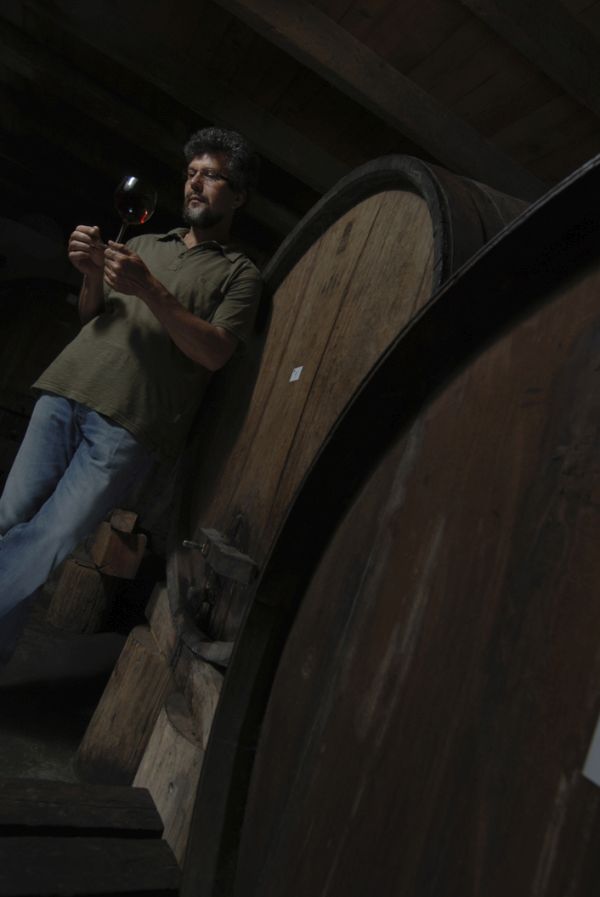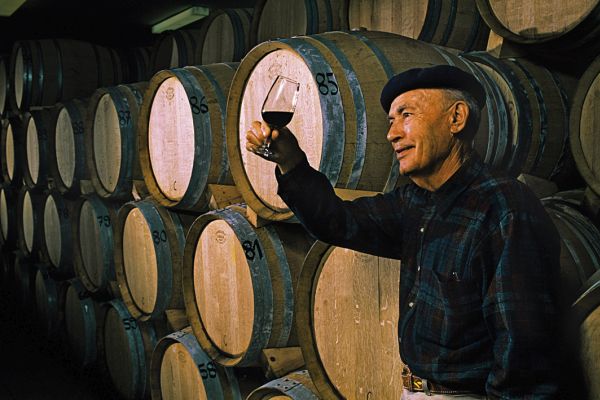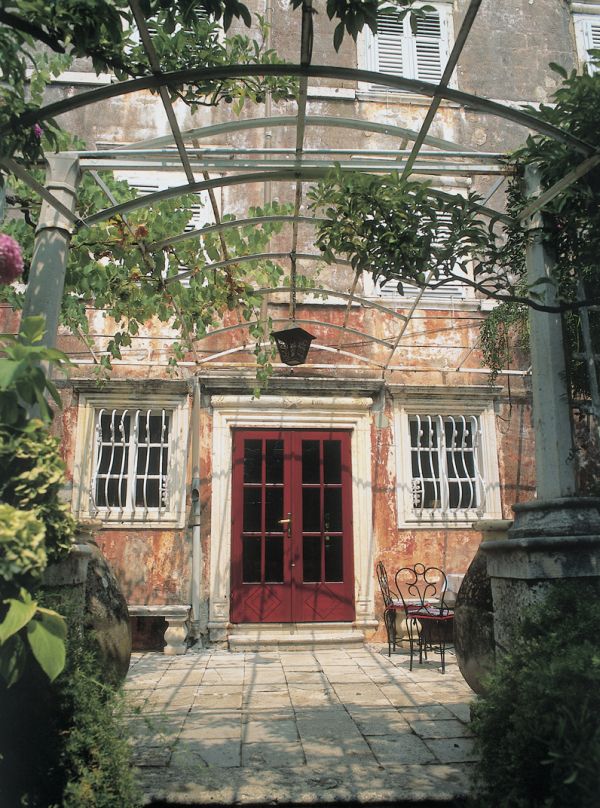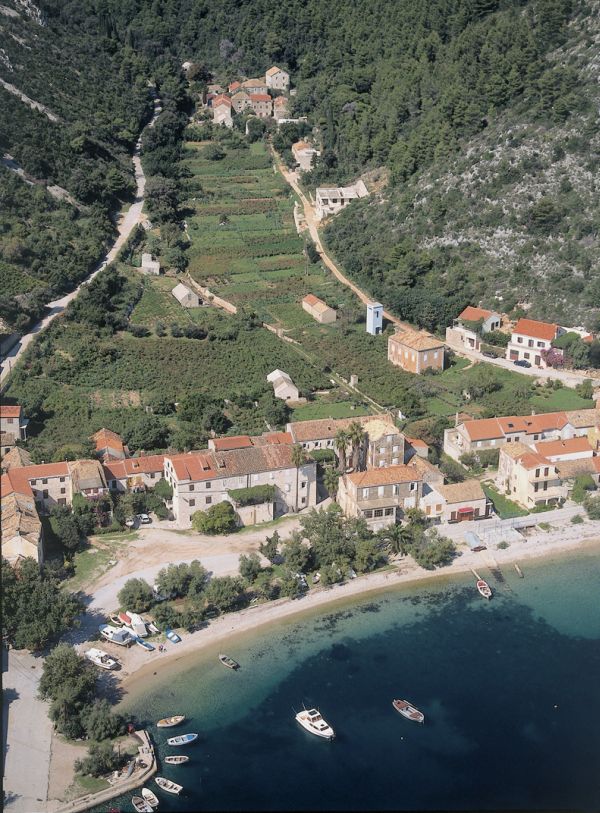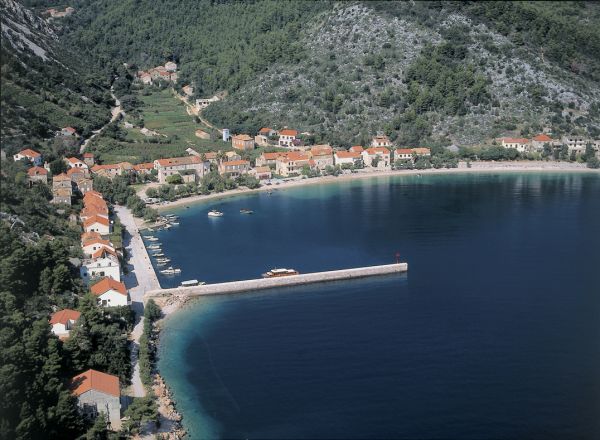Pelješac
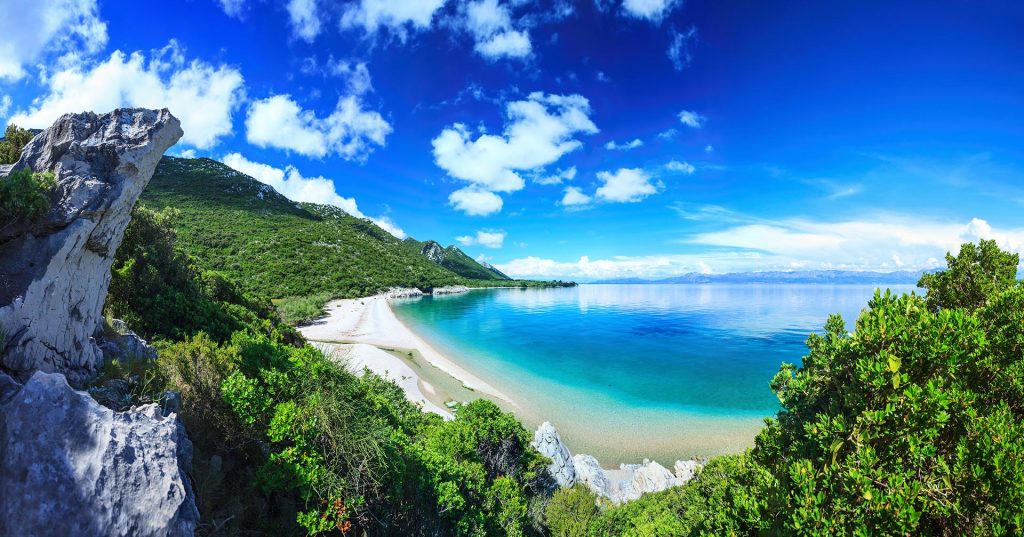 The Pelješac peninsula has since ancient times been adorned with grape vine plantations, and wine production has a long tradition and is one of the most important commercial activities. Wine roads, winery tours and vineyards of Metohija, Boljenovići, Sparagovići until Putniković and Dubrava, represent a powerful experience of tradition and love from the citizens of the Pelješac peninsula.
The Pelješac peninsula has since ancient times been adorned with grape vine plantations, and wine production has a long tradition and is one of the most important commercial activities. Wine roads, winery tours and vineyards of Metohija, Boljenovići, Sparagovići until Putniković and Dubrava, represent a powerful experience of tradition and love from the citizens of the Pelješac peninsula.
Around the middle of the peninsula there is an oasis of tranquility and beauty, in a sandy bay facing the west: the village of Žuljana. Widely known since 1924 for its beautiful and numerous sandy beaches, sunsets and diving in attractive locations organized by local diving centers. Accommodation in this part of the peninsula can be found in private hotels (Mali Ston), large auto camp (Prapratno) and small auto camps (Hodilje, Brijesta, Žuljana); as well as in private accommodation in all villages and coves. Ethno gastronomic offers can be experienced in many domestic restaurants and rural households.
Broce
Broce is situated on the Pelješac peninsula, and is connected to the mainland by the island highway via Ston. The settlement with its small boat dock is situated 3 kilometres south of Ston and the residents, though they traditionally worked in the fields and as fishermen, are increasingly turning to tourism as this region has many beautiful beaches lying in the shade of pine woods; plenty of resources and potential to offer a quality vacation to visitors.
Information
Ston Tourist Board
Pelješki puti bb, 20230 Ston
tzston@du.t-com.hr
www.ston.hr
Tel / Fax: +385 (0) 20 754452
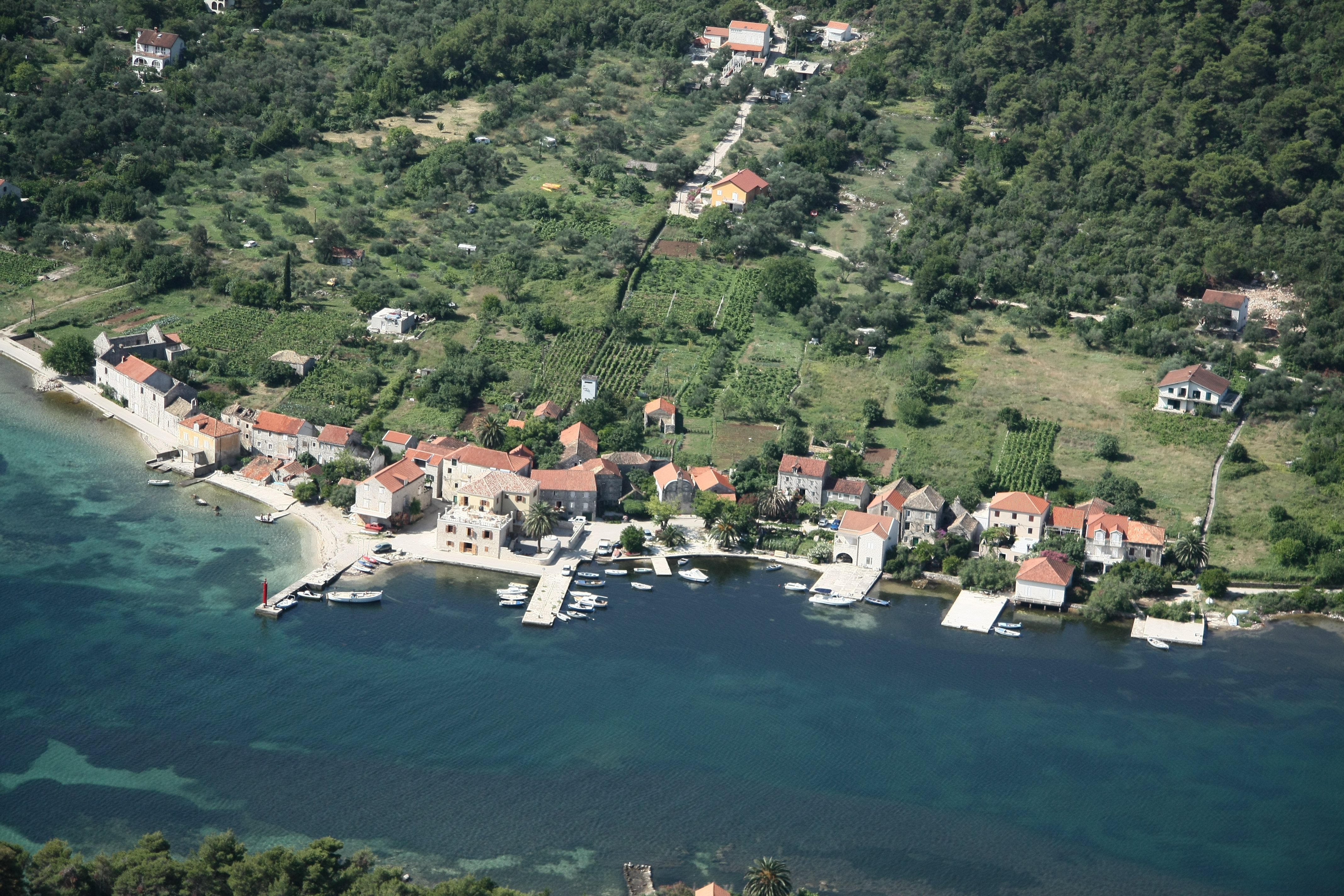
Drače
Drače is a picturesque town on the northern side of the Pelješac peninsula. Situated in a wide inlet, Drače is a good choice for a quiet family holiday, while excellent road connections to the mainland ensure a rich excursion program in the stunning environment.
Information
Janjina Tourist Board
20246 Janjina
info@tzjanjina.hr
www.tzjanjina.hr
Tel: +385 (0) 20 741130
Fax: +385 (0) 20741005
Janjina
A town in the interior of the Pelješac peninsula, at the foot of Gradine Mountain (244m), situated 2 kilometres from the port of Drače on the northeastern coast. The main economic activities here are agriculture, wine making and olive growing. It is situated along the national highway. At Gradine, just above Janjina, there are remnants of Illyrian structures, and there are grave stone piles nearby.
The town of Janjina is composed of five villages: Bara, Jaspričići, Prislivi, Dežulovići and Gornje Selo. Gornje Selo includes Lovrović, Gornje Selo and Polutić. Bara and Gornje Selo existed back in the 14th century, while the remaining settlements came into existence during the 15th and 16th centuries.
At the graveyard near the Church of St. Stephan, the remains of walls of a Roman country house and tombstones from the 1st century have been found. The ruins of the pre-Romantic Church of St. George (Jurja) with its late medieval graveyard are significant; the name of the donor Peter is engraved in the segments of the altar rail, decorated with braiding. In the wall above the entrance to the former Rector’s Palace is a rustic relief with the seated figure of St. Vlaho. The town has several lovely Captains’ homes from the 19th century, while the historic Church of St. Vlaho dominates.
Information
Janjina Tourist Board
20246 Janjina
info@tzjanjina.hr
www.tzjanjina.hr
Tel: +385 (0) 20 741130
Fax: +385 (0) 20741005
Kuna Pelješka
The main economic activities of the town of Kuna Pelješka are agriculture and wine making. In the 19th century, citizens of Dubrovnik built the Gučetić castle and the first Church of St. Stephen at the graveyard (renovated at the end of the 19th century).
The triple nave Church of Our Lady of Loreta (1681) is the most monumental Baroque structure in the Dubrovnik region outside of the Dubrovnik Old Town. The church contains marble altars from the workshop of the Brutapelle family, and paintings by Celestin Medović. In 1705, the Franciscan monastery was built next to the church. The home of Celestin Medović contains a collection of his paintings and the town has a monument honoring the painter, the work of Frano Kršinić. Near the church (2.5 kilometres) are places suitable for swimming and water sports.
Information
Orebić Tourist Board
Zrinsko Frankopanska 2
20250 Orebić
info@visitorebic-croatia.hr
www.visitorebic-croatia.hr
Tel: +385 (0) 20 713718
Fax: +385 (0) 20 714001
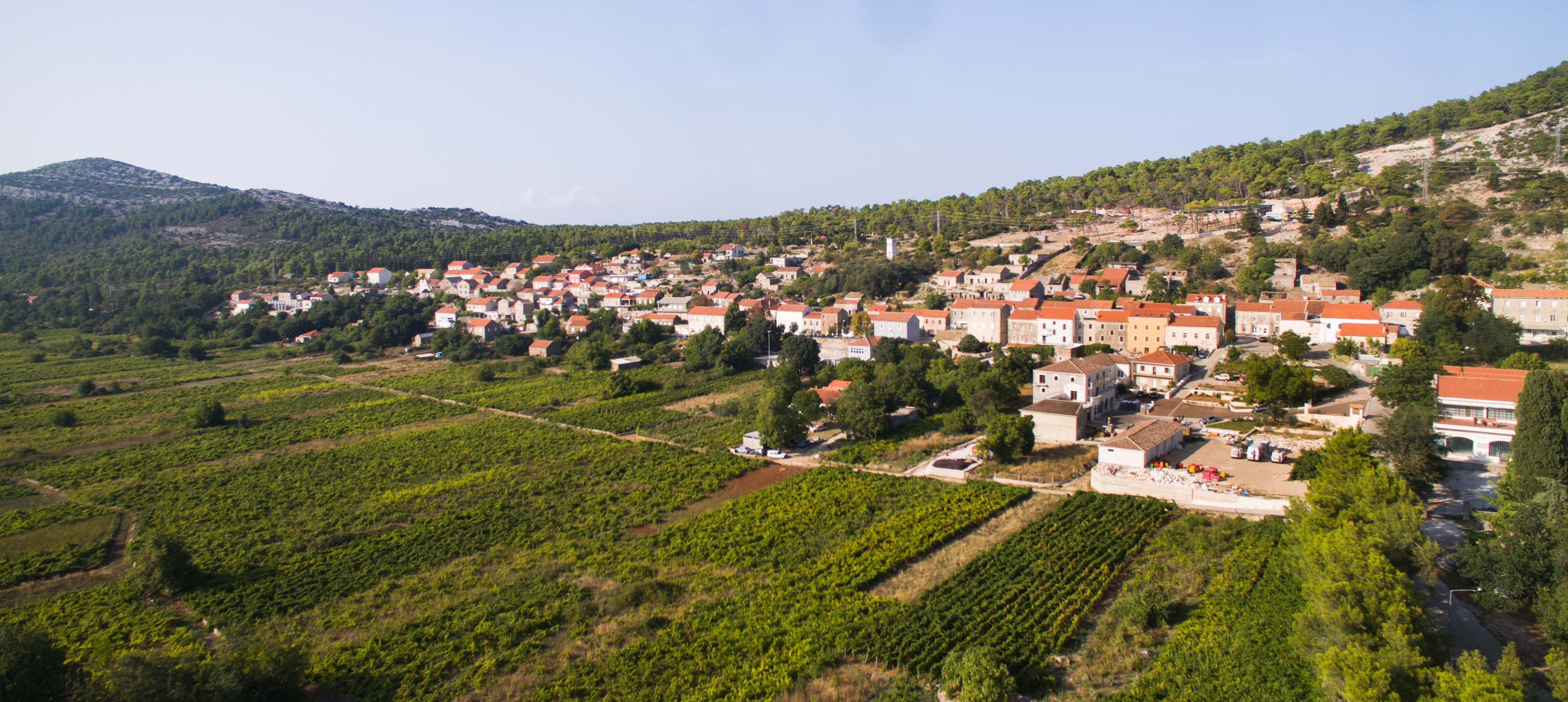
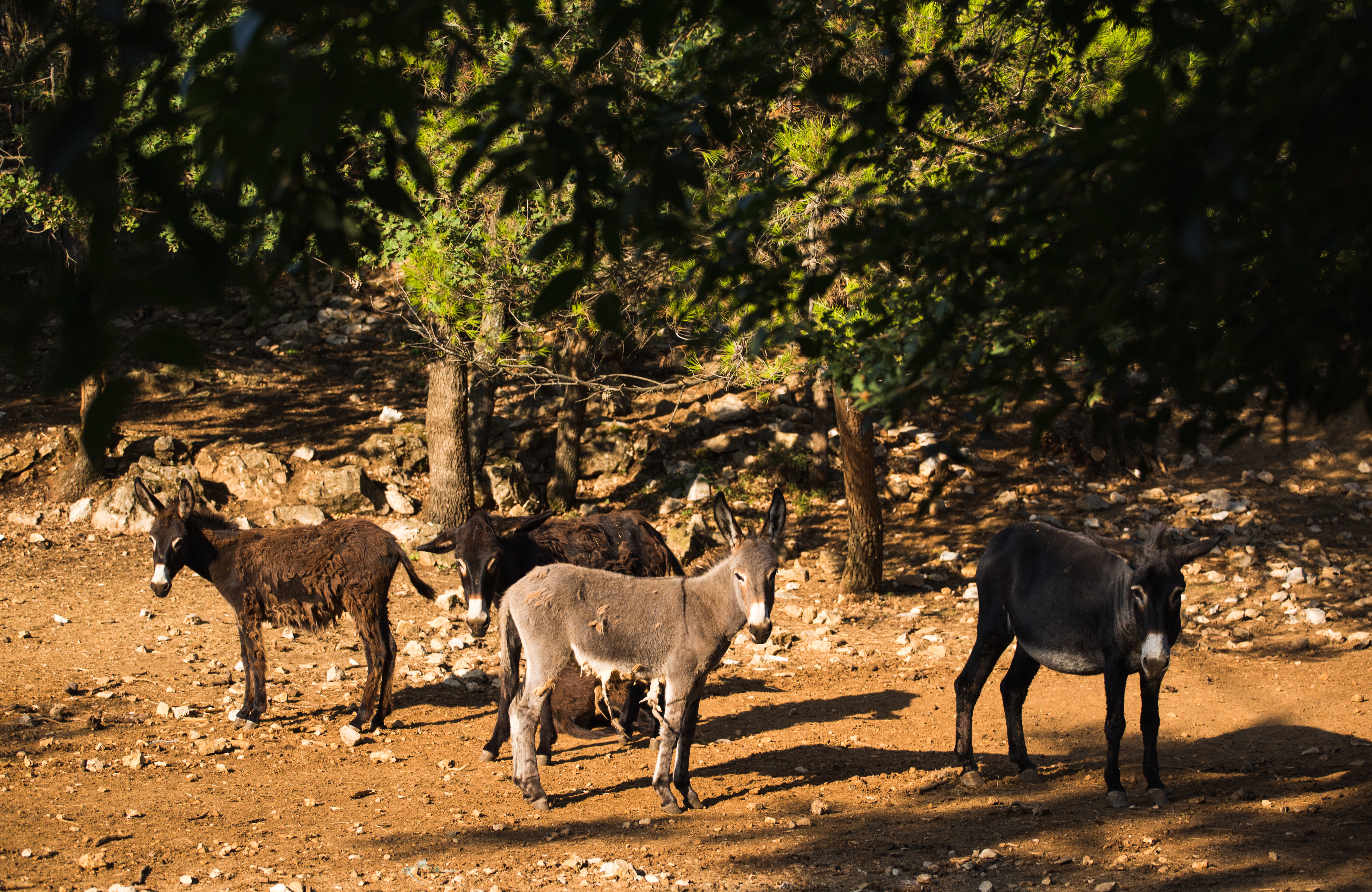
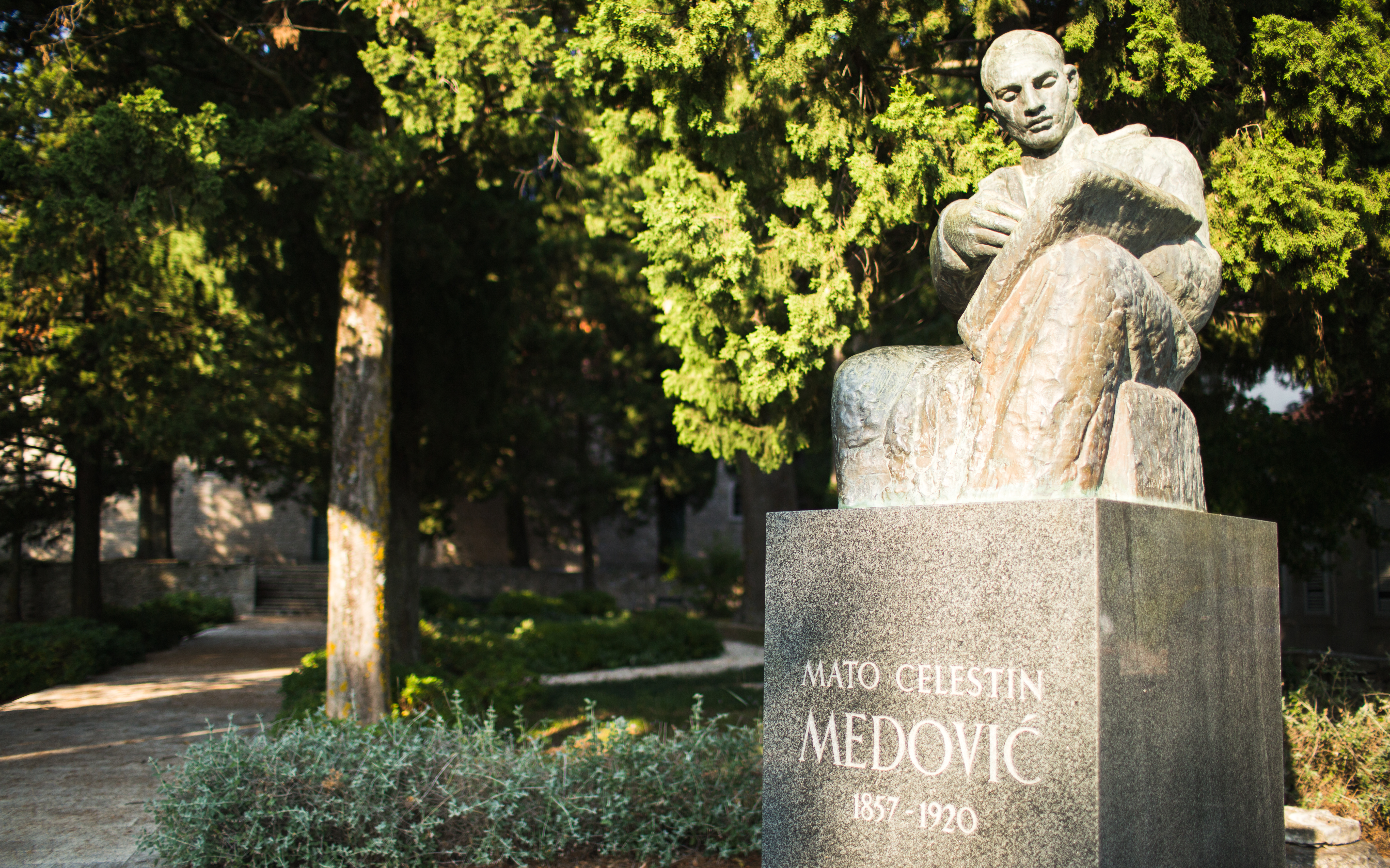
Kućište
The road westward from Orebić, which passes along the seashore, arrives at this Captain’s town, where about 200 people live today.
Here you can find a series of Baroque captain’s homes with their ornate gardens, and the vlake (boat shelters) are especially picturesque. The Baroque Church of the Holy Trinity, dating back to 1725, with its creatively shaped facade and the Baroque home of the Lazarović family stand out in particular. The path by the seashore passes by Liberan Cape with its beautiful, long pebble beach, and arrives finally at the town of Viganj.
Information
Orebić Tourist Board
Zrinsko Frankopanska 2
20250 Orebić
info@visitorebic-croatia.hr
www.visitorebic-croatia.hr
Tel: +385 (0) 20 713718
Fax: +385 (0) 20 714001
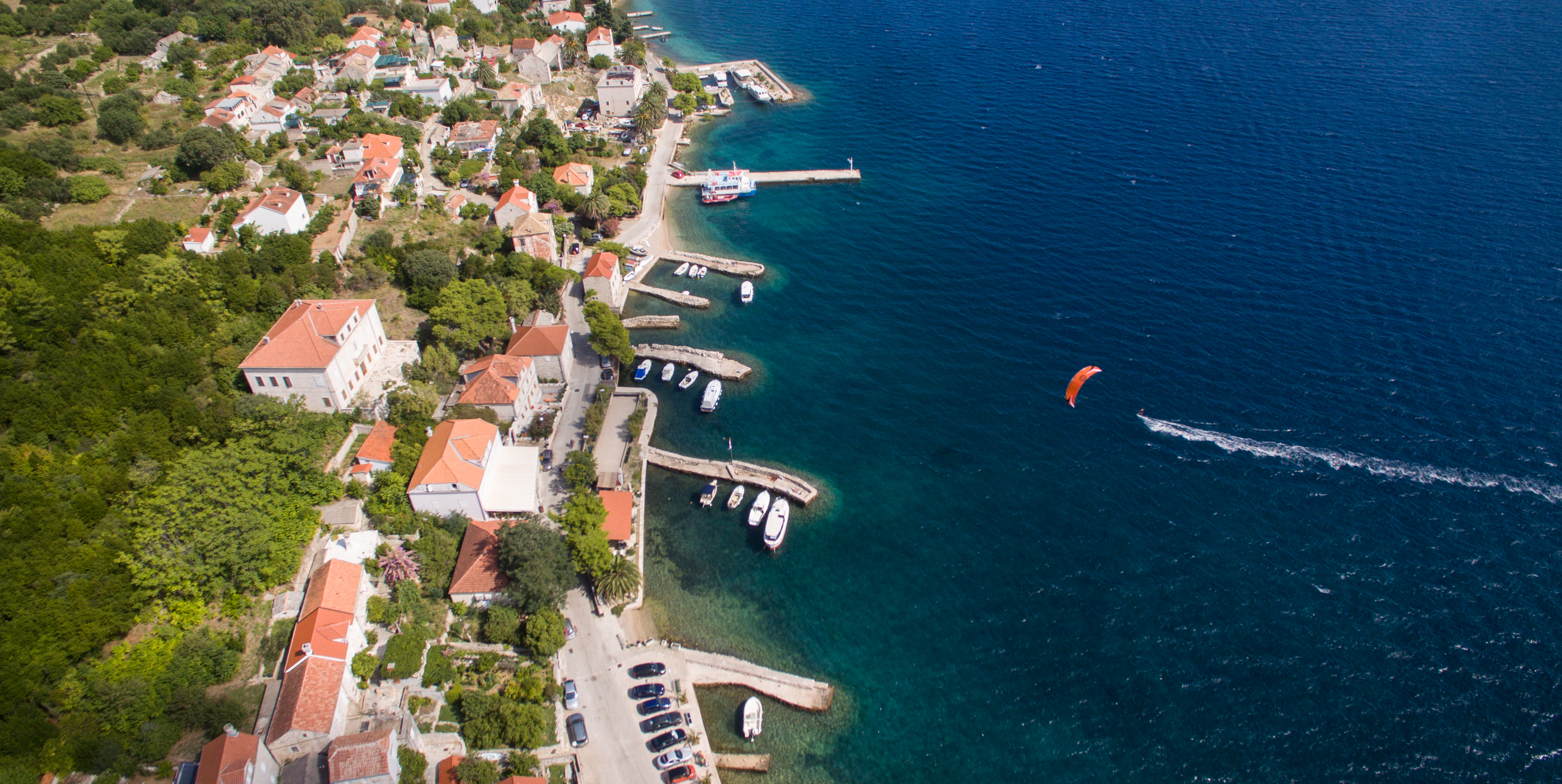
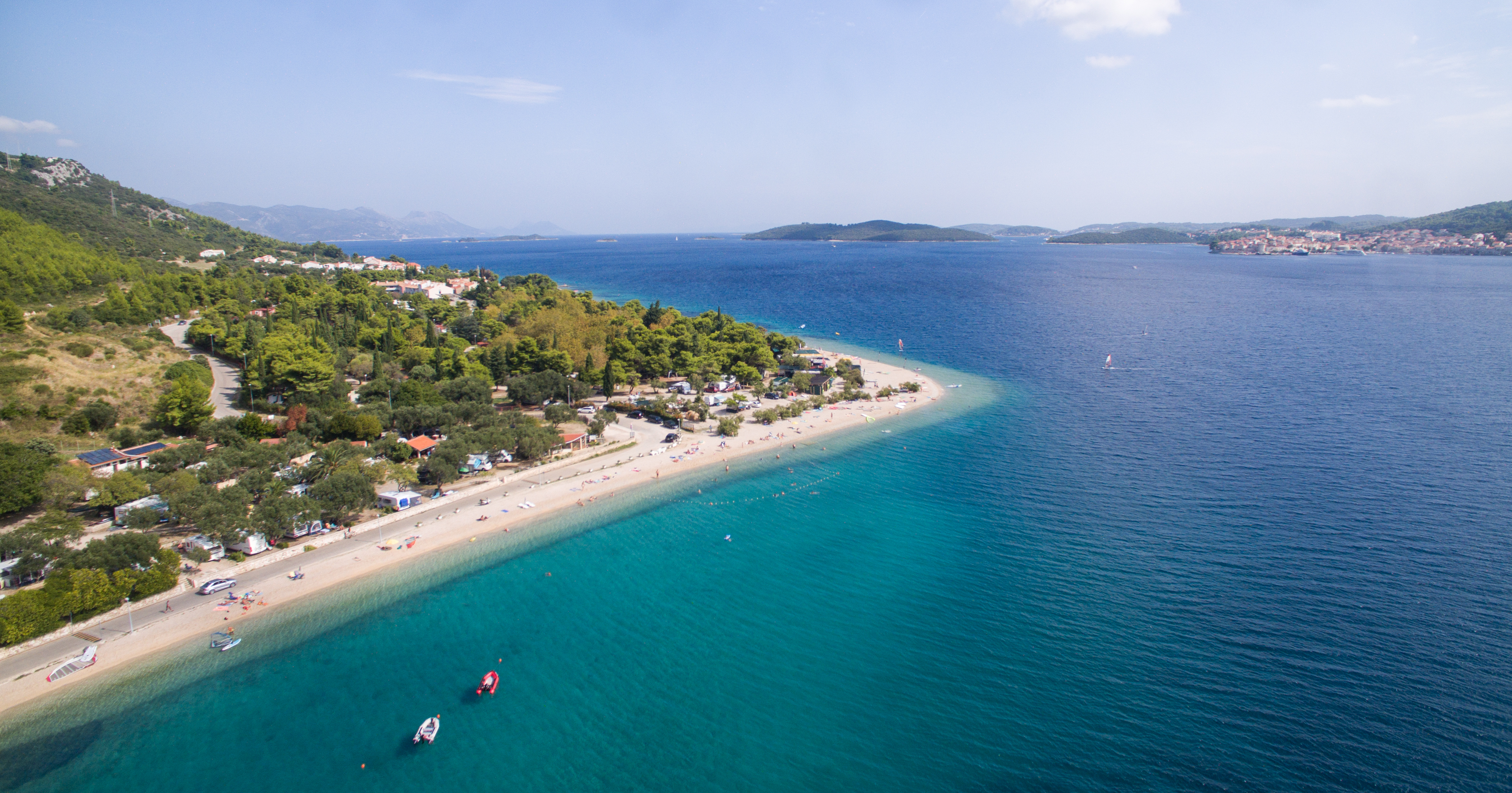
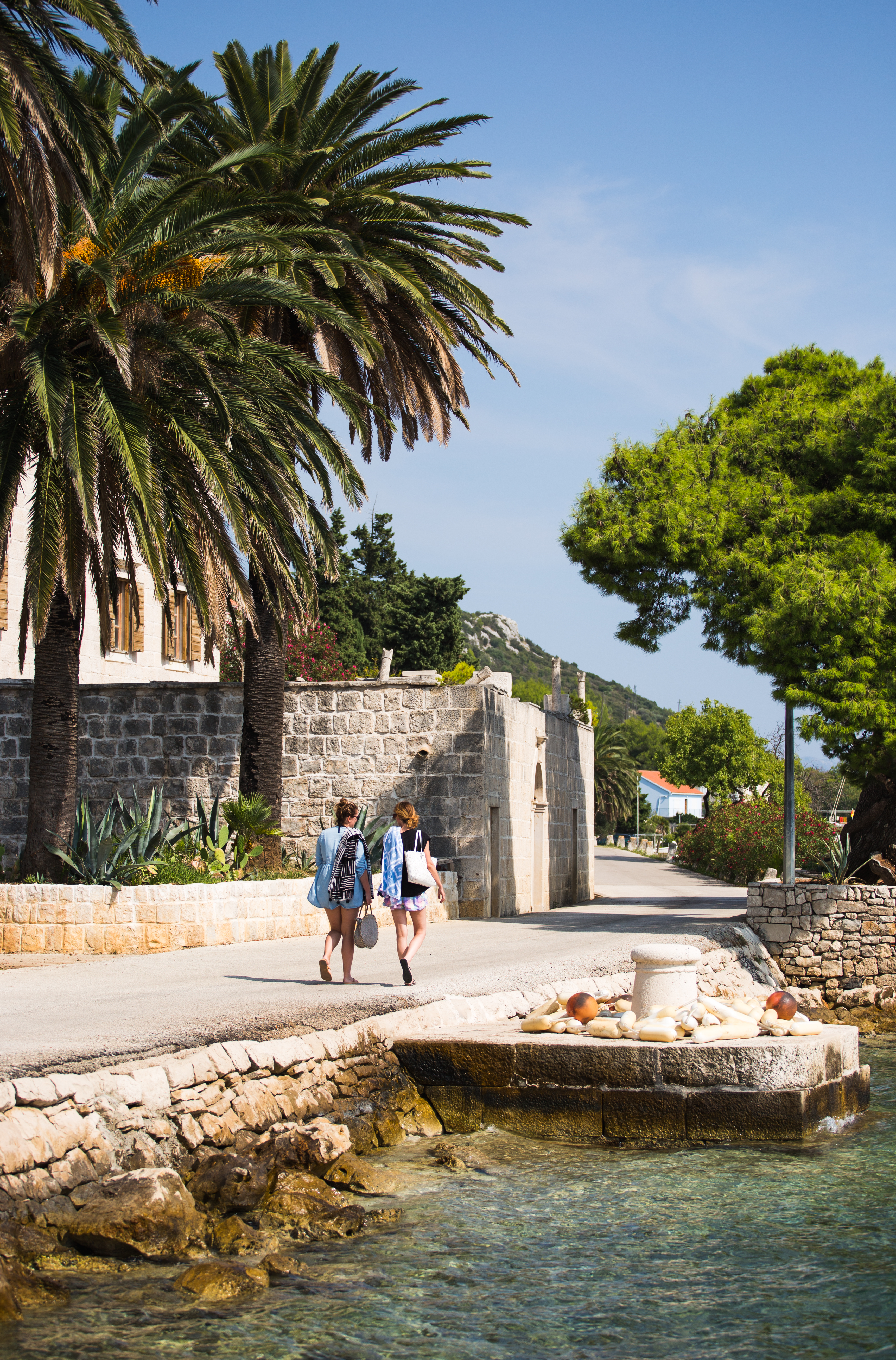
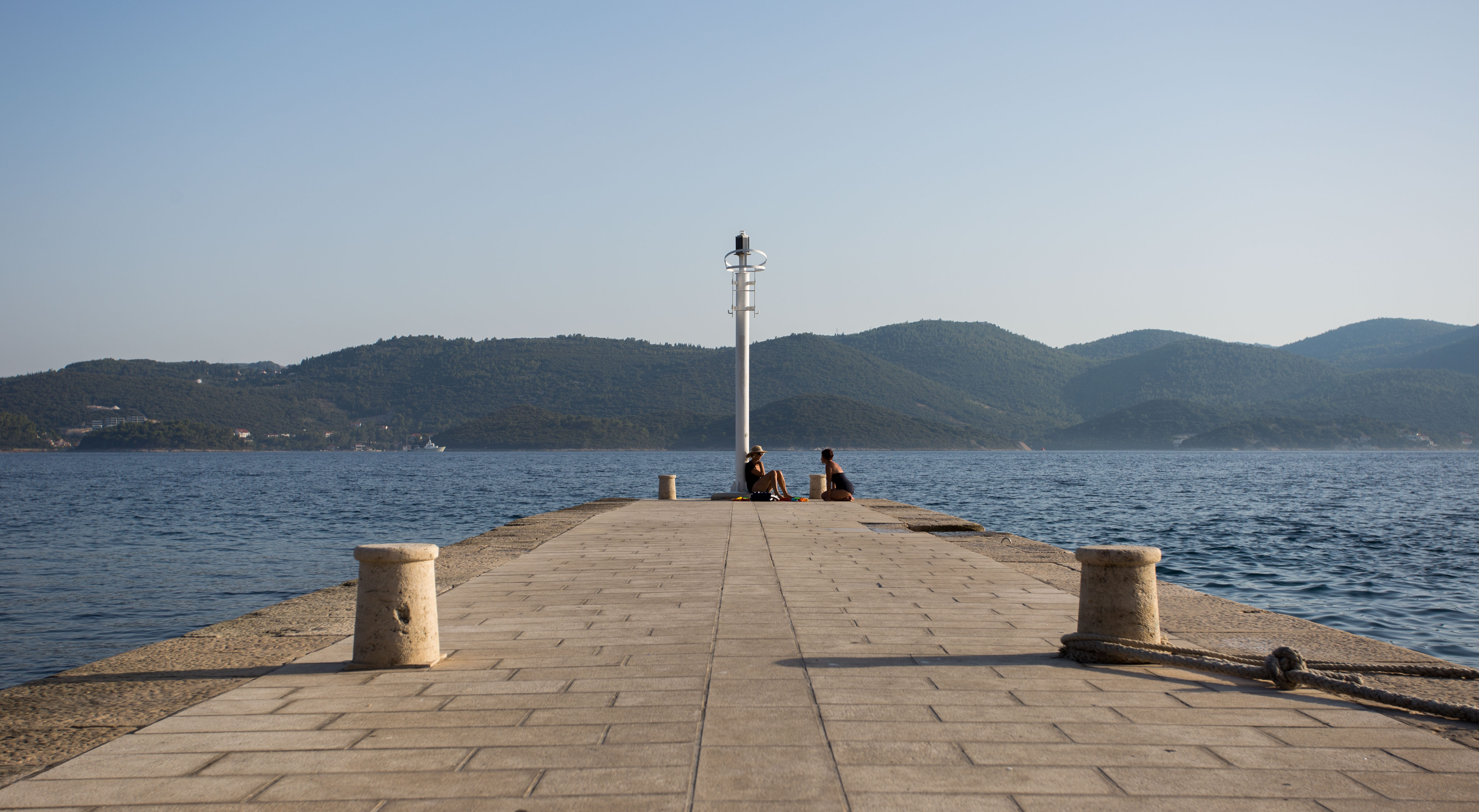
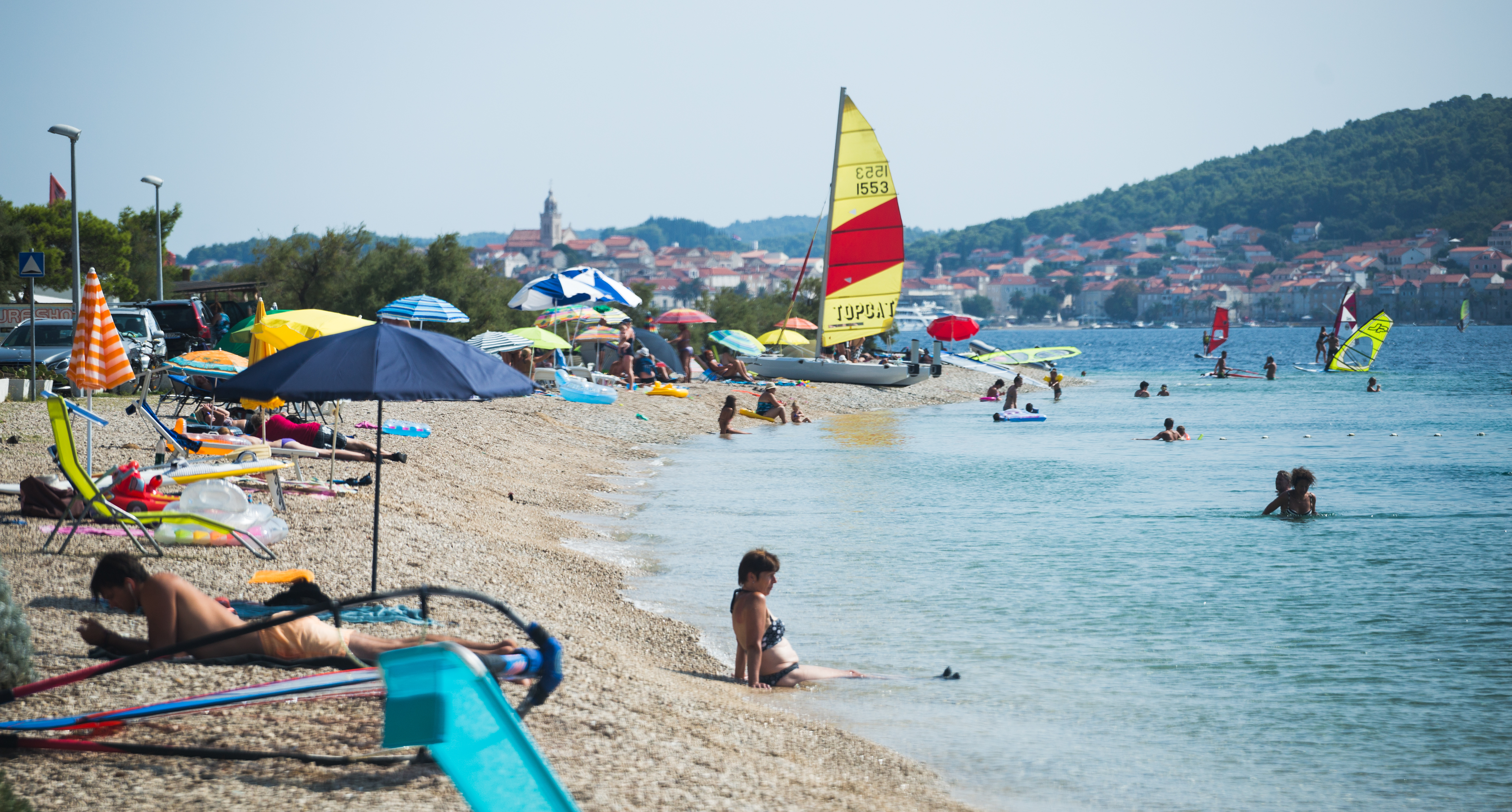
Lovište
Lovište is a town on the far western tip of the Pelješac peninsula, situated in a deep inlet. The town has about 250 residents who work in the shipping industry and tourism, and they are well known for raising figs, almonds and carob. In the middle of the 19th century, the town was established by settlers from the town Bogomolja on the island of Hvar. Many private bed and breakfasts offer guests local culinary specialities, and the beaches here are perfect for a quiet family vacation.
Information
Orebić Tourist Board
Zrinsko Frankopanska 2
20250 Orebić
info@visitorebic-croatia.hr
www.visitorebic-croatia.hr
Tel: +385 (0) 20 713718
Fax: +385 (0) 20 714001
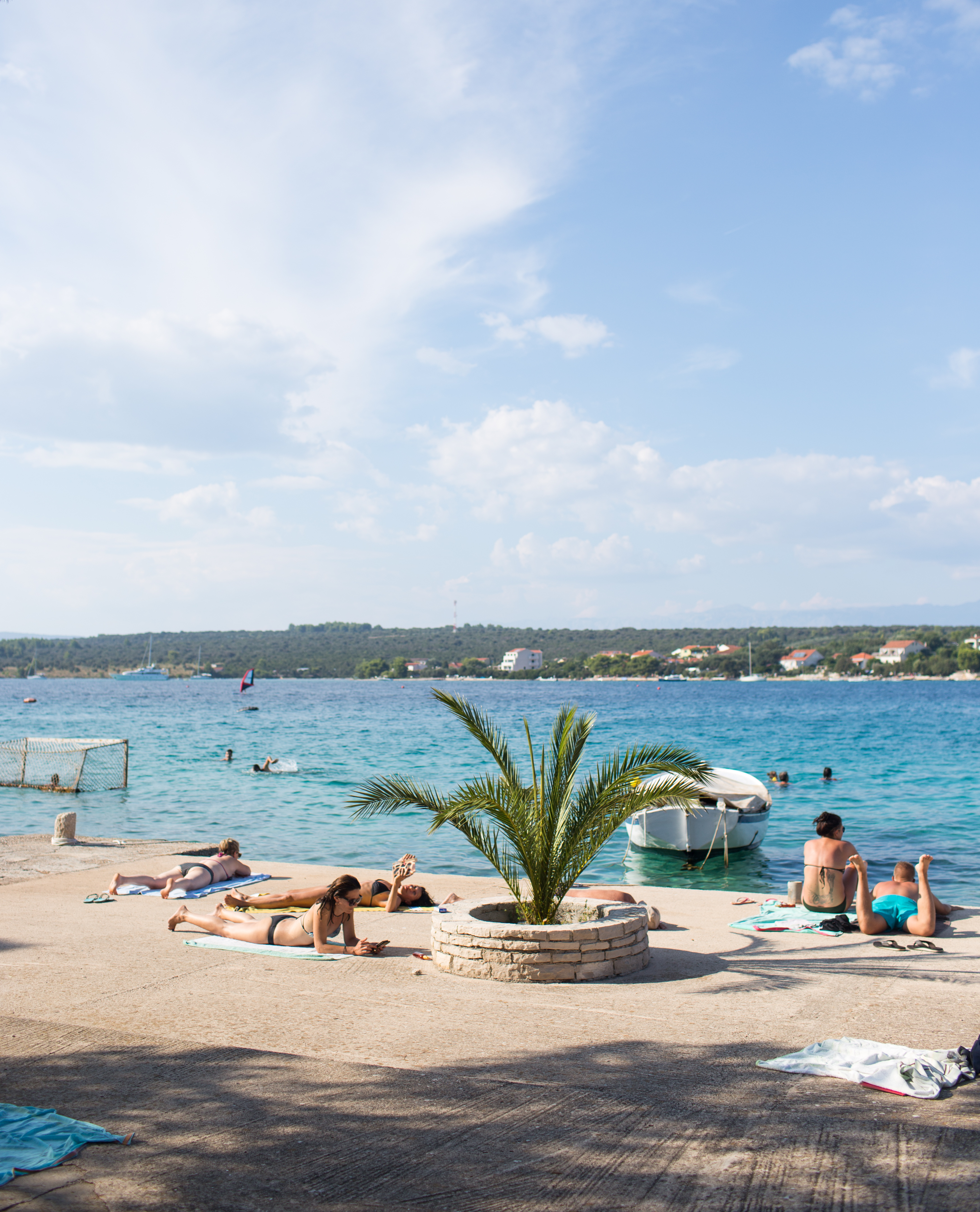
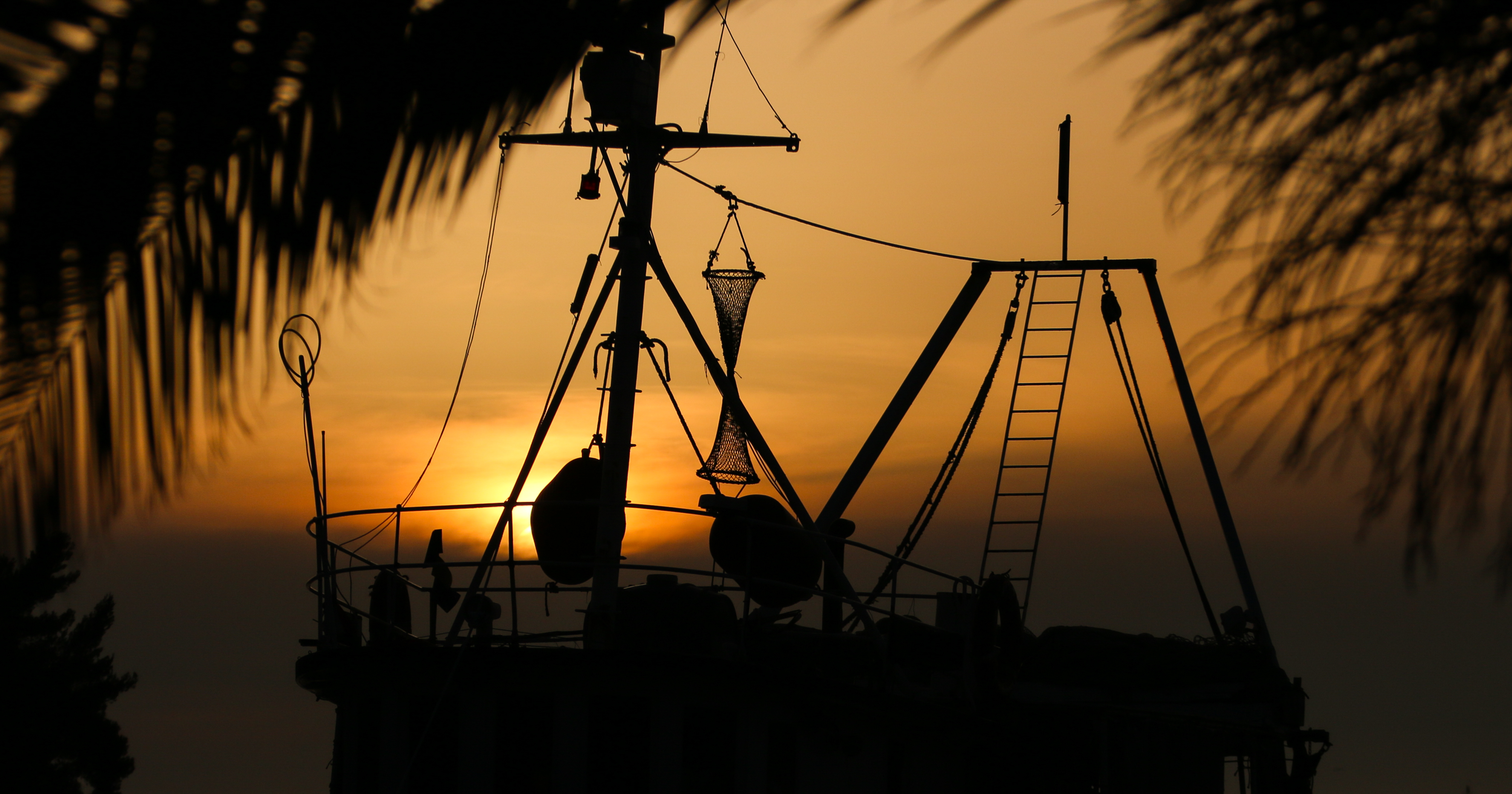
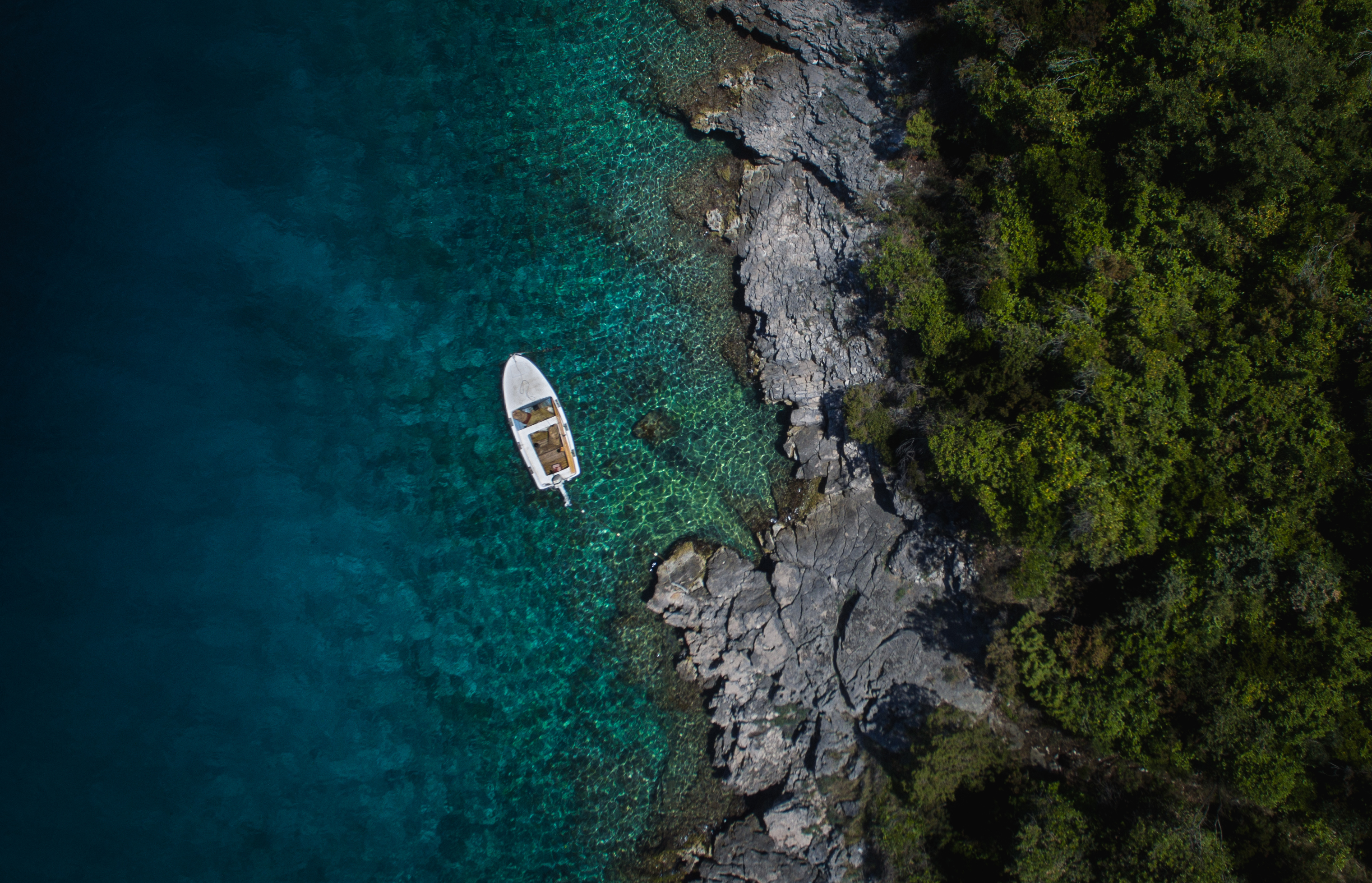
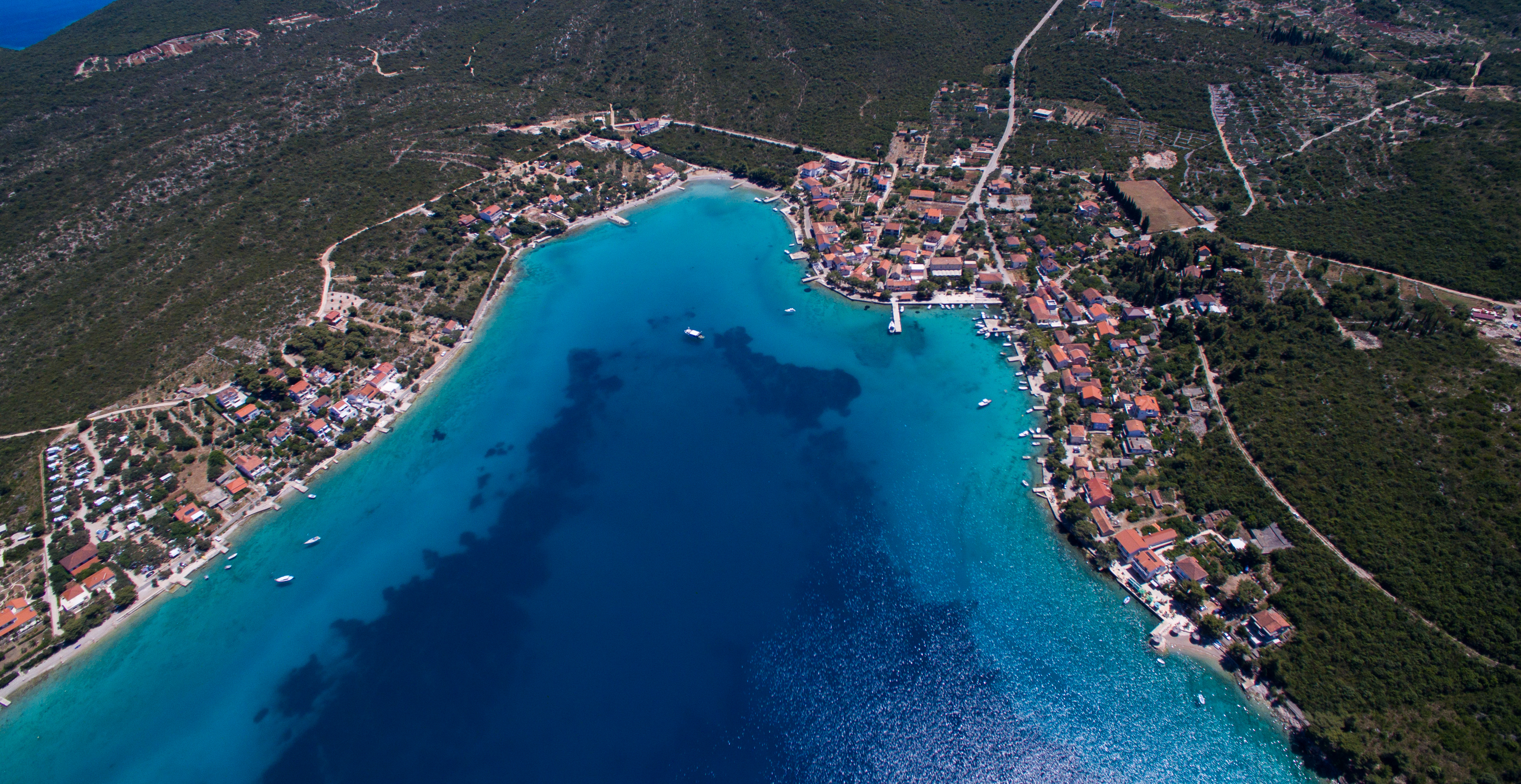
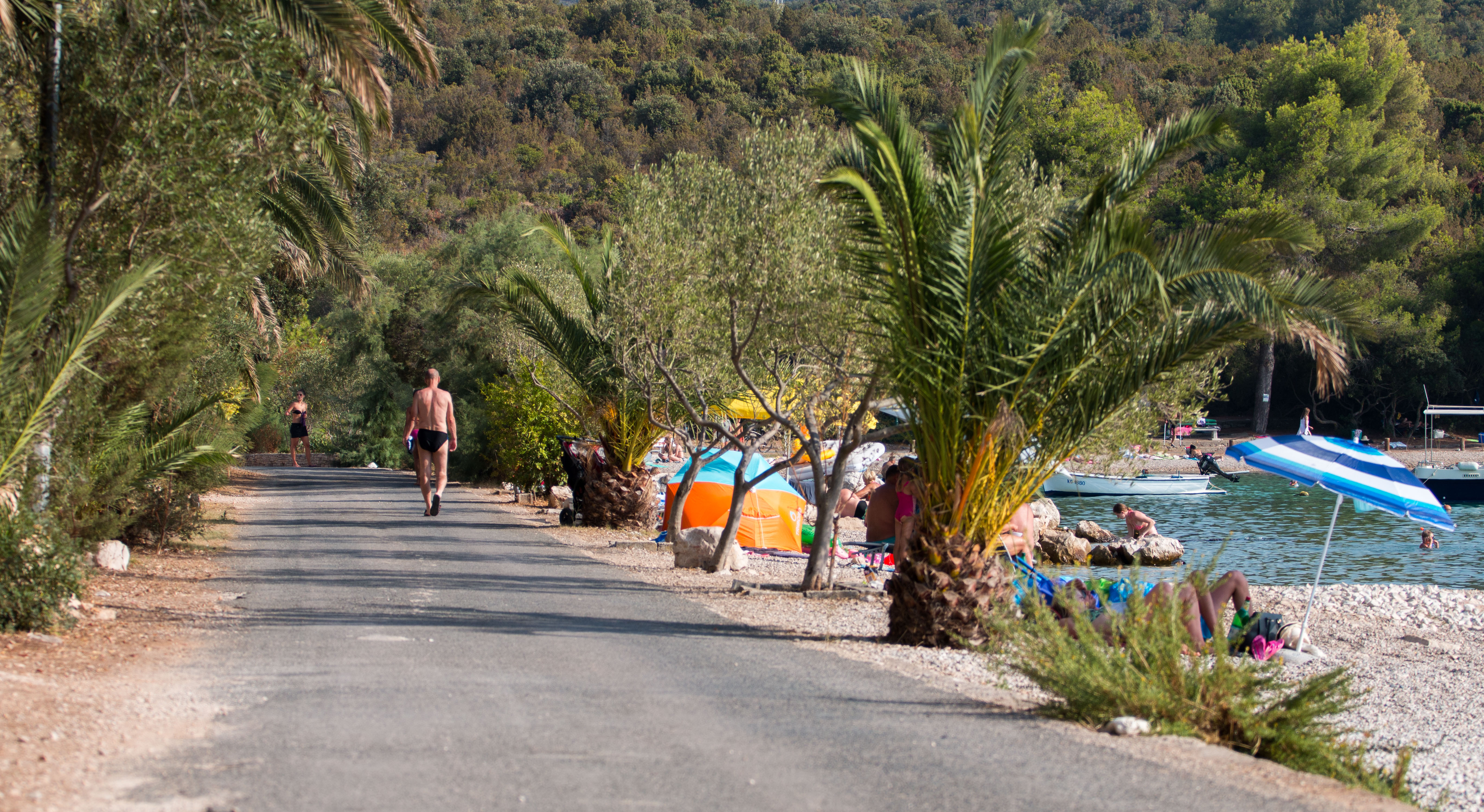
Orebić
This municipality with about 1500 residents spreads from the old part of town along the seashore inland, with numerous new homes and bed and breakfasts constructed behind this narrow belt. The coastal part of the town boasts Baroque homes of the Orebić sailors, with large gardens filled with flowers, trellis-work and exotic tree species. For centuries, the main economic activity here was shipping, and generations of local families produced distinguished captains of sailing ships, later steamships and today,large motor ships. In 1865, the Pelješac Maritime Society (Associacione Marittima di Sabioncelo – AMSD) was founded, which soon had 33 sailing ships for transatlantic sailing, and they opened their own shipyard in Orebić.
In the centre of town is the Church of Christian Aid from the 19th century, and not far is the old municipal building, where the reading room and library are situated on the main floor and where the Maritime Museum, founded in 1957, is located. The museum has a valuable archaeological collection of many models, ships, photographs of sailing ships, portraits of the captains and various maritime equipment and maps, as well as documents relating to shipping and the Orebić families.
Not far away, above the dense pine and cypress woods, the Franciscan monastery with its Church of Our Lady of Angels was erected in 1475 on a nearby cliff. Next to the church is the graveyard, called the “Captain’s graveyard”, as many generations of captains and sailors are buried here. The church has a collection of valuable art, including the Mother with Child by the Florence master Fiamiberi, relief in marble and the Mother with Child by Nikola Firentinac and more.
The monastery has its own museum collection with a number of votive paintings from the 17th and 19th centuries, which depict ships in trouble under the protection of the Mother of God. In addition to the art, the monastery also has a small Baroque loggia-viewing point, which offers a unique view of the Pelješac Channel, the archipelago of islets, the city and island of Korčula, and towards the east offers views of the Pelješac peninsula and the island of Mljet.
The residents here still work in shipping, as well as in tourism: there are a large number of bed and breakfasts and vacation homes, along with a number of large hotels and campgrounds, all directly near to pebble beaches and pine forests.
Information
Orebić Tourist Board
Zrinsko Frankopanska 2
20250 Orebić
info@visitorebic-croatia.hr
www.visitorebic-croatia.hr
Tel: +385 (0) 20 713718
Fax: +385 (0) 20 714001
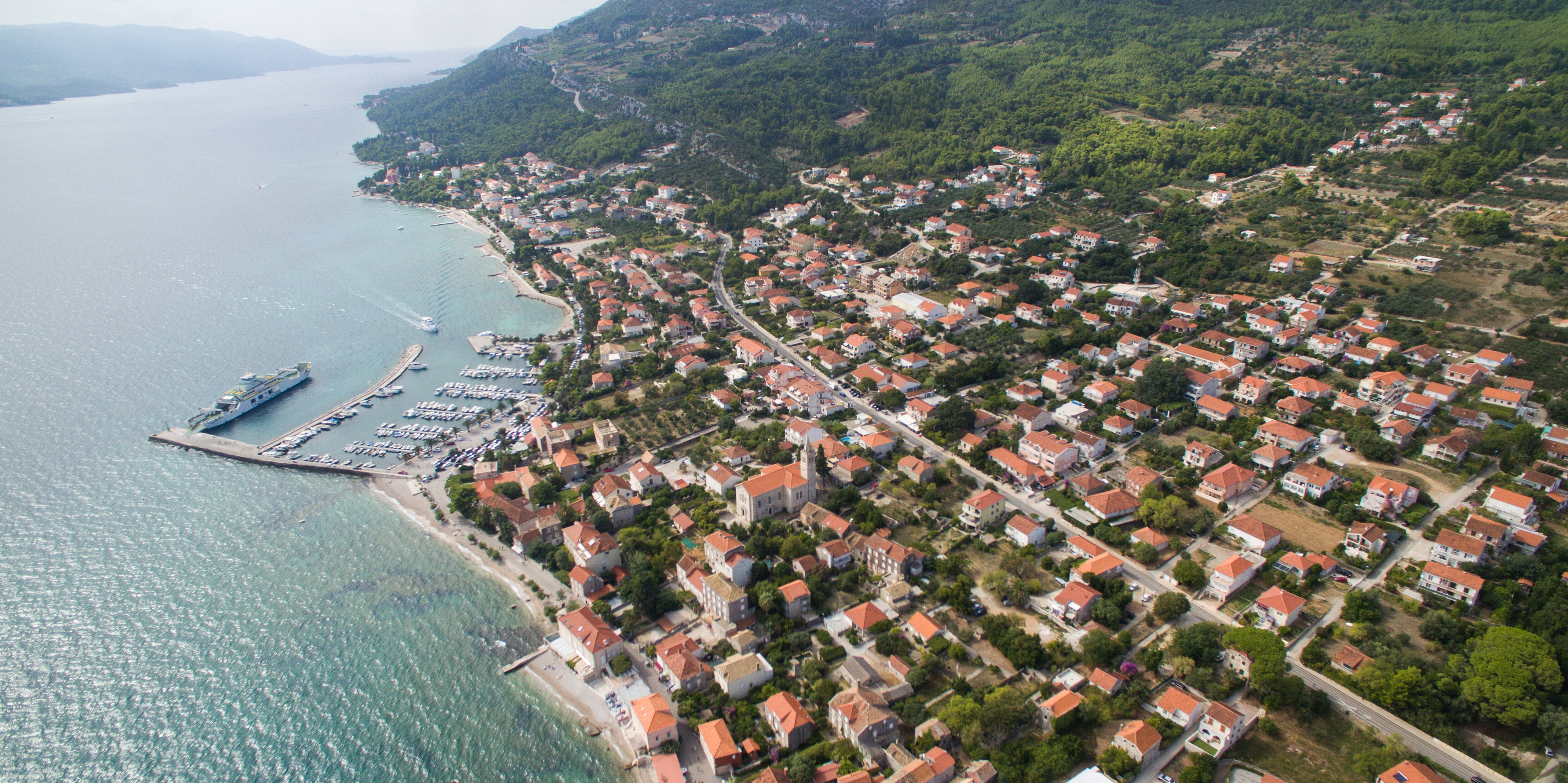

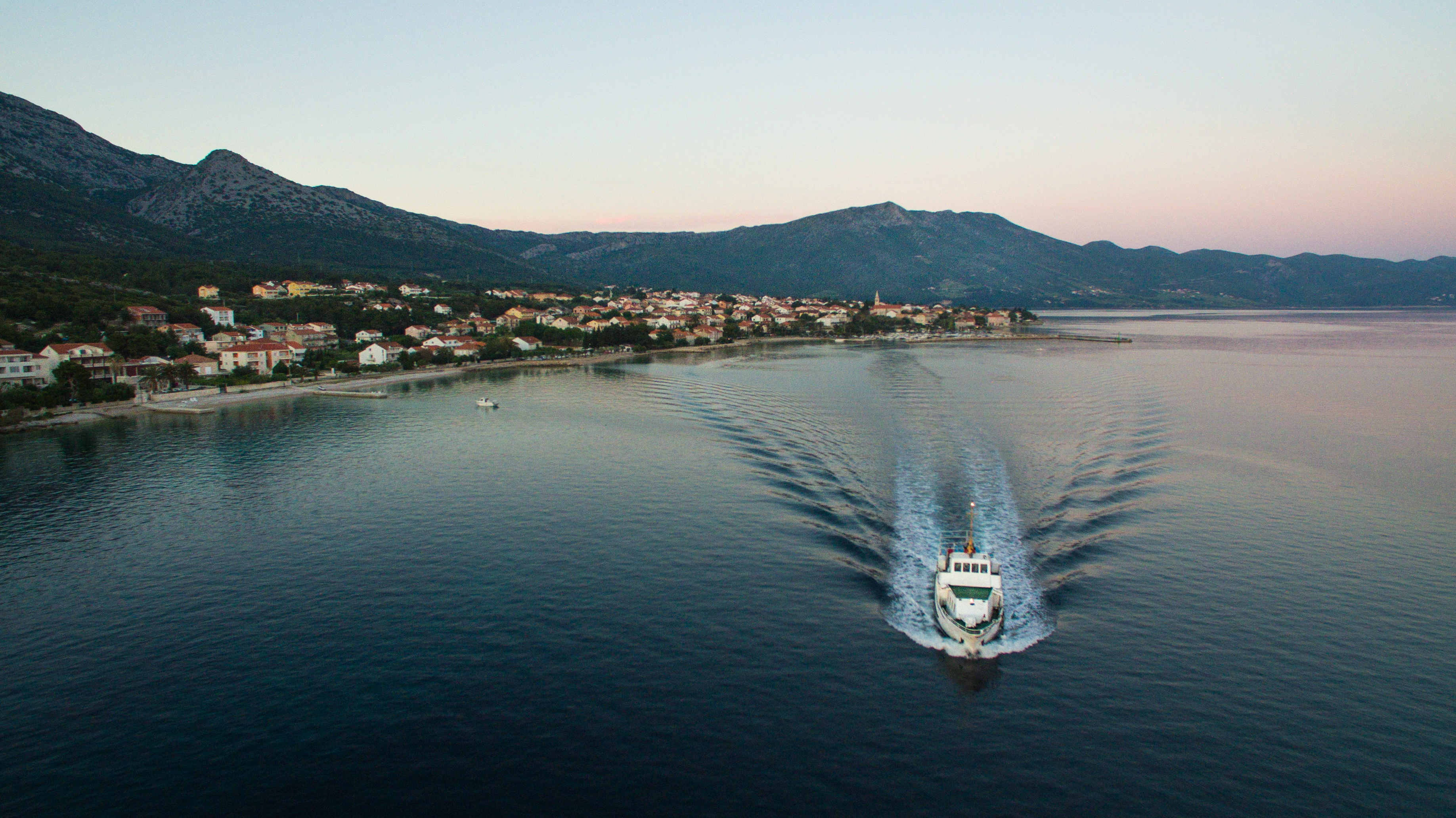
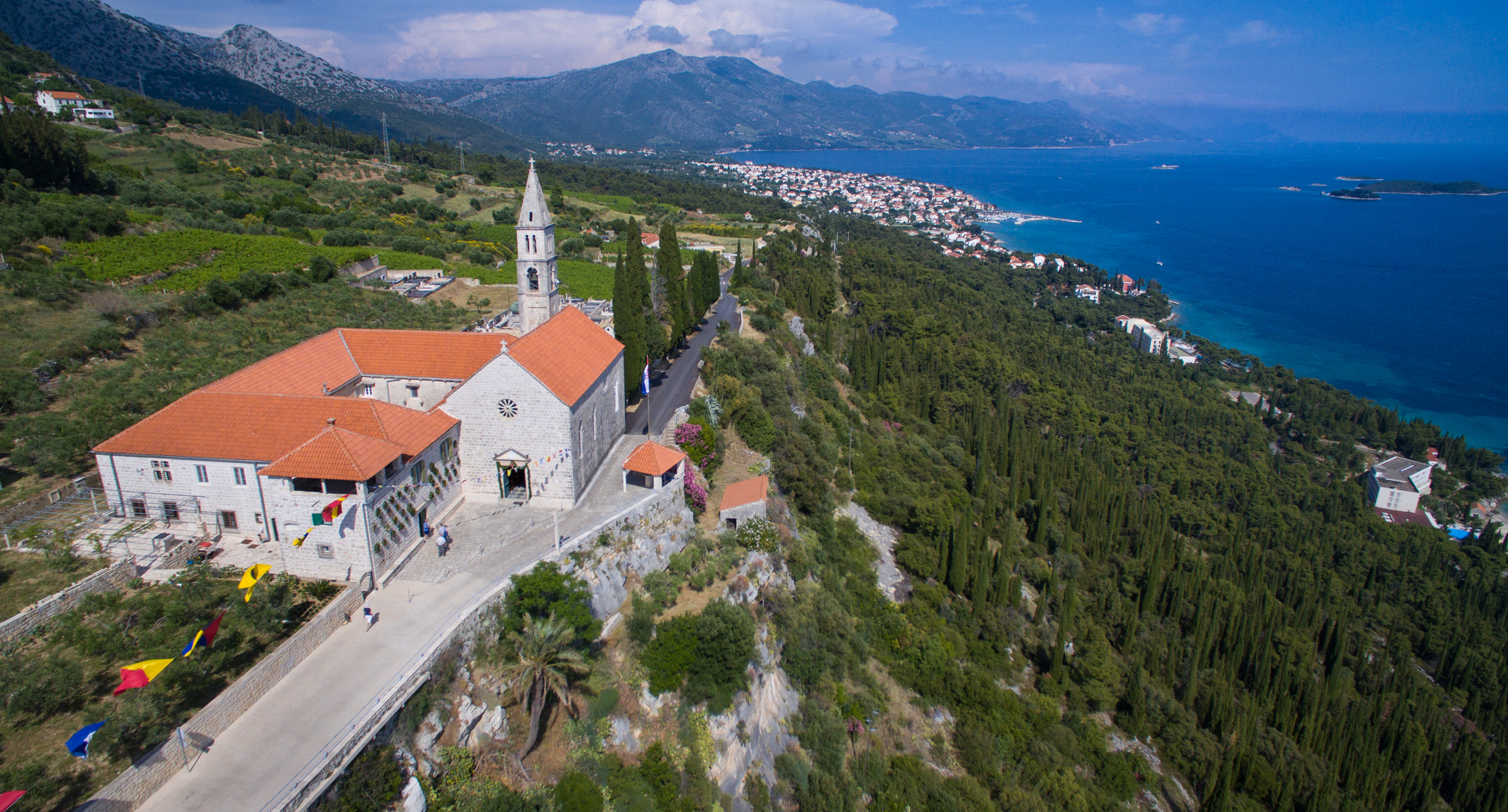
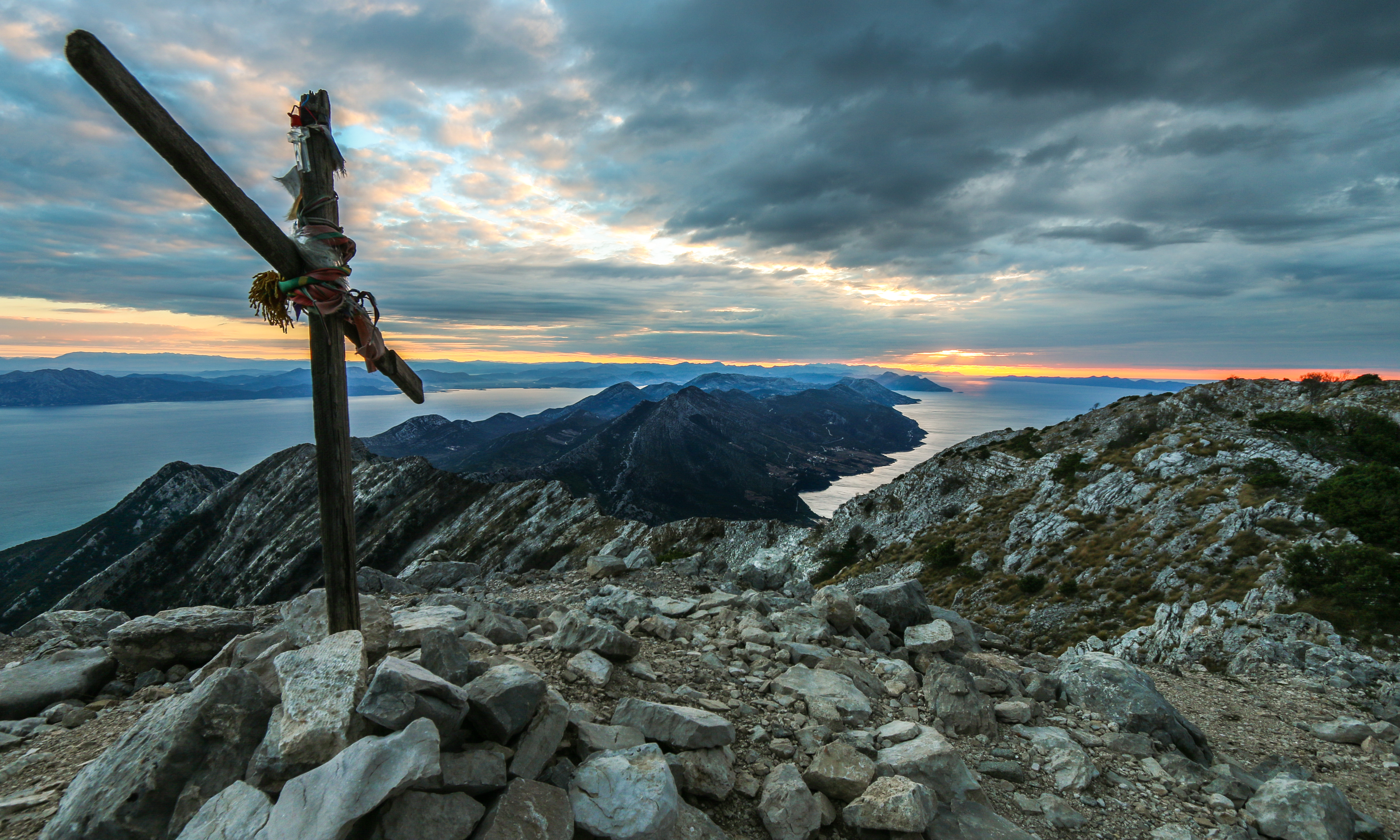

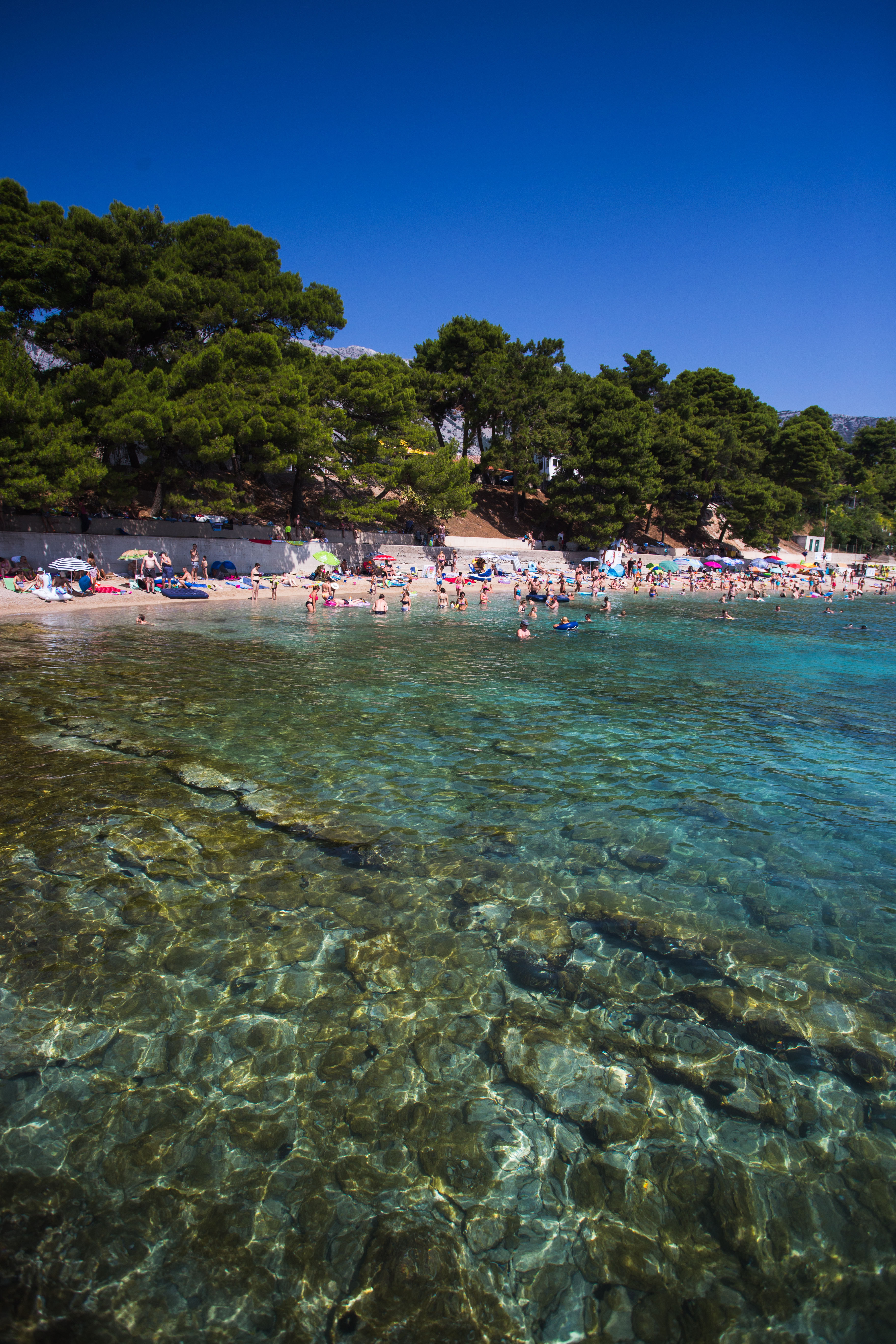
Oskorušno
This settlement in the interior of the Peljesac peninsula, 10 kilometres northwest of Janjina is situated at an altitude of 325 metres. The main economic activities are agriculture and livestock breeding. It is situated on the regional highway which stretches the length of the peninsula.
Information
Orebić Tourist Board
Zrinsko Frankopanska 2
20250 Orebić
info@visitorebic-croatia.hr
www.visitorebic-croatia.hr
Tel: +385 (0) 20 713718
Fax: +385 (0) 20 714001
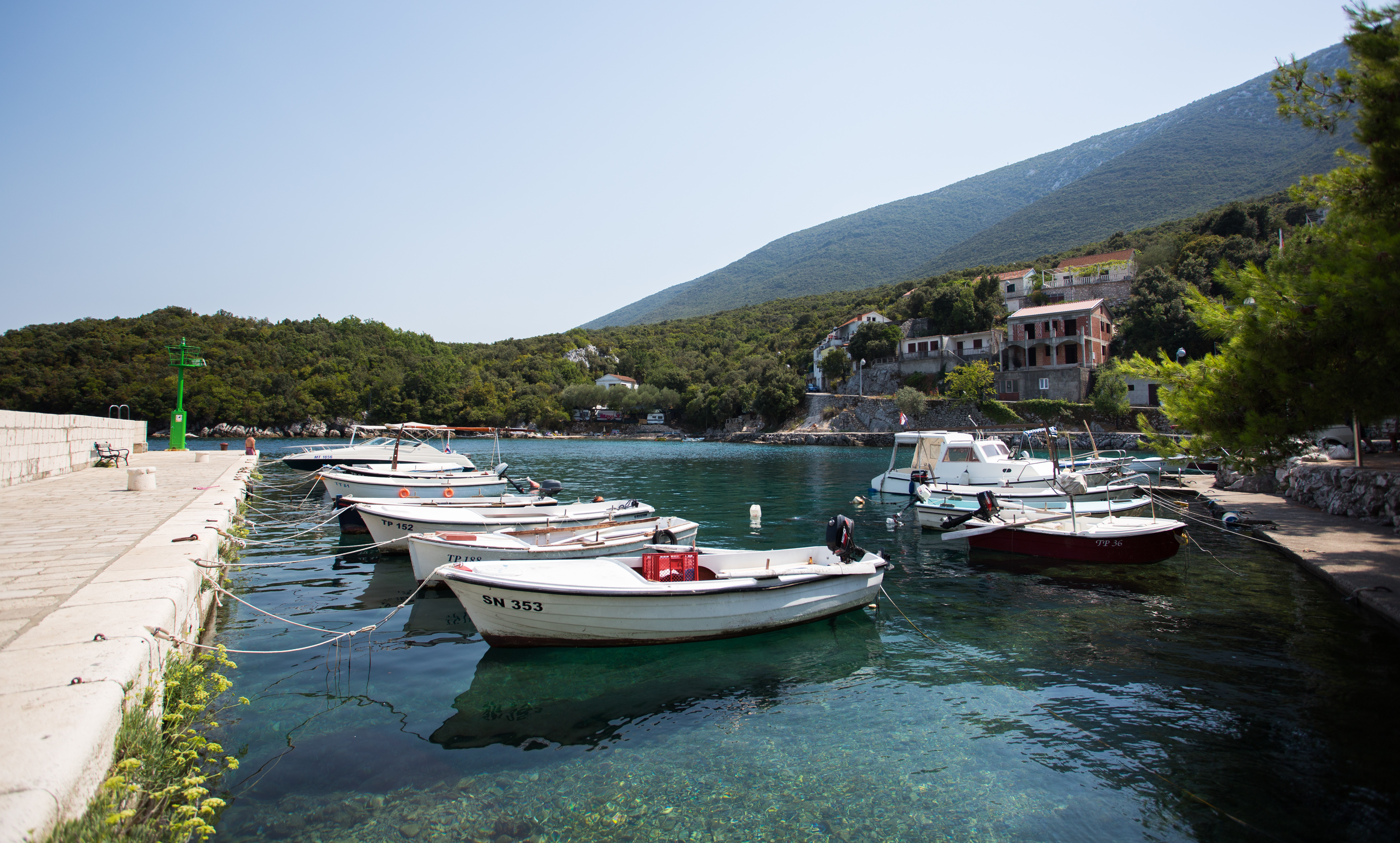
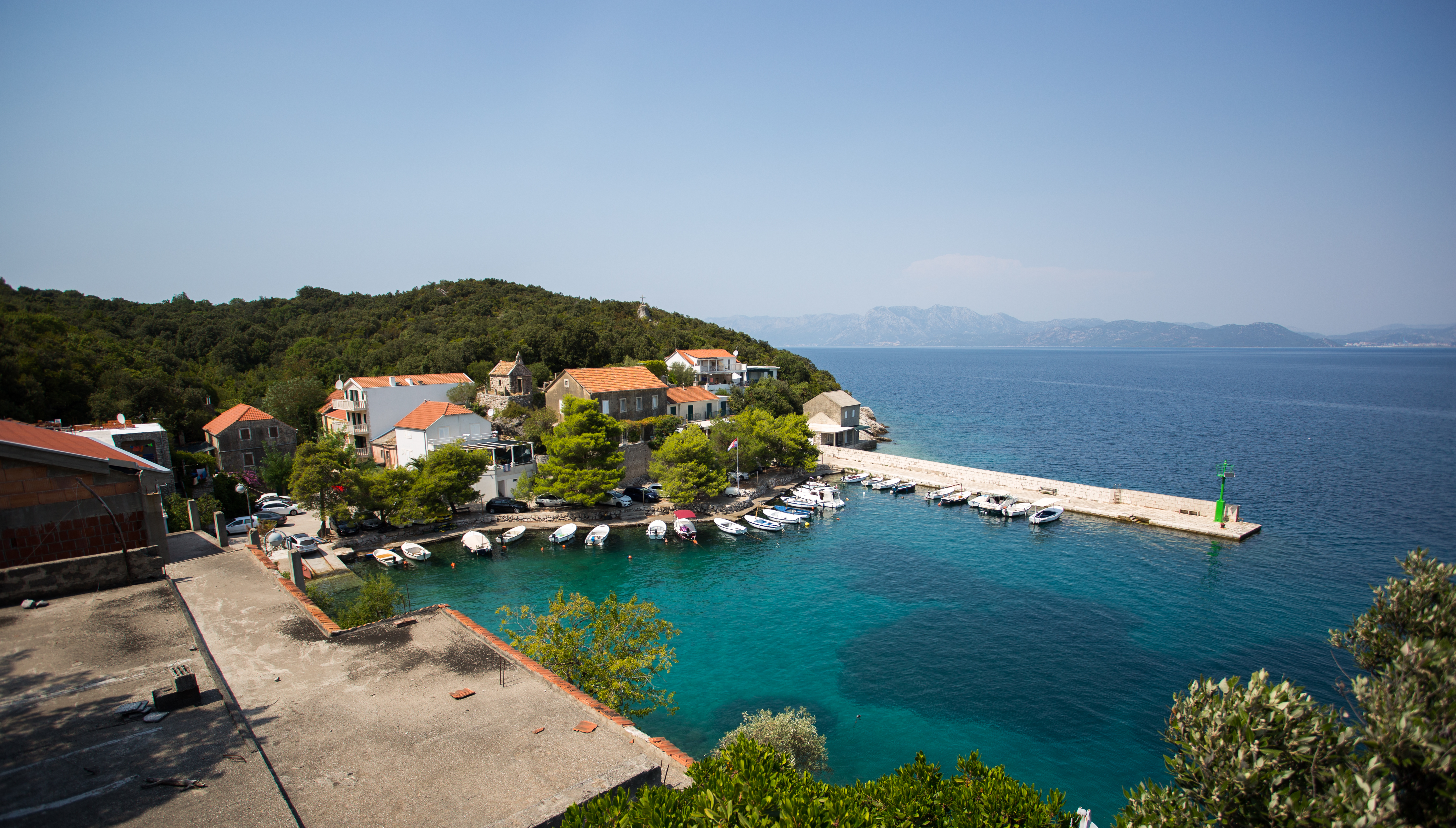
Osobjava
This settlement and inlet in the central part of the northern coast of the Pelješac peninsula is 4 kilometres north of Janjina. The main economic activities are agriculture and fishing. The coastline is very steep, rocky and poorly developed, with only a few small coves. The inlet is a docking area for small yachts. The town is on a side road of the regional highway which stretches the length of the peninsula.
Information
Janjina Tourist Board
20246 Janjina
info@tzjanjina.hr
www.tzjanjina.hr
Tel: +385 (0) 20 741130
Fax: +385 (0) 20741005
Potomje
This settlement in the central part of the interior of the Pelješac peninsula lies 15 kilometres southeast of Orebić at an altitude of 50 metres. The main economic activities are agriculture and wine making. It is situated in the western portion of the Dingač wine region, well known for its excellent wines and wine products. It is on the regional highway.
In recent times, a tunnel was drilled from Potomje to the coast, and as such the coastal settlements under the Dingač slopes have become exceptionally attractive swimming spots.
Information
Orebić Tourist Board
Zrinsko Frankopanska 2
20250 Orebić
info@visitorebic-croatia.hr
www.visitorebic-croatia.hr
Tel: +385 (0) 20 713718
Fax: +385 (0) 20 714001
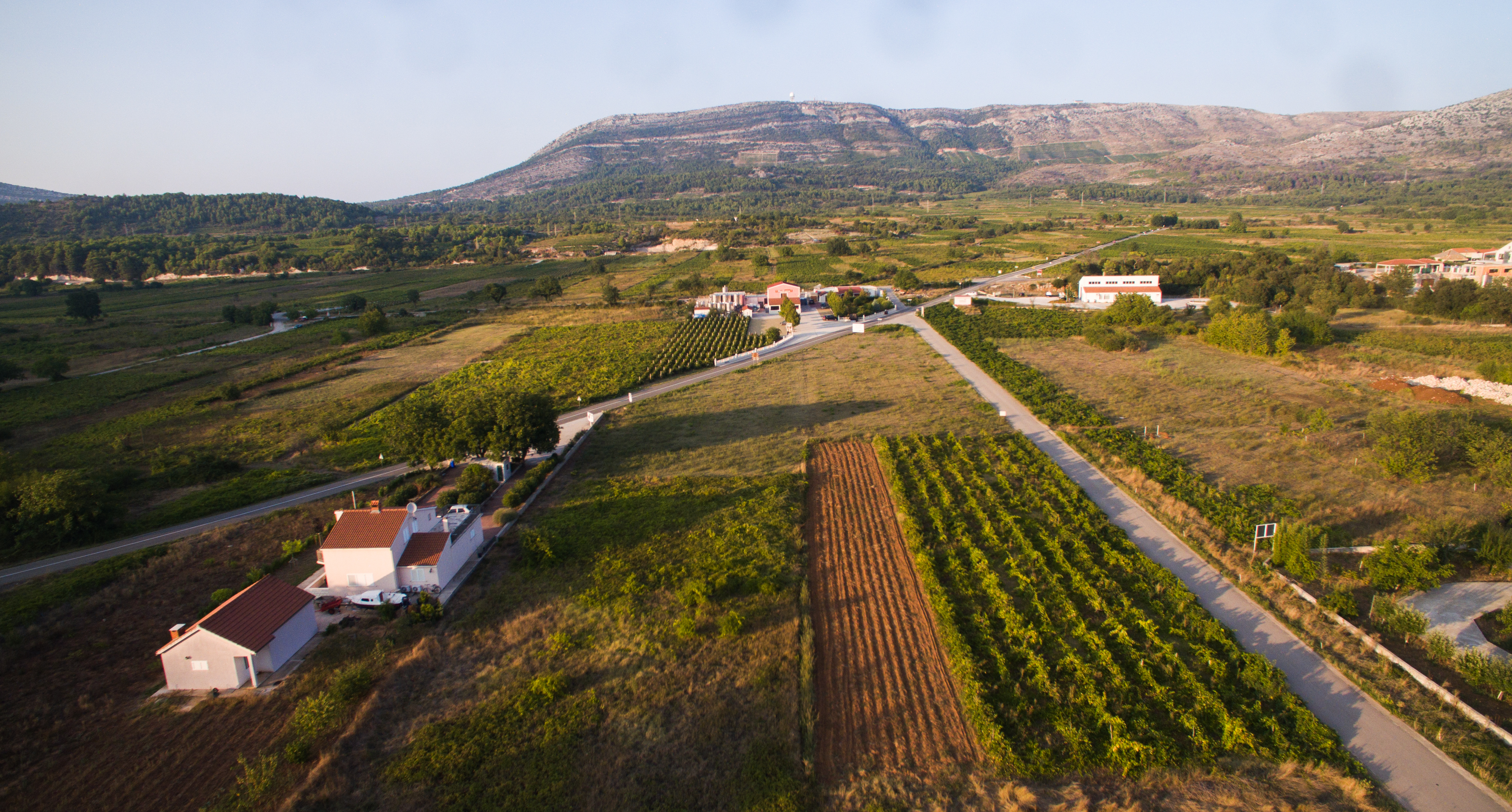
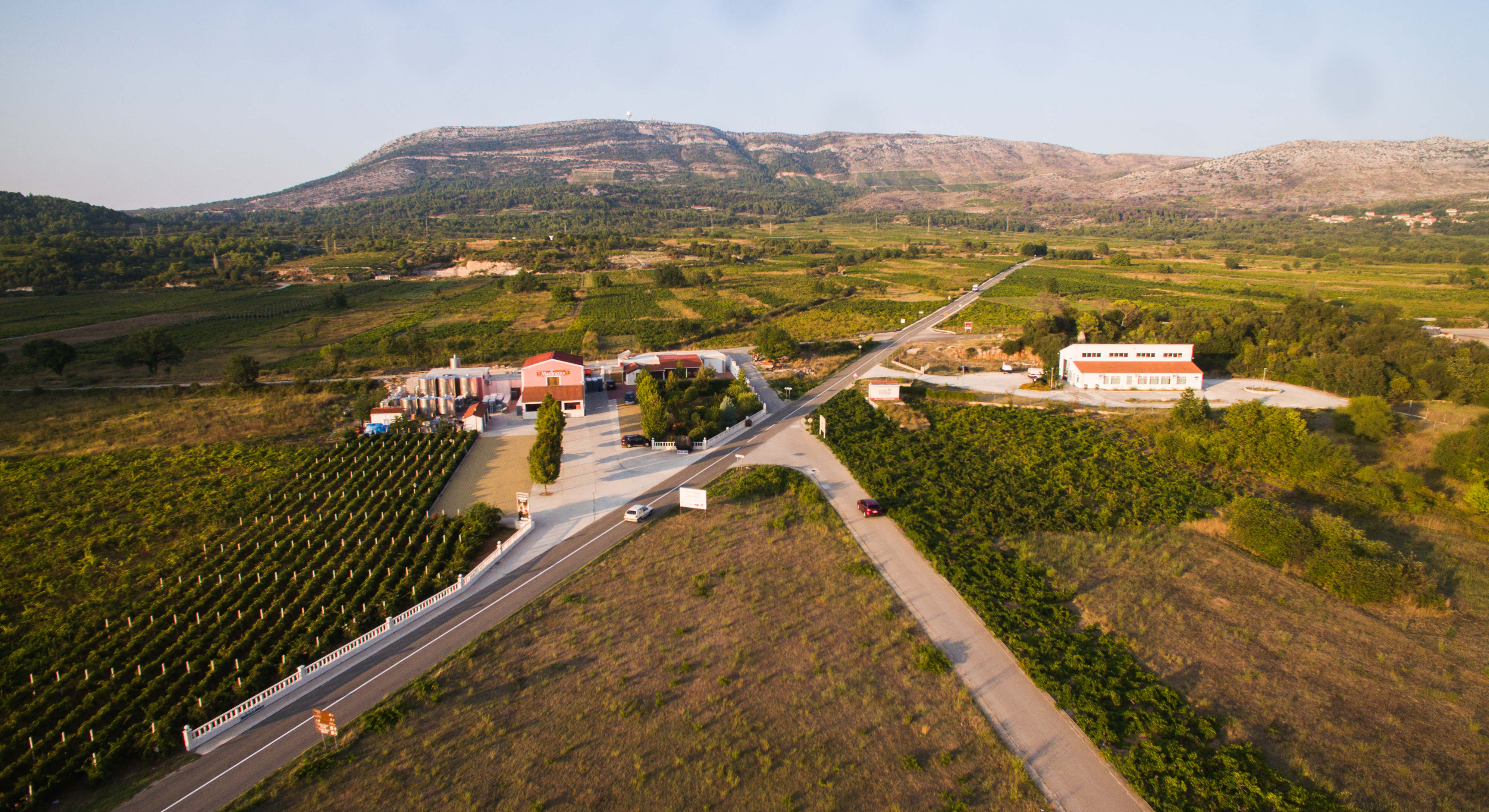

Putnikovići
Welcome to Putnikovići, a picturesque village in the interior of the Pelješac peninsula. This soil, warmed by the sun, is perfect for growing grapes for top quality wines, while the nearby olive groves give golden-yellow oil full of flavour and aroma.
Information
Ston Tourist Board
Pelješki puti bb, 20230 Ston
tzston@du.t-com.hr
www.ston.hr
Tel / Fax: +385 (0) 20 754452
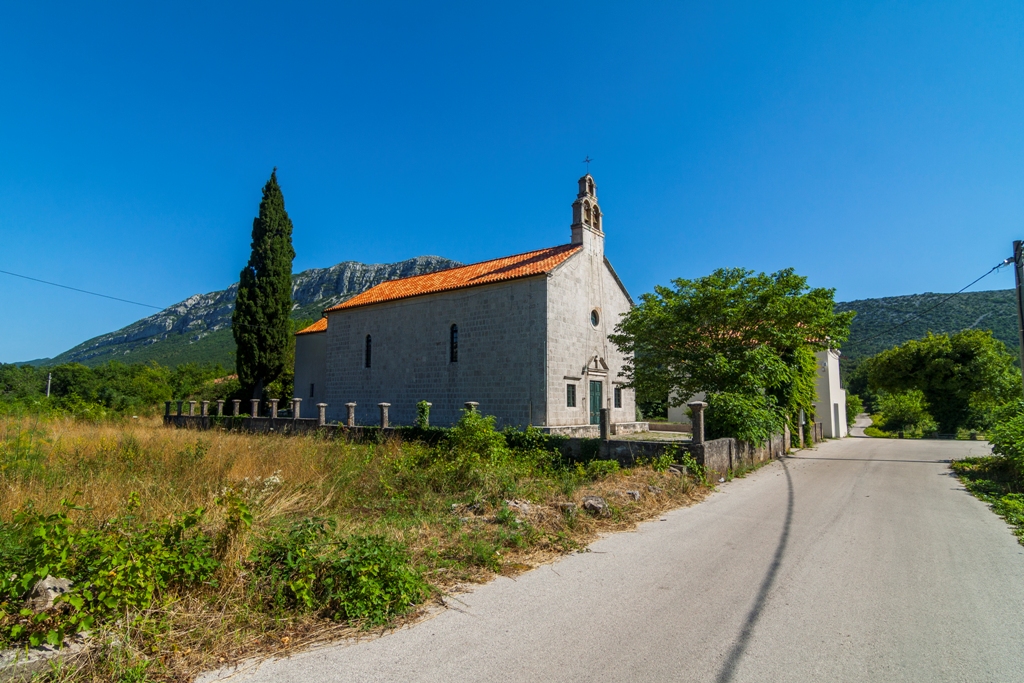
Sreser
Sreser is situated on the southern Dalmatian Pelješac peninsula, some 30 kilometres west of Ston. Throughout history, the peninsula gave many captains and sailors. To tourists, it is well known for the quality of its wines and the true Mediterranean landscape.
Sreser was originally a settlement of fishing homes, considering that fishing was the basis of life, alongside agriculture and wine making. Tourism developed gradually here. The environment will be especially pleasing to hikers and all those with a love for old authentic towns, where the residents still live in the same traditional way.
Information
Janjina Tourist Board
20246 Janjina
info@tzjanjina.hr
www.tzjanjina.hr
Tel: +385 (0) 20 741130
Fax: +385 (0) 20741005
Ston
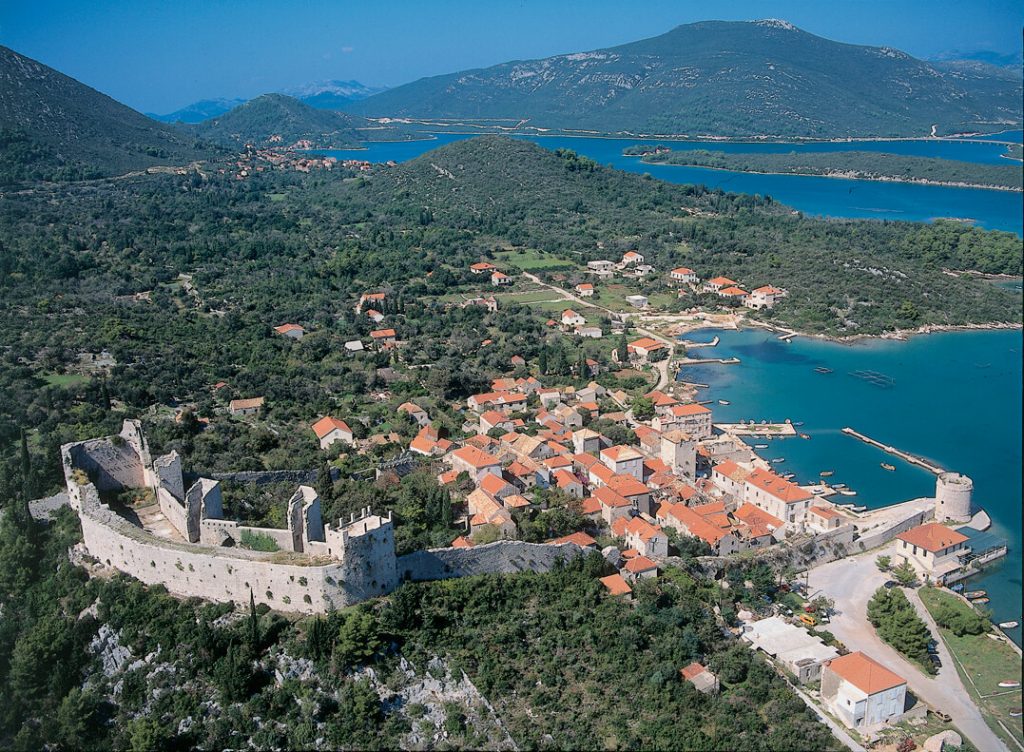 By its economic and strategic significance, Ston was one of the most important towns in the Dubrovnik Republic. This is confirmed by the monumental walls, constructed between the 14th and 15th centuries, and extending over 5 kilometres in length and measuring 5-10 metres in height. The walls were fortified by forty towers and bastions. In the 14th century, the construction of Mali (Little) and Veliki (Ston) began, one on each side of the isthmus, which was of great importance for the defence of Pelješac and the entire western section of the Republic.
By its economic and strategic significance, Ston was one of the most important towns in the Dubrovnik Republic. This is confirmed by the monumental walls, constructed between the 14th and 15th centuries, and extending over 5 kilometres in length and measuring 5-10 metres in height. The walls were fortified by forty towers and bastions. In the 14th century, the construction of Mali (Little) and Veliki (Ston) began, one on each side of the isthmus, which was of great importance for the defence of Pelješac and the entire western section of the Republic.
A large natural salt works is located at the base of the Ston Channel, where sea salt has been produced for centuries – a precious monopoly product of the Dubrovnik Republic. The Mali Ston Channel, at Bistrina, is the location of a shellfish farm. There is also a lovely islet called the ‘Island of Life’.
Not far from Ston is the beautiful bay Prapratno with its centuries-old olive trees, Mediterranean macchia thickets and clean sandy beaches, and the site of one of the loveliest auto camps in this region.
History
In Roman times, Ston bore the name Turris Stagni. Today’s Ston was established in 1333 as soon as Dubrovnik came into possession of the Pelješac peninsula. The city was surrounded by 980 metres of walls with fortresses. The strongest Ston fortress was called “Veliki Kaštio”, with its walls drawn out along the seashore and which bordered towards the sea with the salt works.
This large fortified complex was built by Dubrovnik (1333-1506). The first school in Ston is mentioned in 1389, the first almshouse in 1458 and the orphanage in 1494. Buildings within the walls included the former office of the Dubrovnik Republic, built in the Gothic style, the Gothic palace Sorkočević-Đorđić and the former Bishop’s Palace. The former Rector’s Palace (Renaissance style) was expanded and adapted in the 19th century. On the hill of St. Michael (Mihajlo), there is the well preserved pre-Romantic Chapel of St. Michael (11-12th century) with the remnants of its wall frescos. Next to the church is the stone monument collection, with fragments of braided decoration.
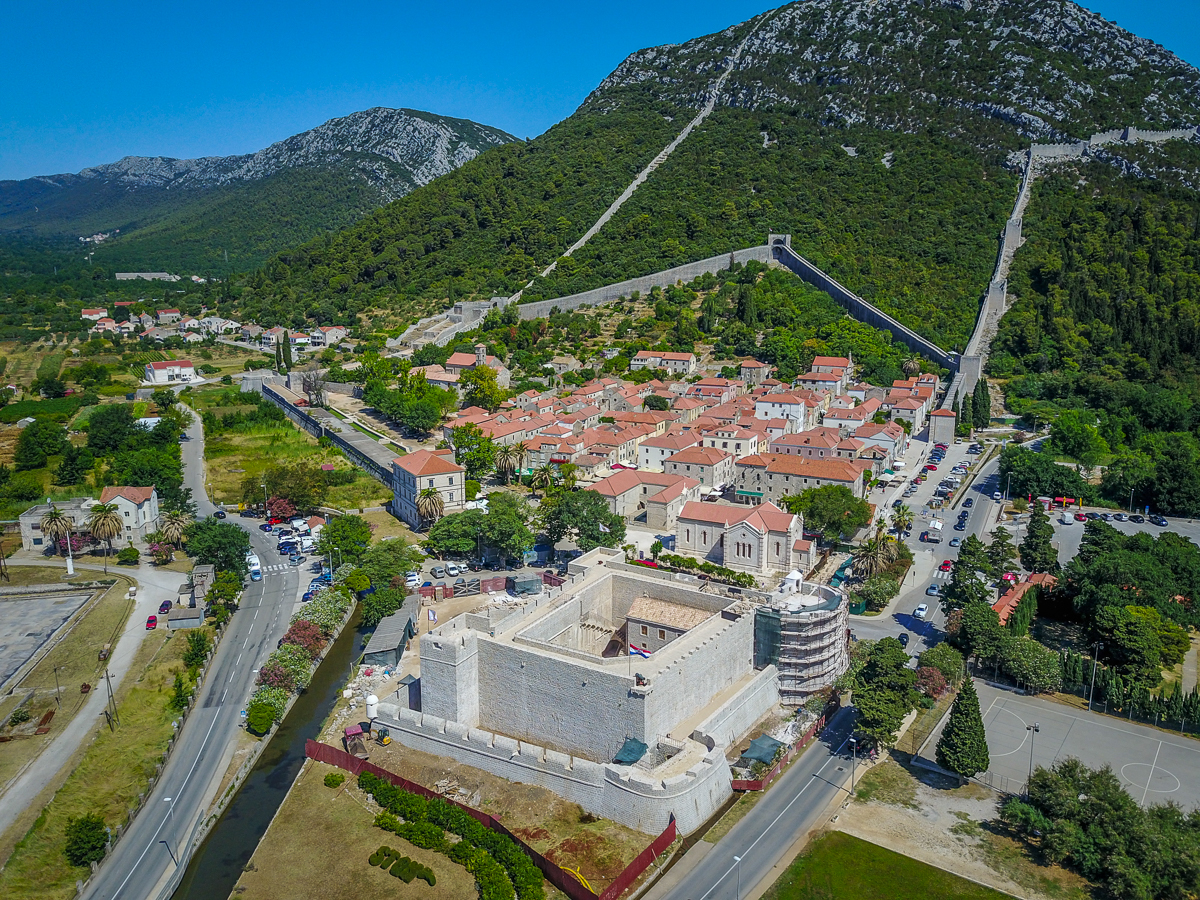
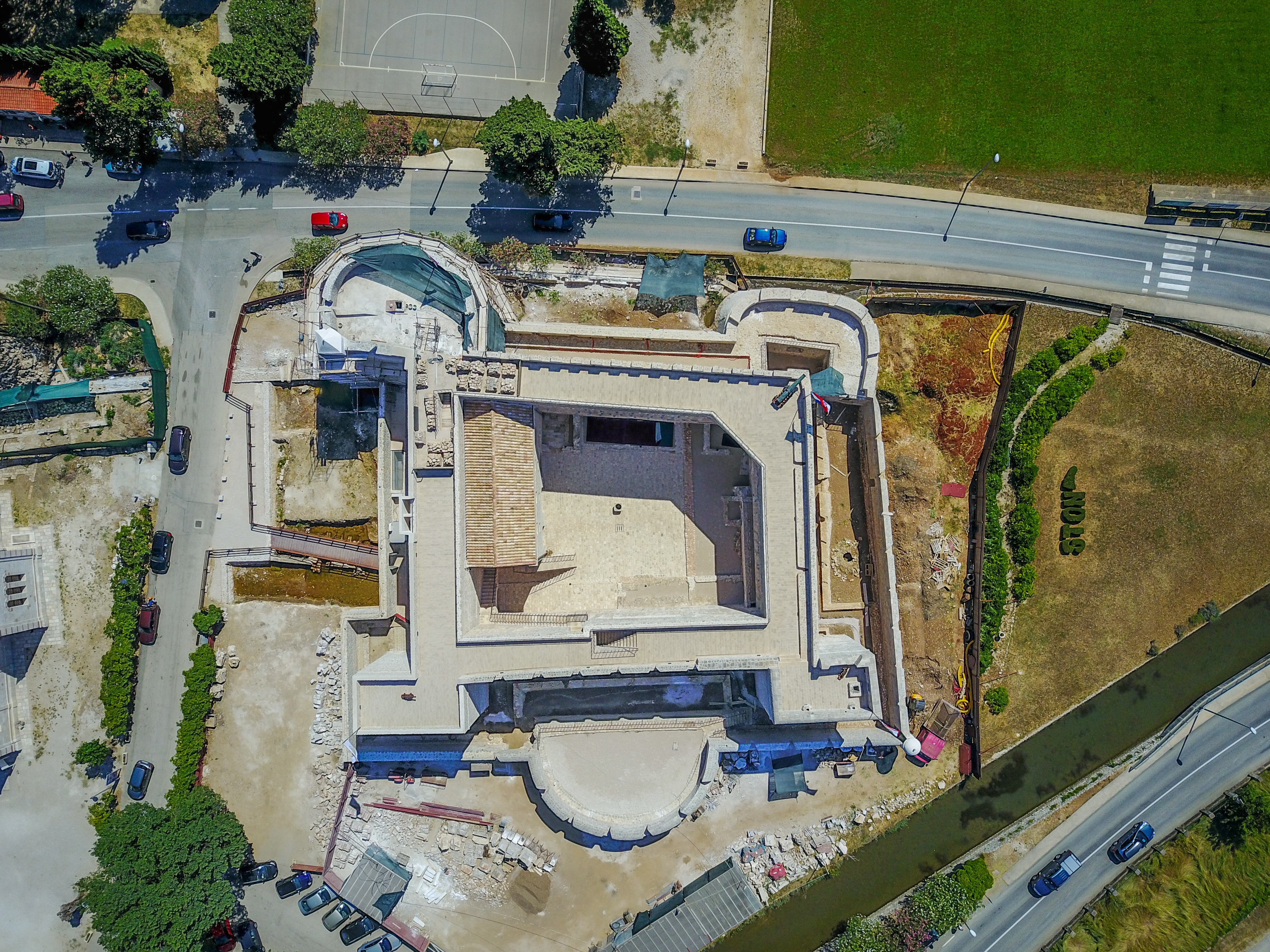
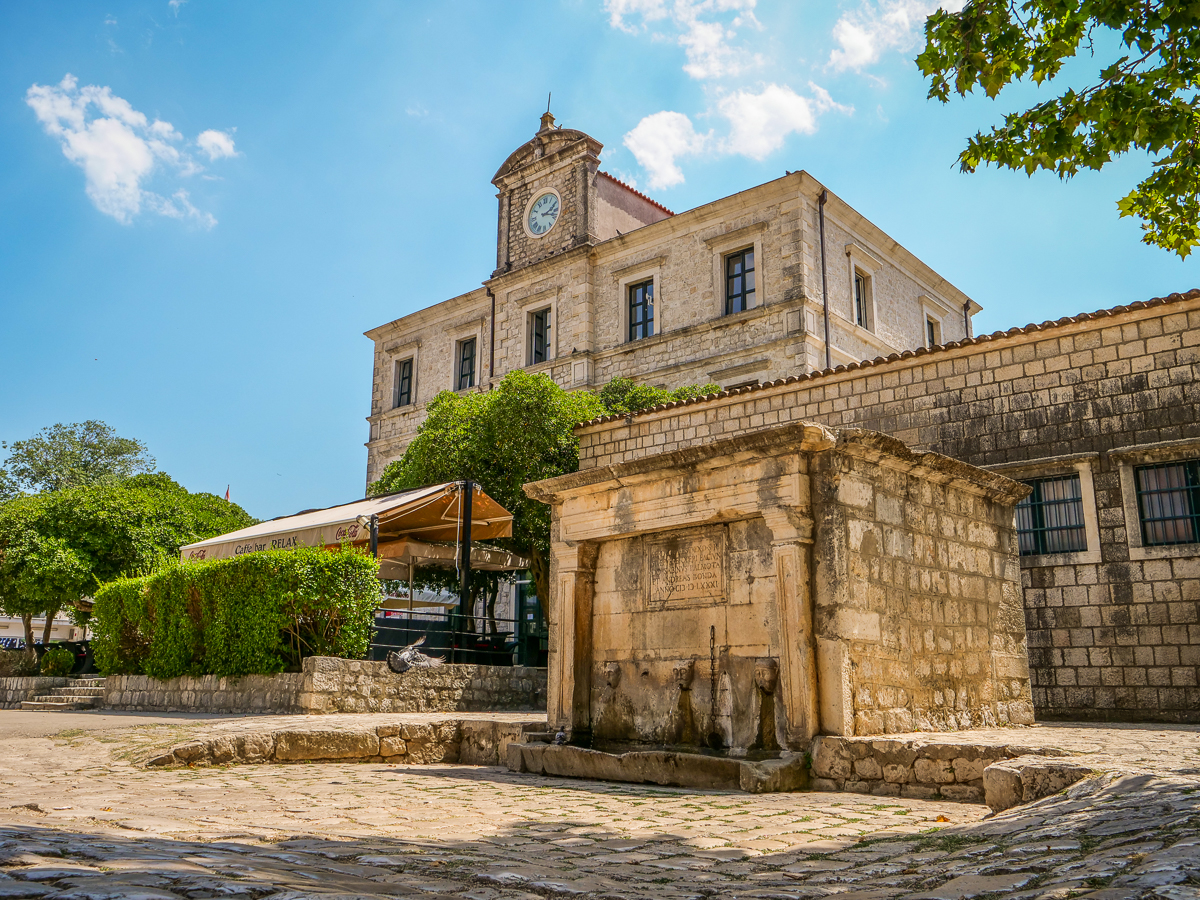
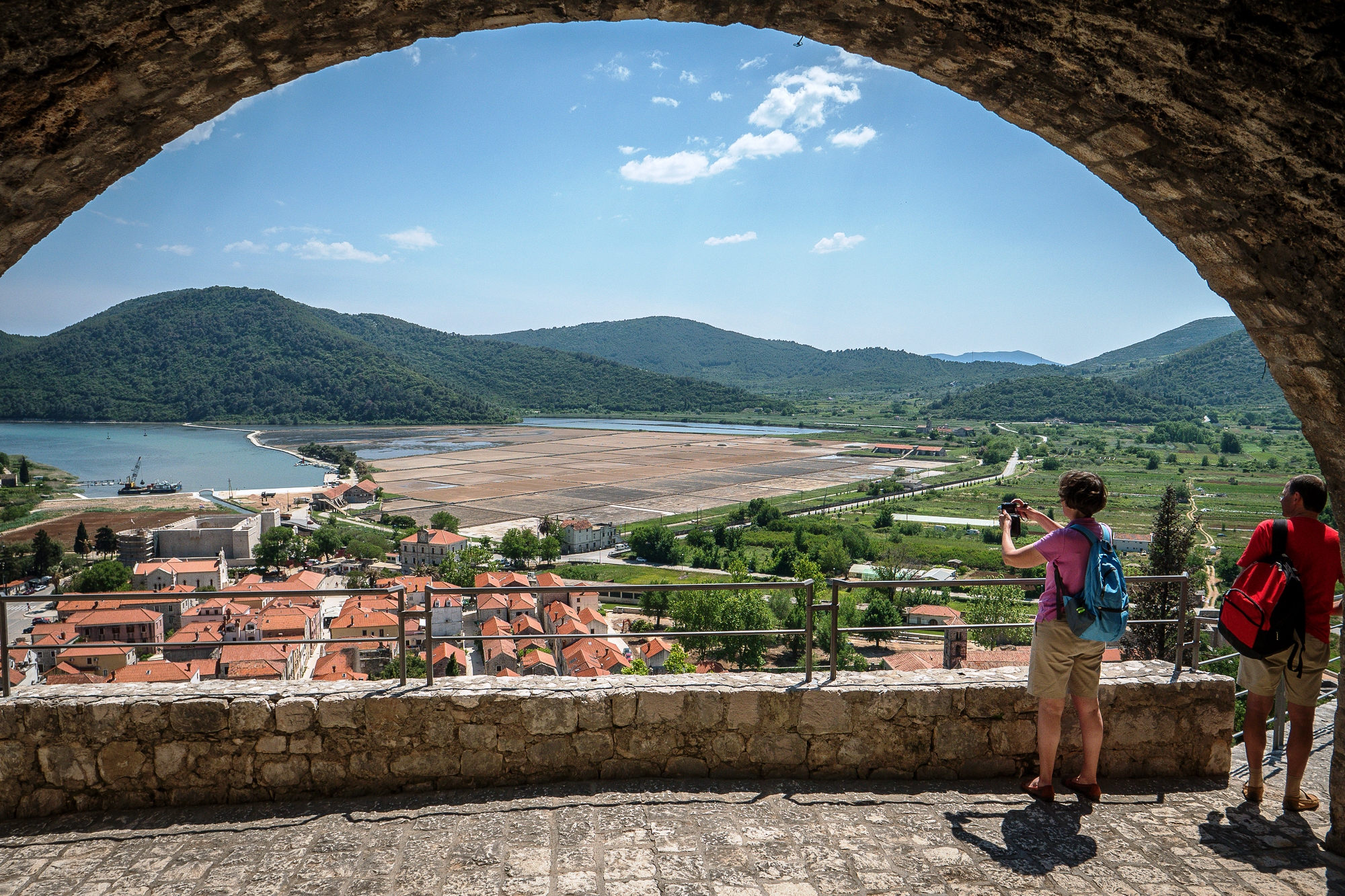
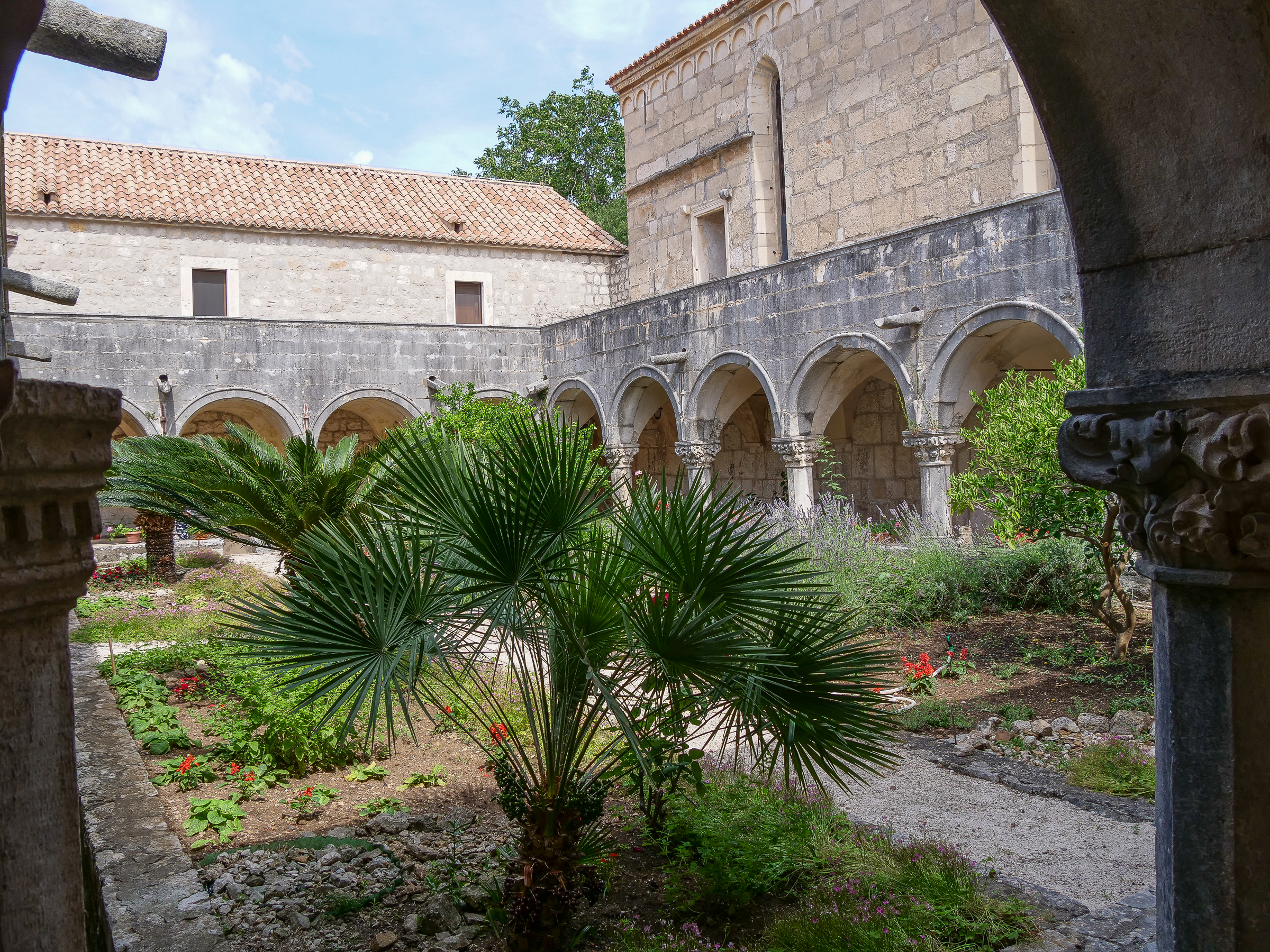
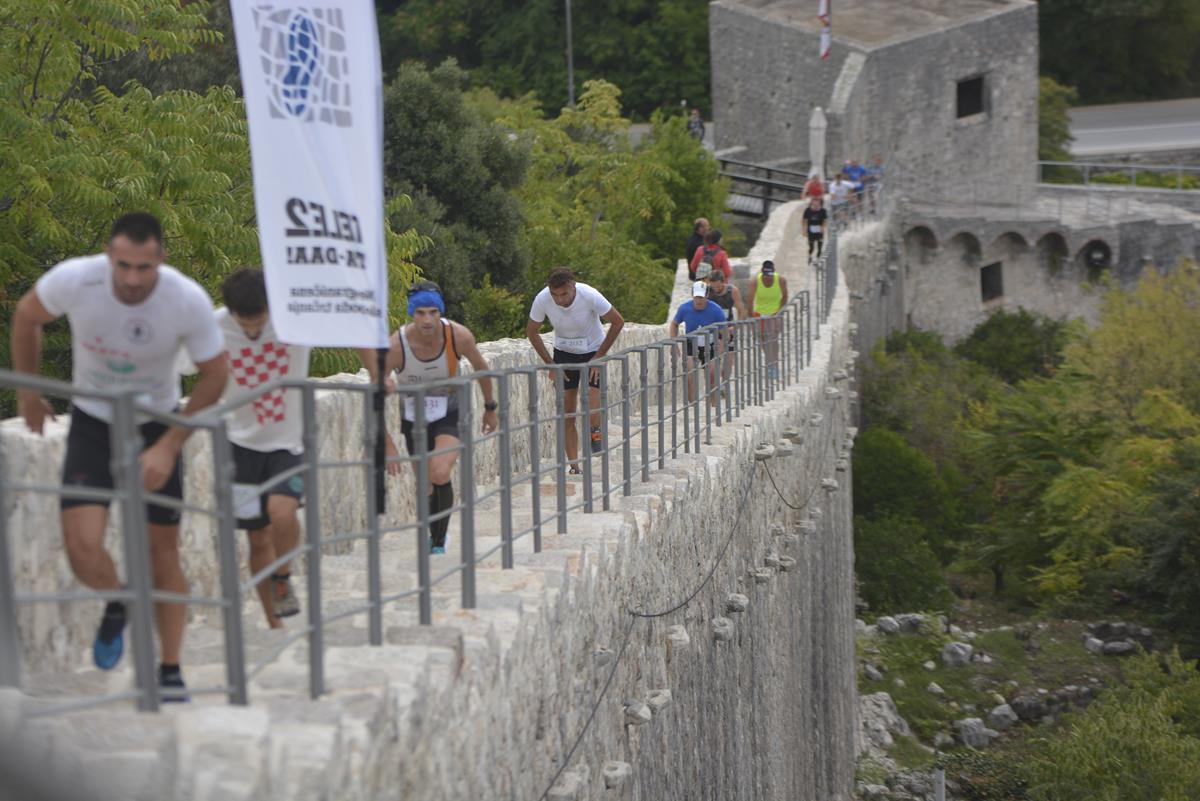
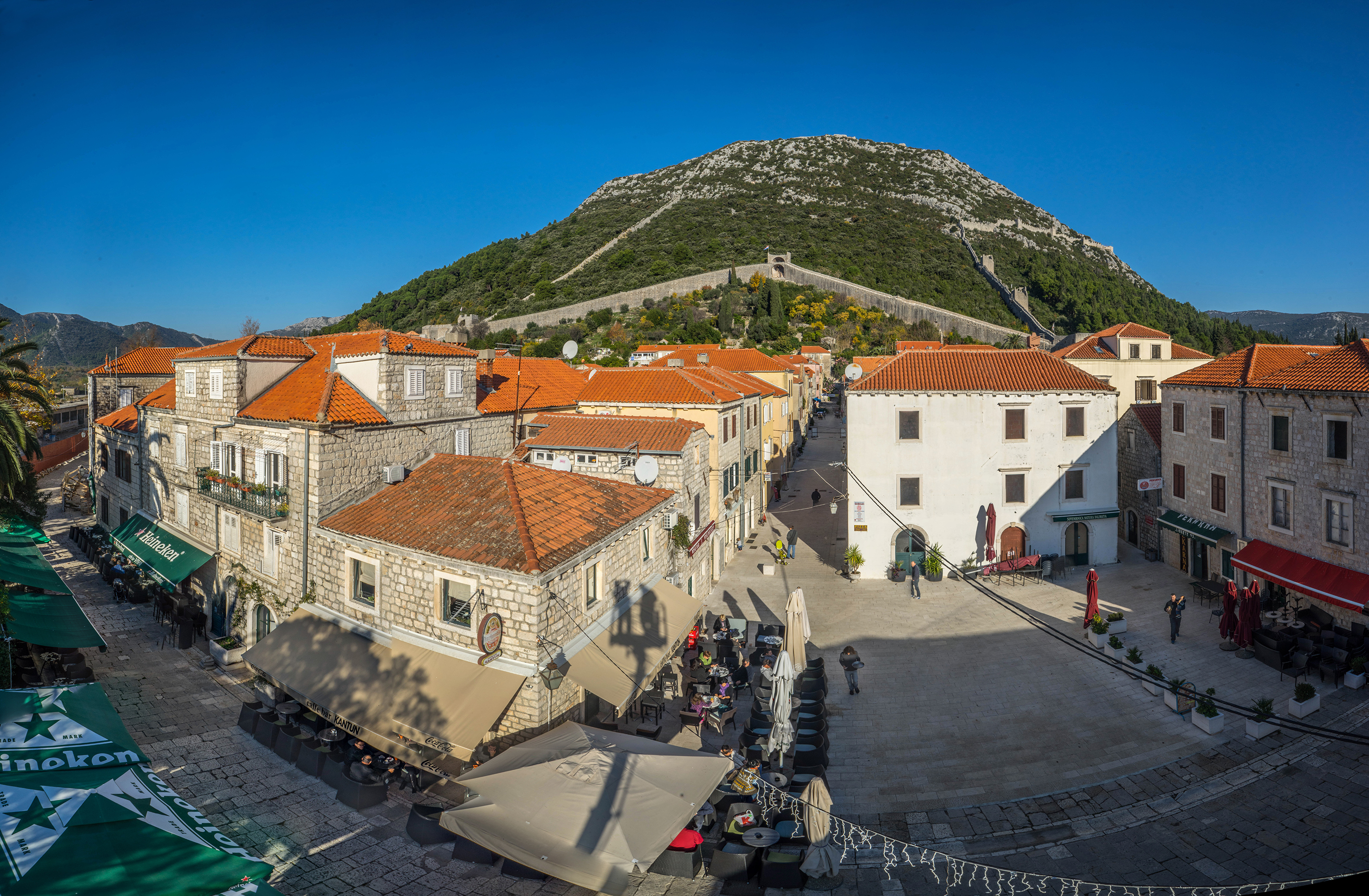
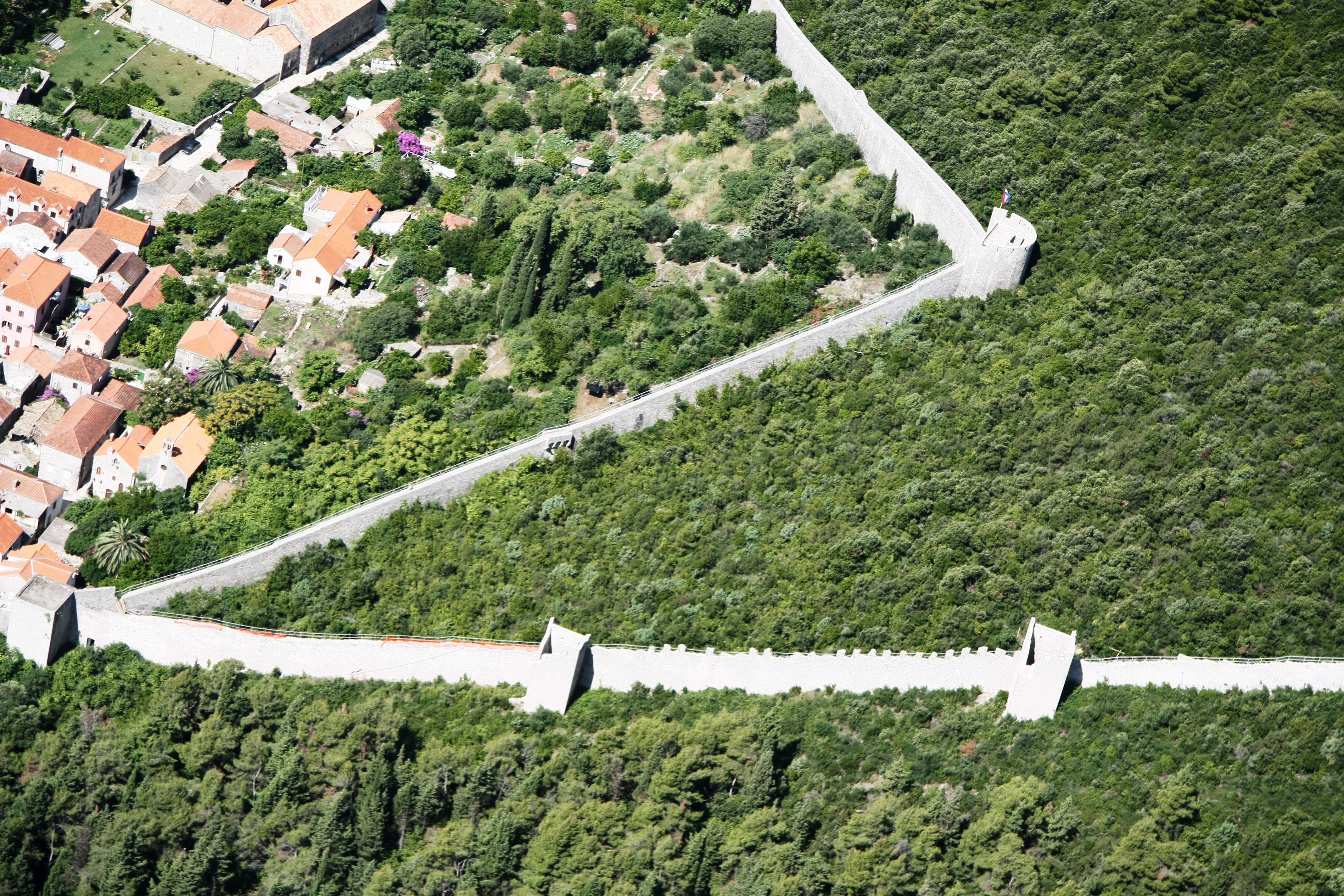
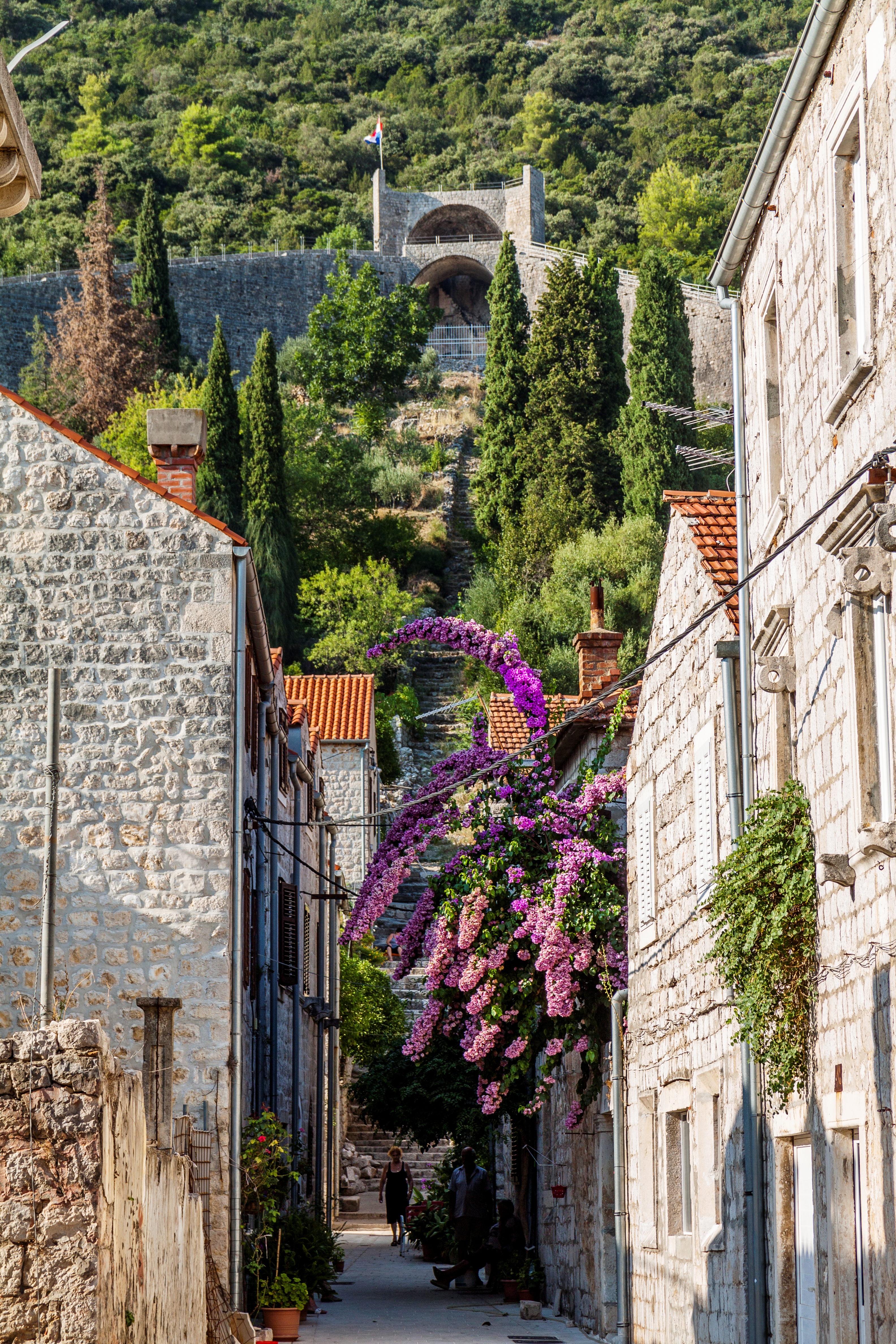
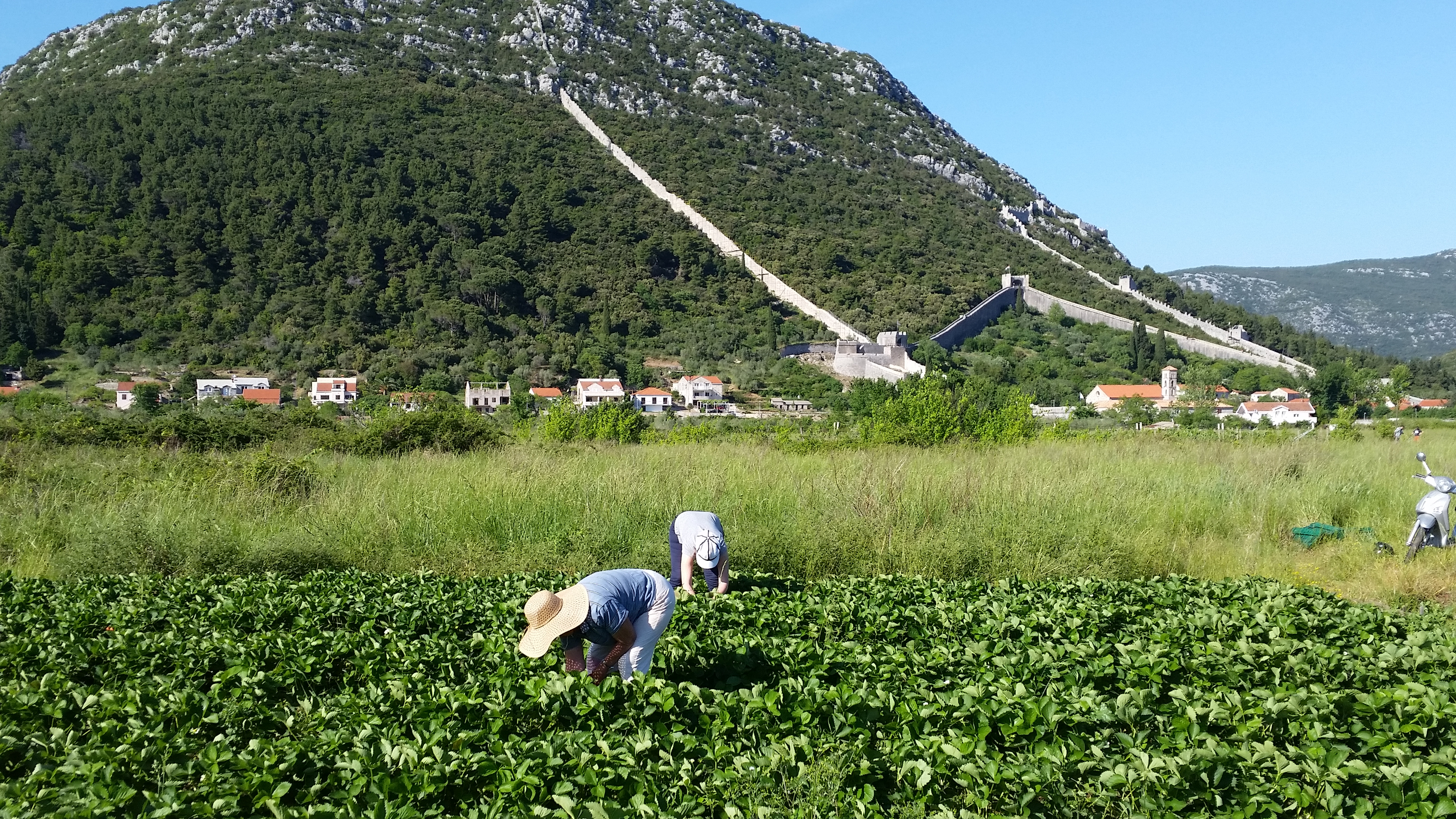
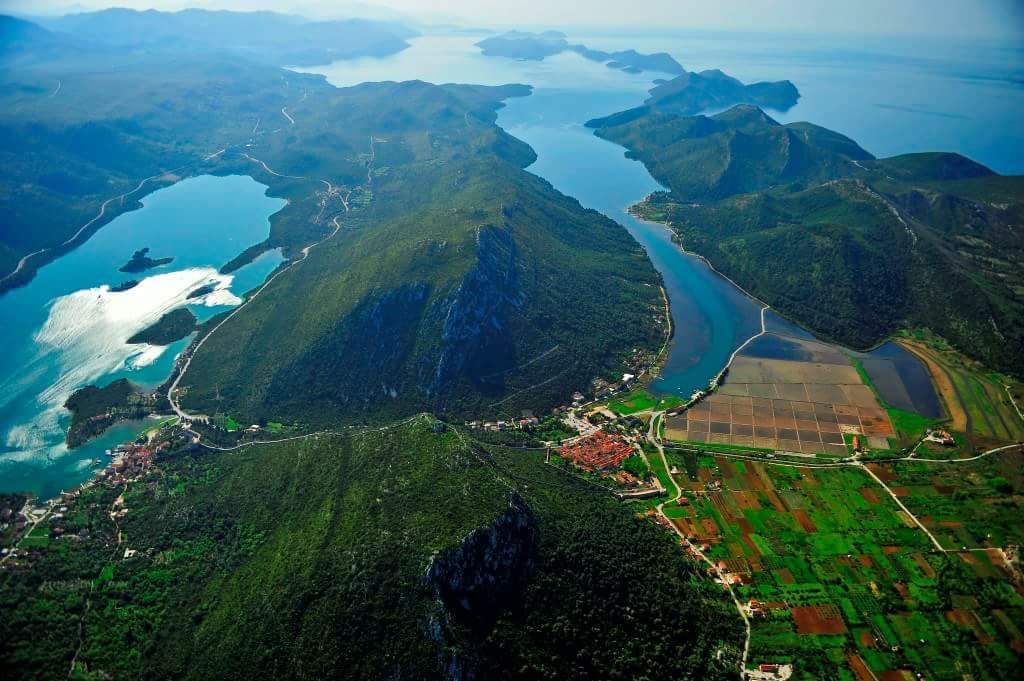
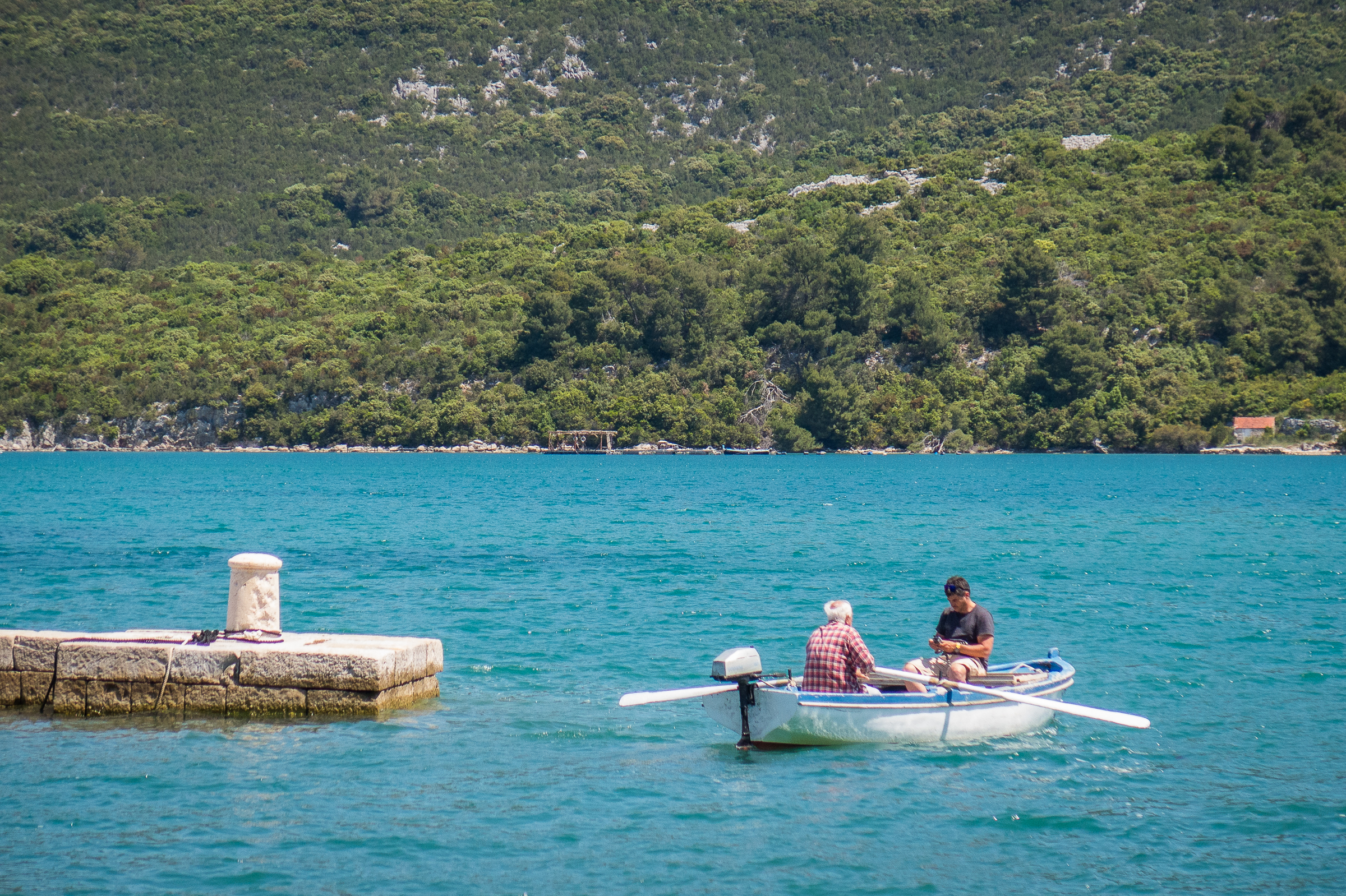
Mali Ston
The gastronomic centre of the county, Mali Ston, the town with the longest walls in Europe is situated near Dubrovnik, and is surrounded by breathtaking scenery which, together with the picturesque city architecture, forms a harmonic entity. Here you can relax in untouched nature, and at the end of the day, try the oysters and mussels from the well-known Ston aquaculture farms.
Brijesta
It is a small tourist town in the inlet of the same name, situated in Mali Ston Bay on the island of Pelješac.
Information
Ston Tourist Board
Gundulićeva poljana 1, 20230 Ston
tzston@gmail.com
www.ston.hr
Tel / Fax: +385 (0) 20 754452
Trpanj
This old, historical fishing village has water springs, dense Mediterranean vegetation and old Renaissance palaces. Above the harbour are the ruins of old fortresses, while there are remnants of mosaics and city walls at the Trpanj graveyard. The Renaissance Church of Our Lady of Karmen has an altar with the crest of the Gundulić family, to which the great poet Đivo F. Gundulić belonged.
Trpanj has good wine cellars, fish-filled waters, clean beaches surrounded by pine woods, numerous small coves and very attractive and pleasant summer resorts. Above all, it has hospitable hosts. Accommodations are available in resorts, in a home-style atmosphere, the ‘Faraon’ Hotel and an auto camp.
Information
Trpanj Tourist Board
Žalo 7; 20240 Trpanj
tzo-trpanj@du.t-com.hr
www.tzo-trpanj.hr
Tel: +385 (0) 20 743433
Fax: +385 (0) 20 743920
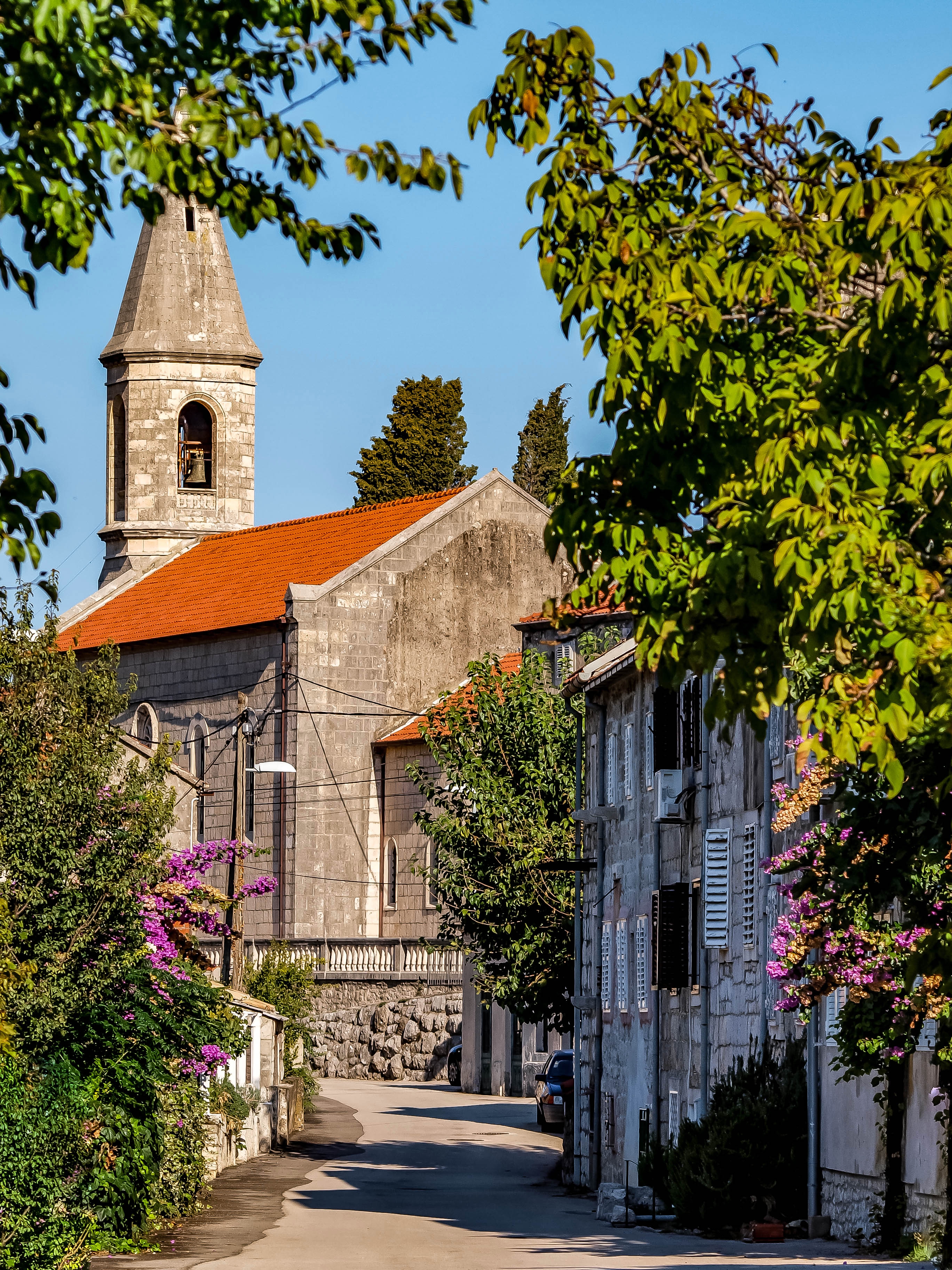
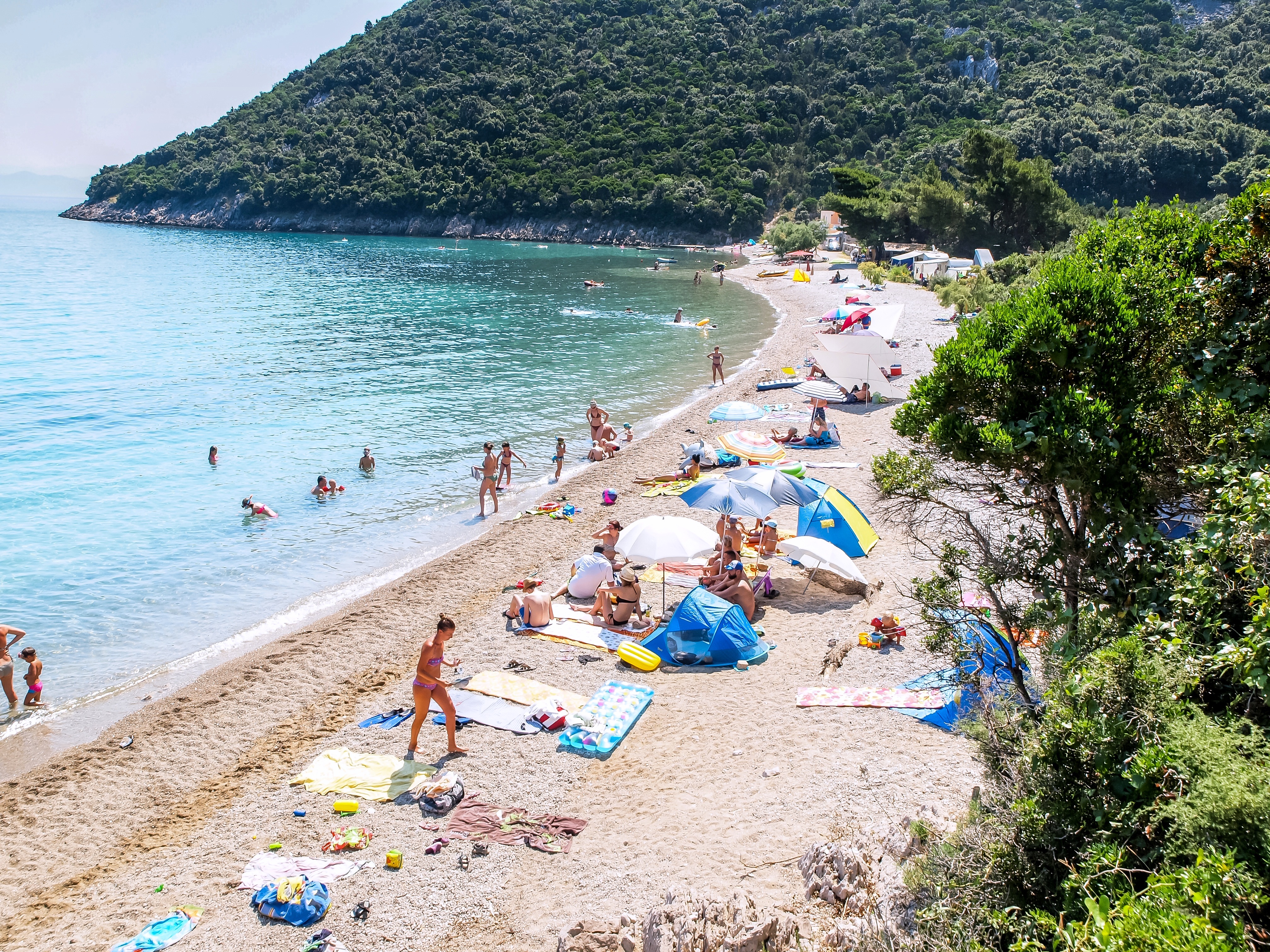
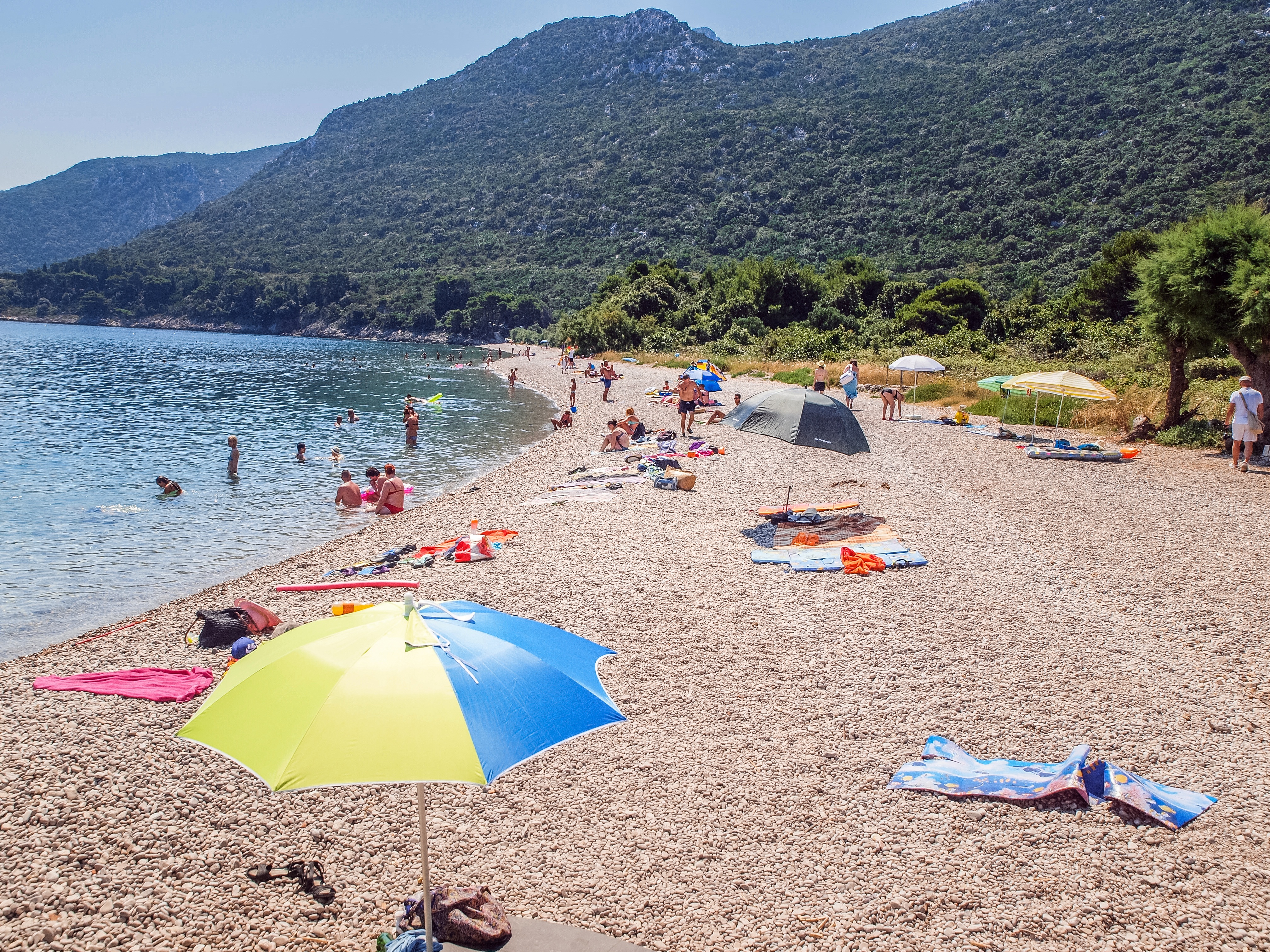
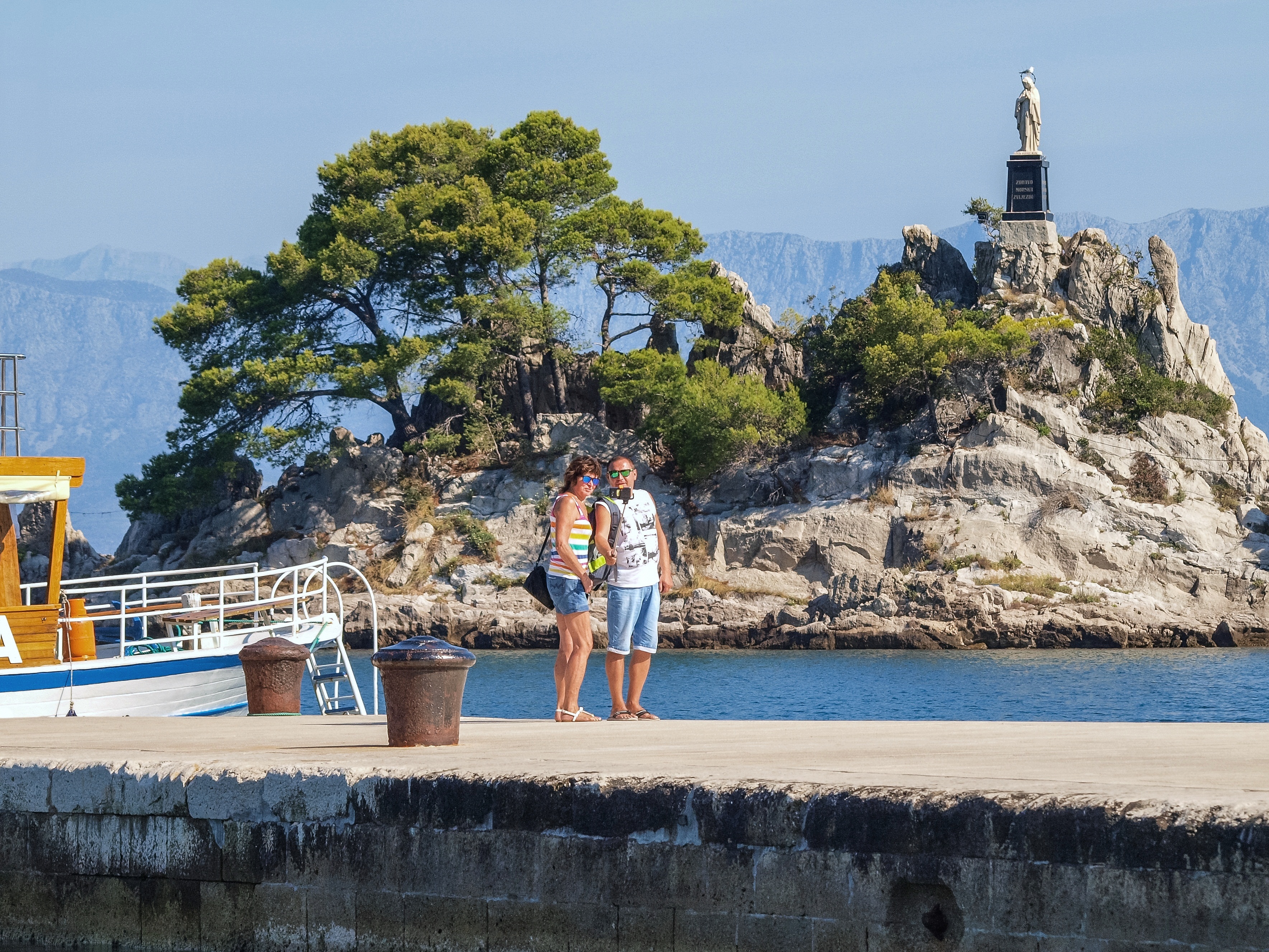
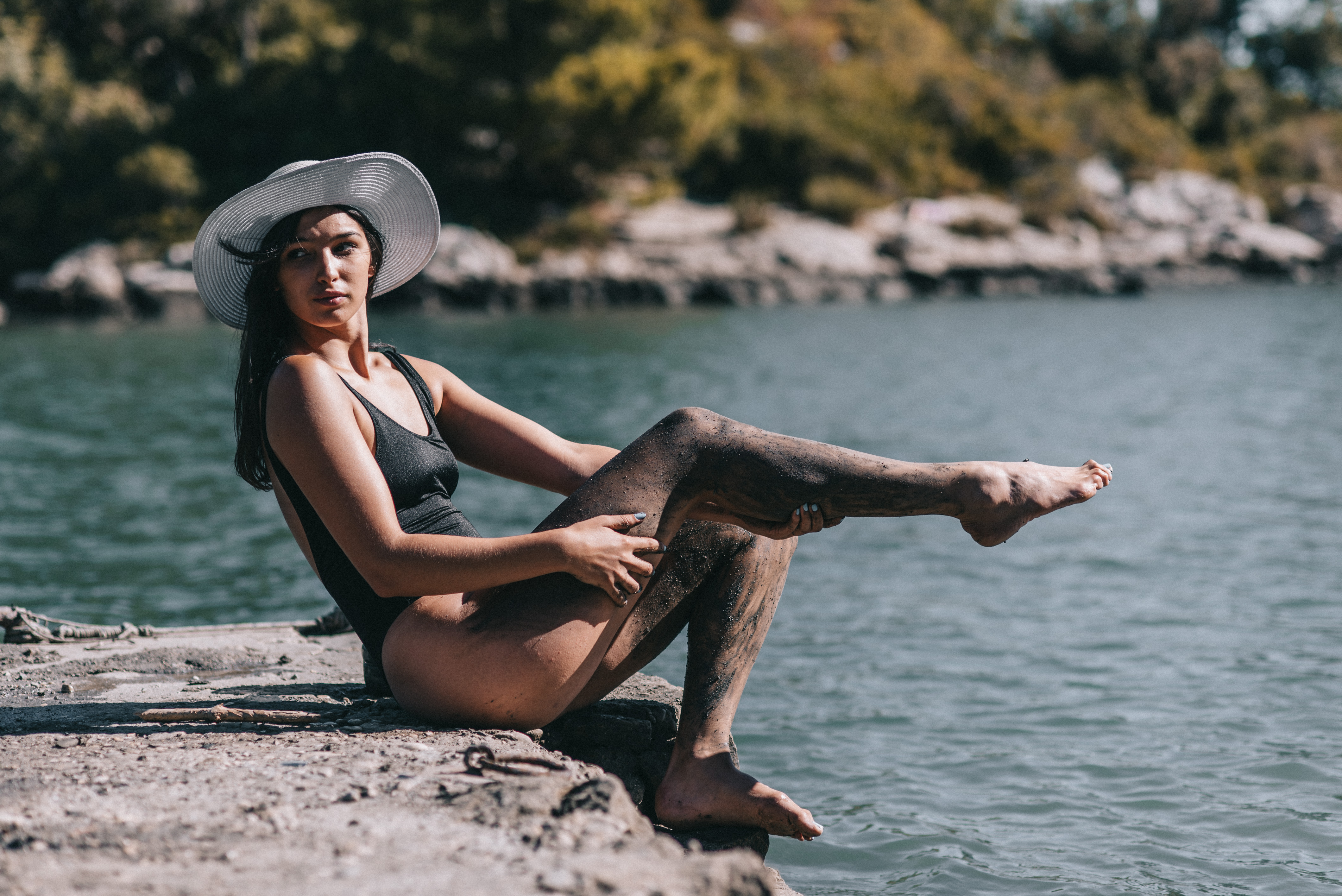


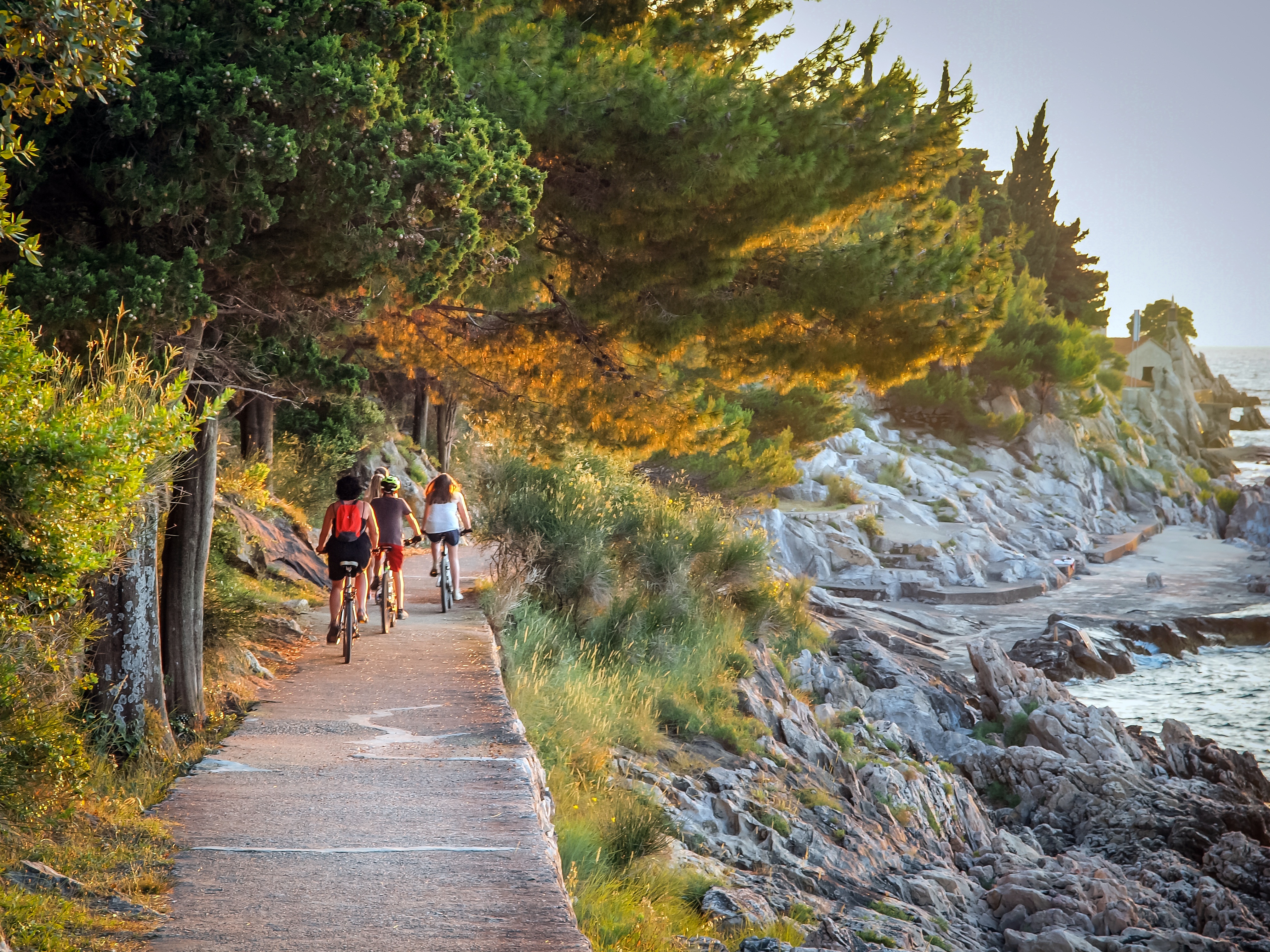
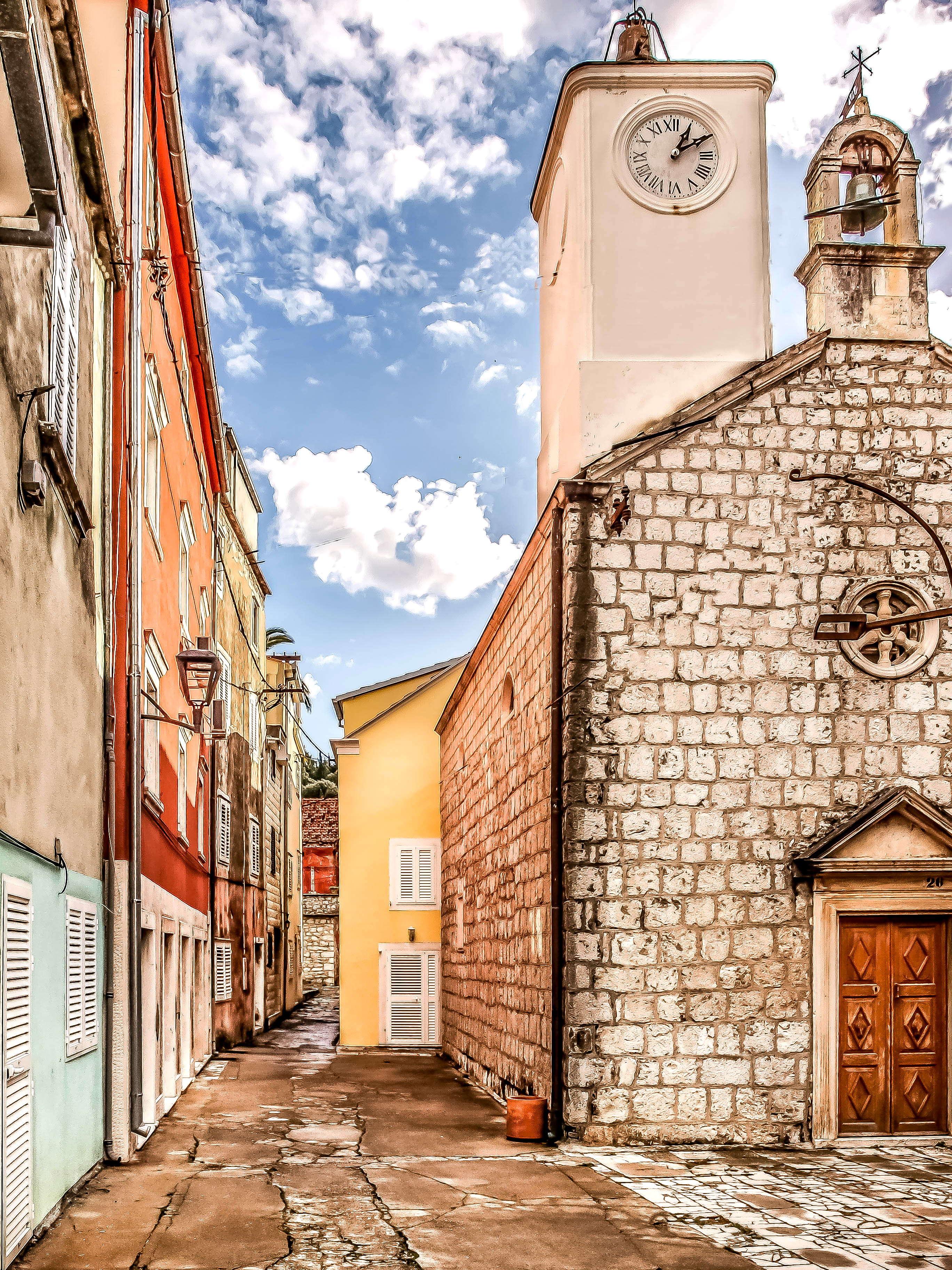
Trstenik
Trstenik is situated on the southern coast of the Pelješac peninsula, and is connected to the mainland by the coastal road via Ston. Trpanj and the island of Mljet are connected by the ferry line Trstenik-Polače. The town is 20 kilometres away from the ferry landing, and is situated in a deep inlet under the tall Pelješac hills, with a lovely pebble beach at the base of the bay. The bay is an anchoring spot, though it is not recommended in times of southern winds.
Information
Orebić Tourist Board
Zrinsko Frankopanska 2
20250 Orebić
info@visitorebic-croatia.hr
www.visitorebic-croatia.hr
Tel: +385 (0) 20 713718
Fax: +385 (0) 20 714001
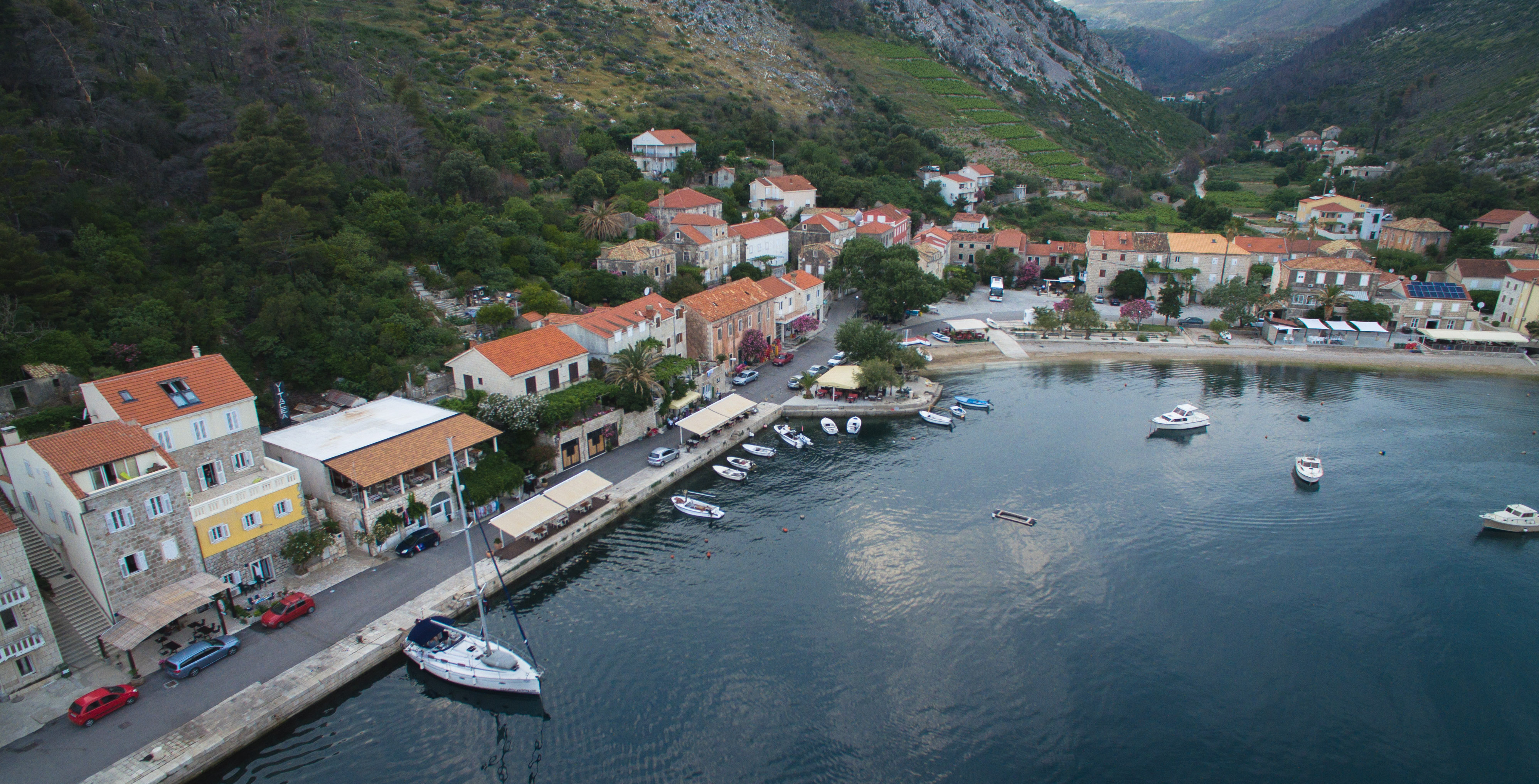
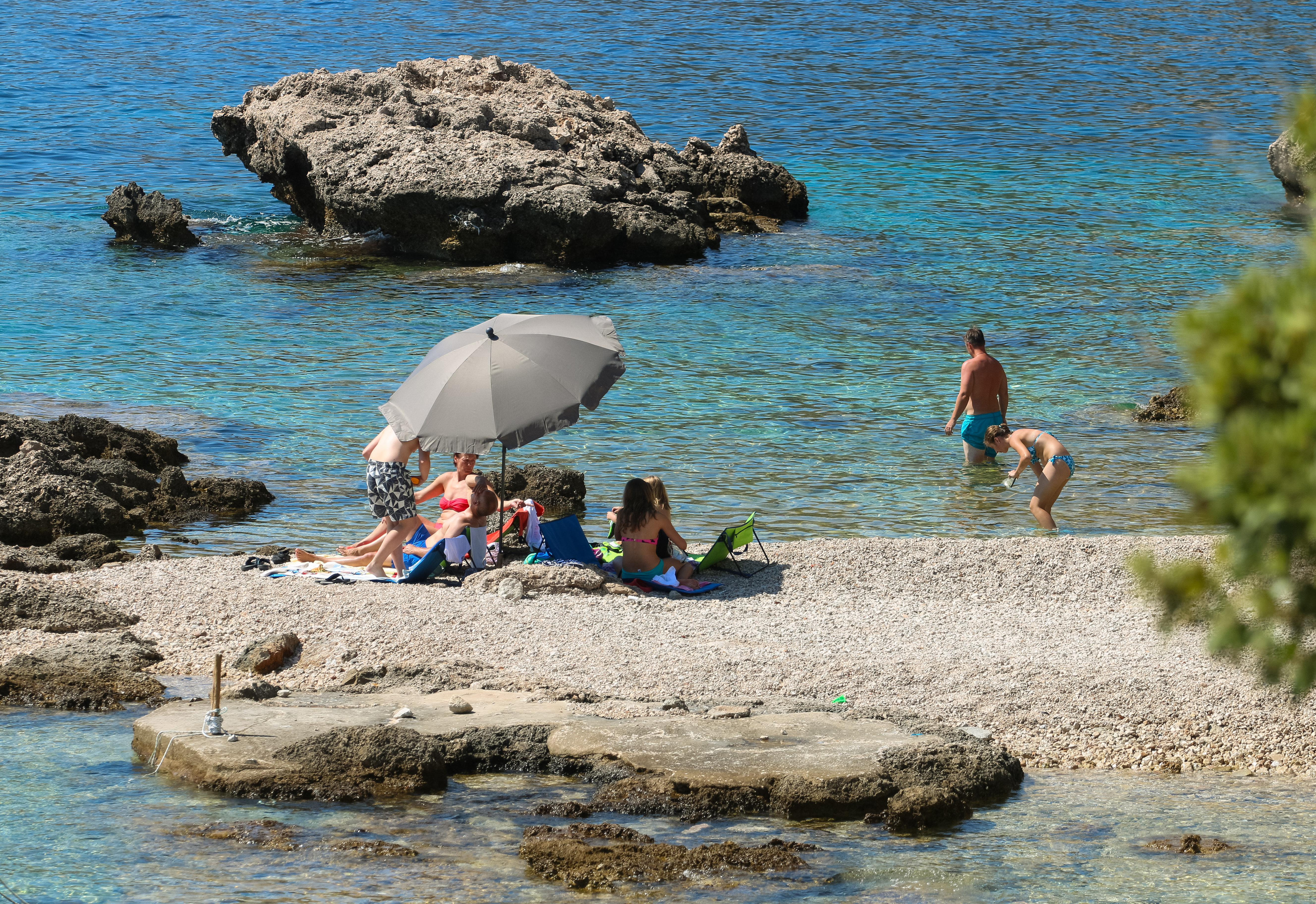
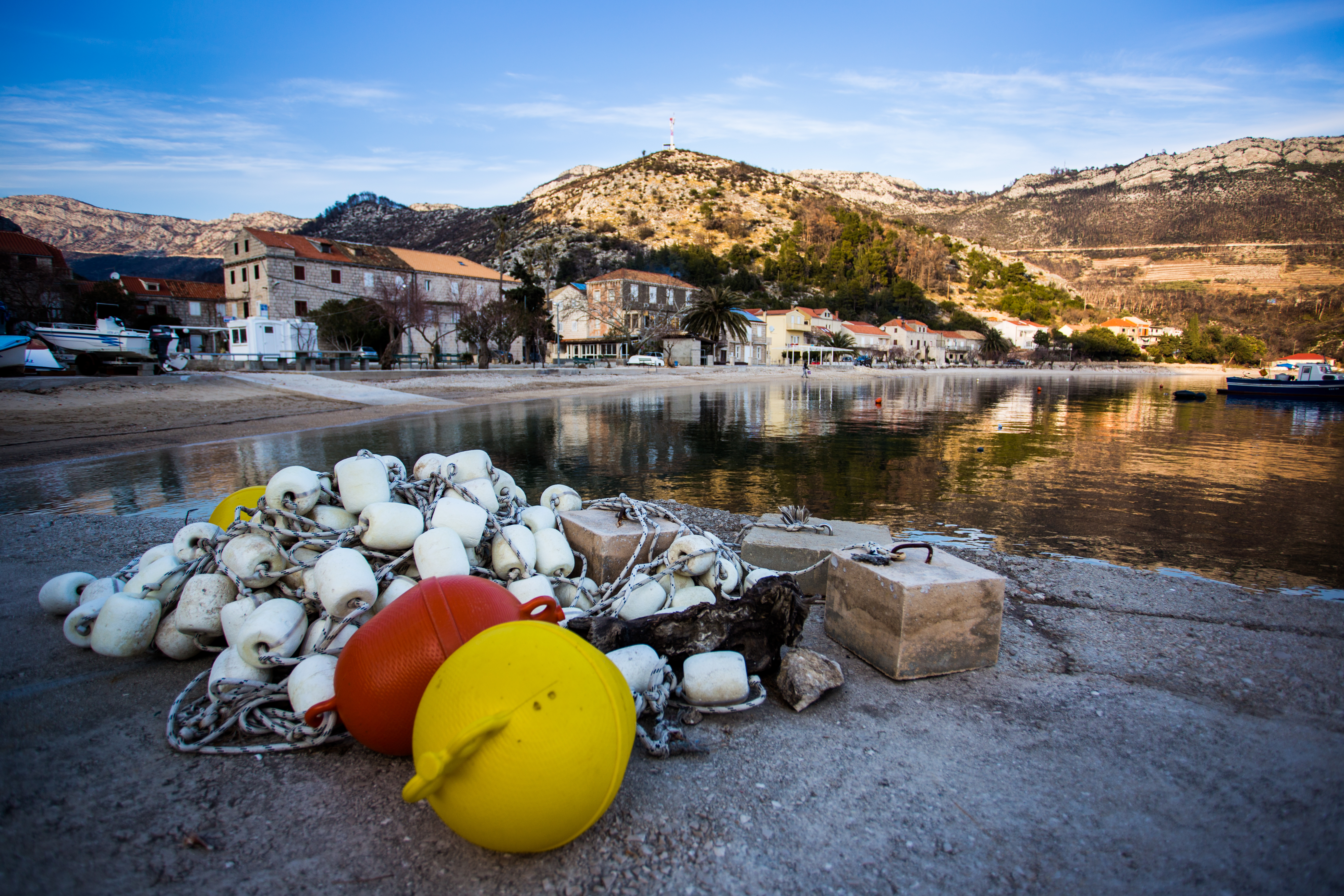
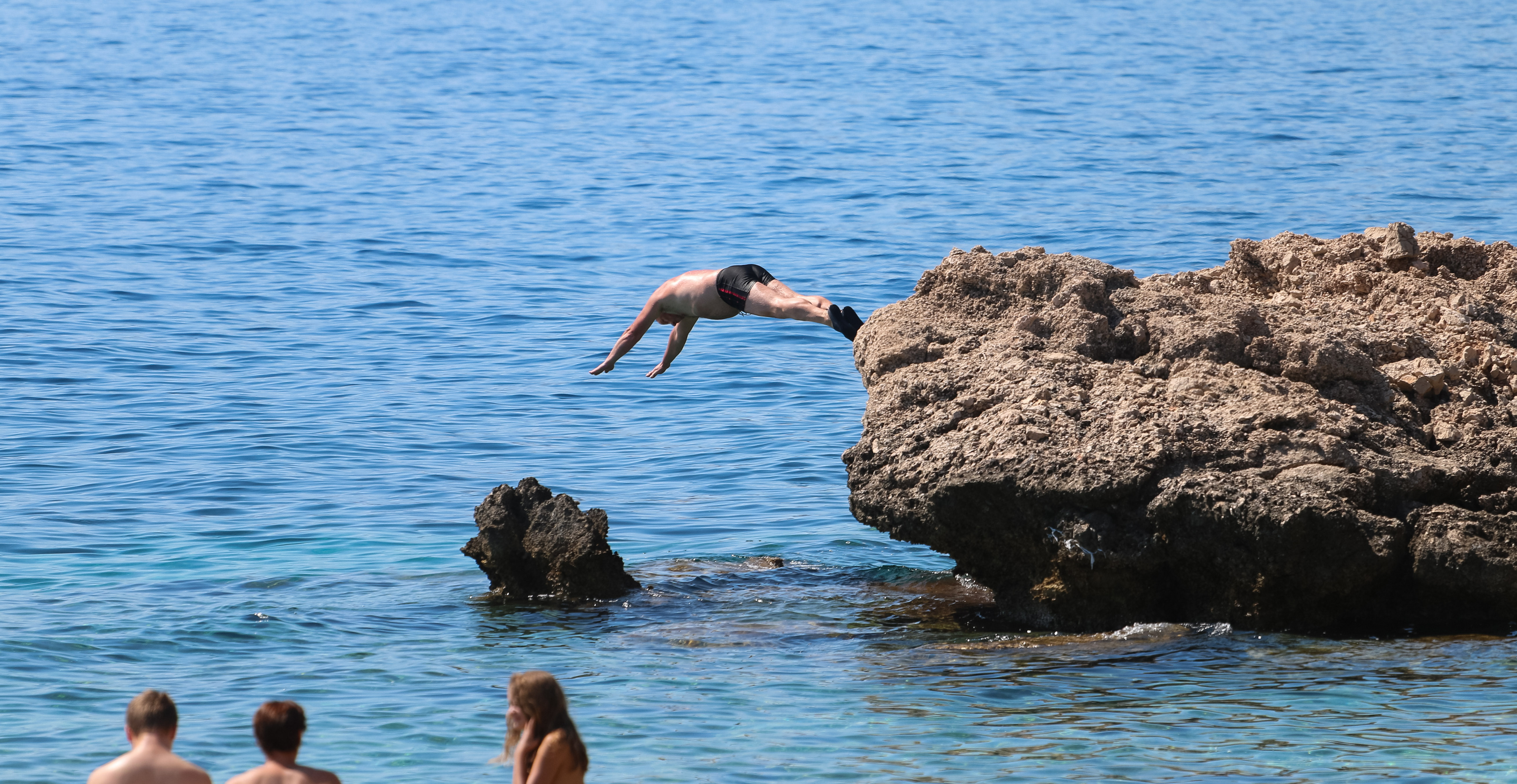
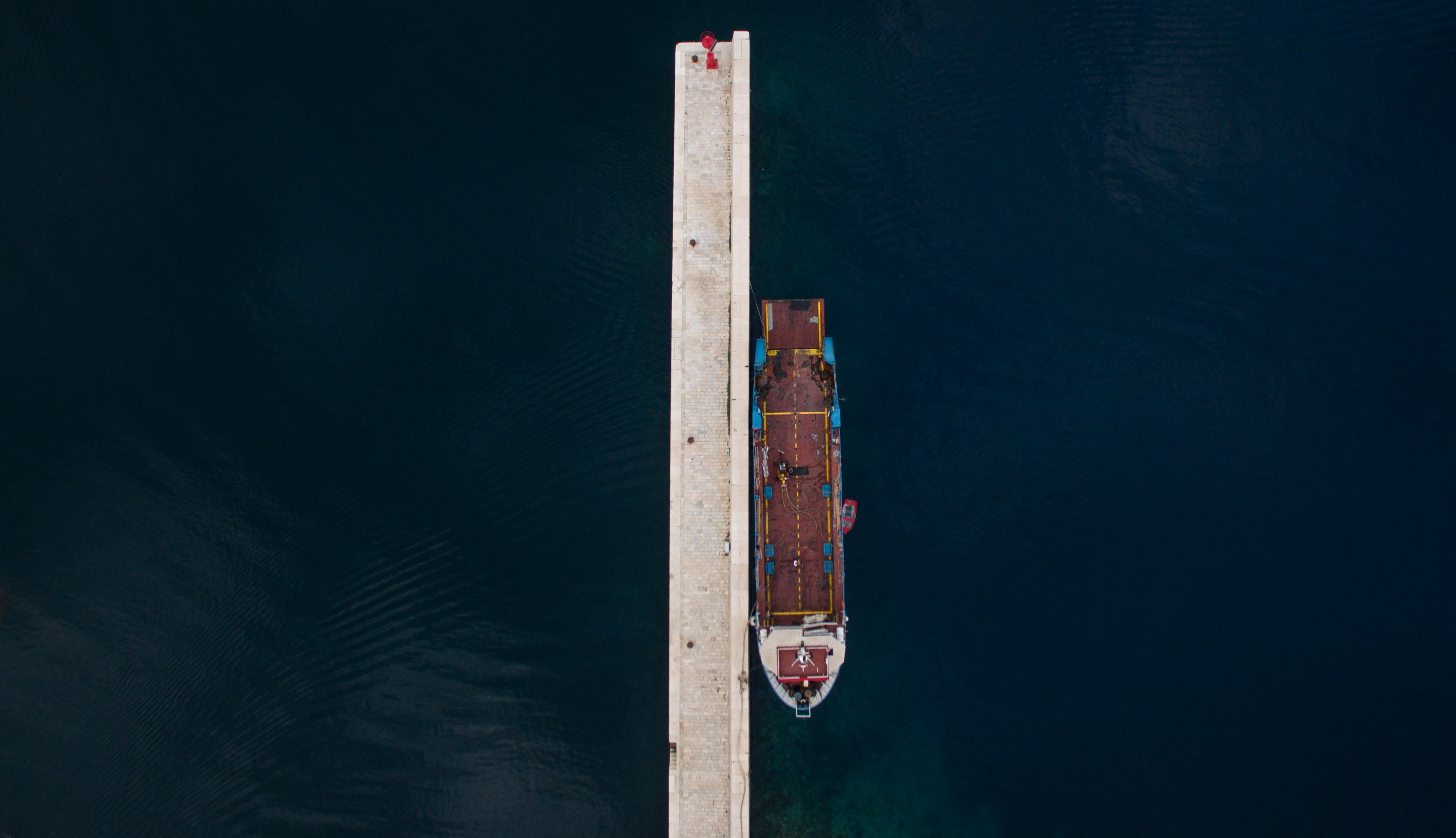
Viganj
Located 8 kilometres from Orebić, this town is home to 300 inhabitants and has a long maritime tradition and many captain’s houses. The remains of the Dominican monastery with its cloisters from the 17th century can be found in Viganj (today a school and restaurant) located next to the Church of Our Lady of Roses. A picture of the maritime battle at Lepanta in 1571, and a wooden Gothic statue of Mother and Child from the 15th century are found on the altar. There are many gardens here with exotic plants, as well as gardens with homegrown vegetables. Along with the maritime trade, more and more inhabitants are employed in the tourism business.
Information
Orebić Tourist Board
Zrinsko Frankopanska 2
20250 Orebić
info@visitorebic-croatia.hr
www.visitorebic-croatia.hr
Tel: +385 (0) 20 713718
Fax: +385 (0) 20 714001
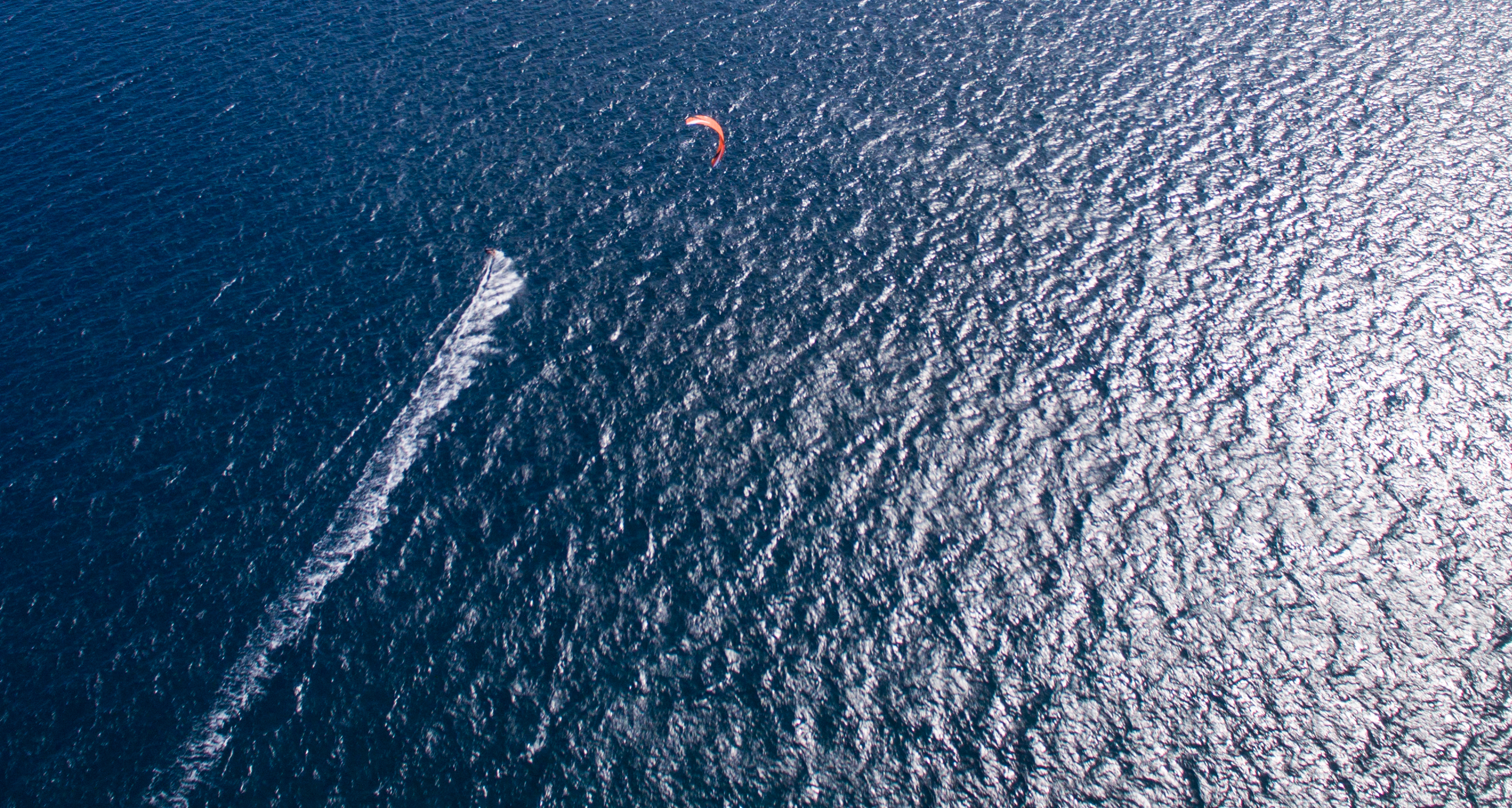
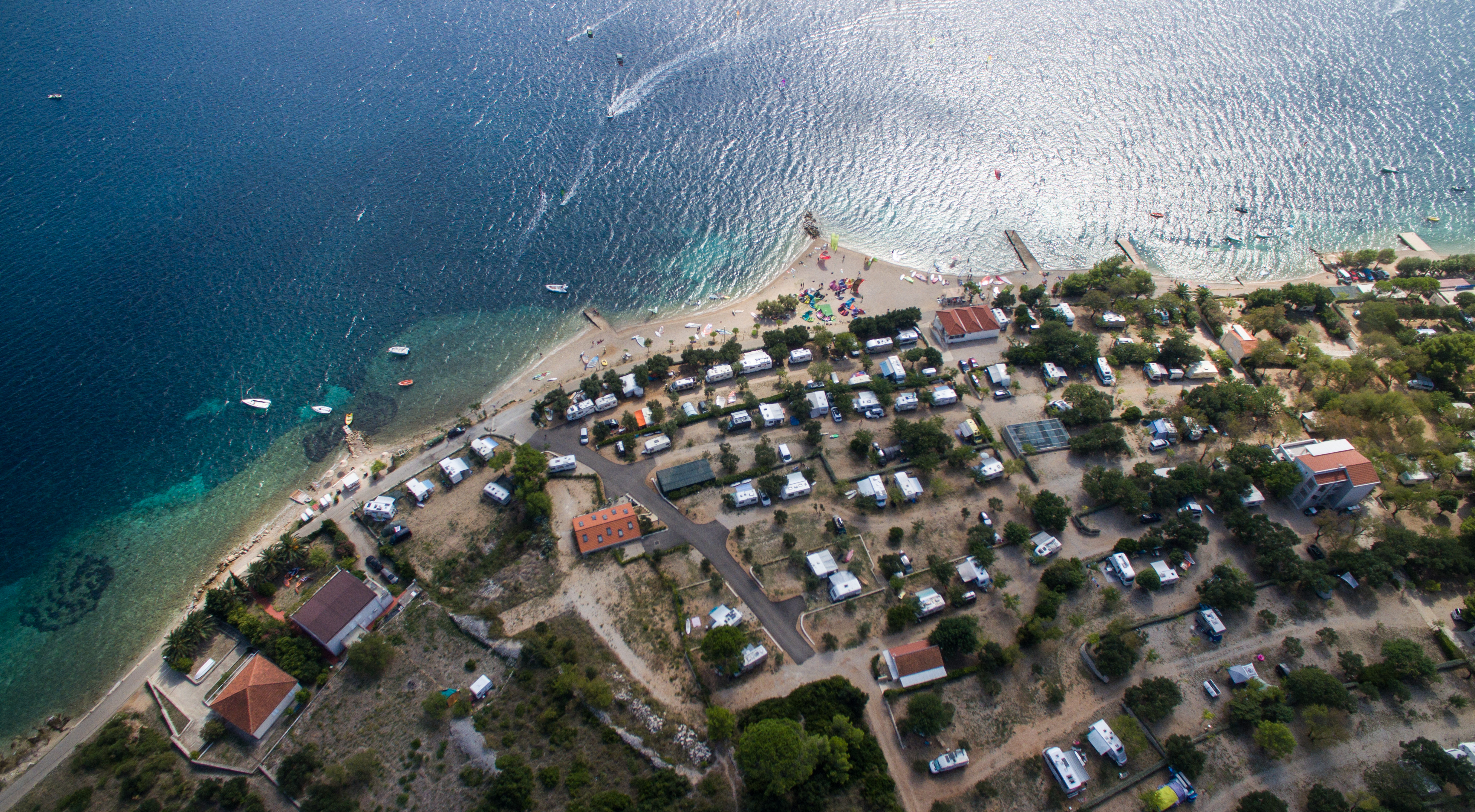
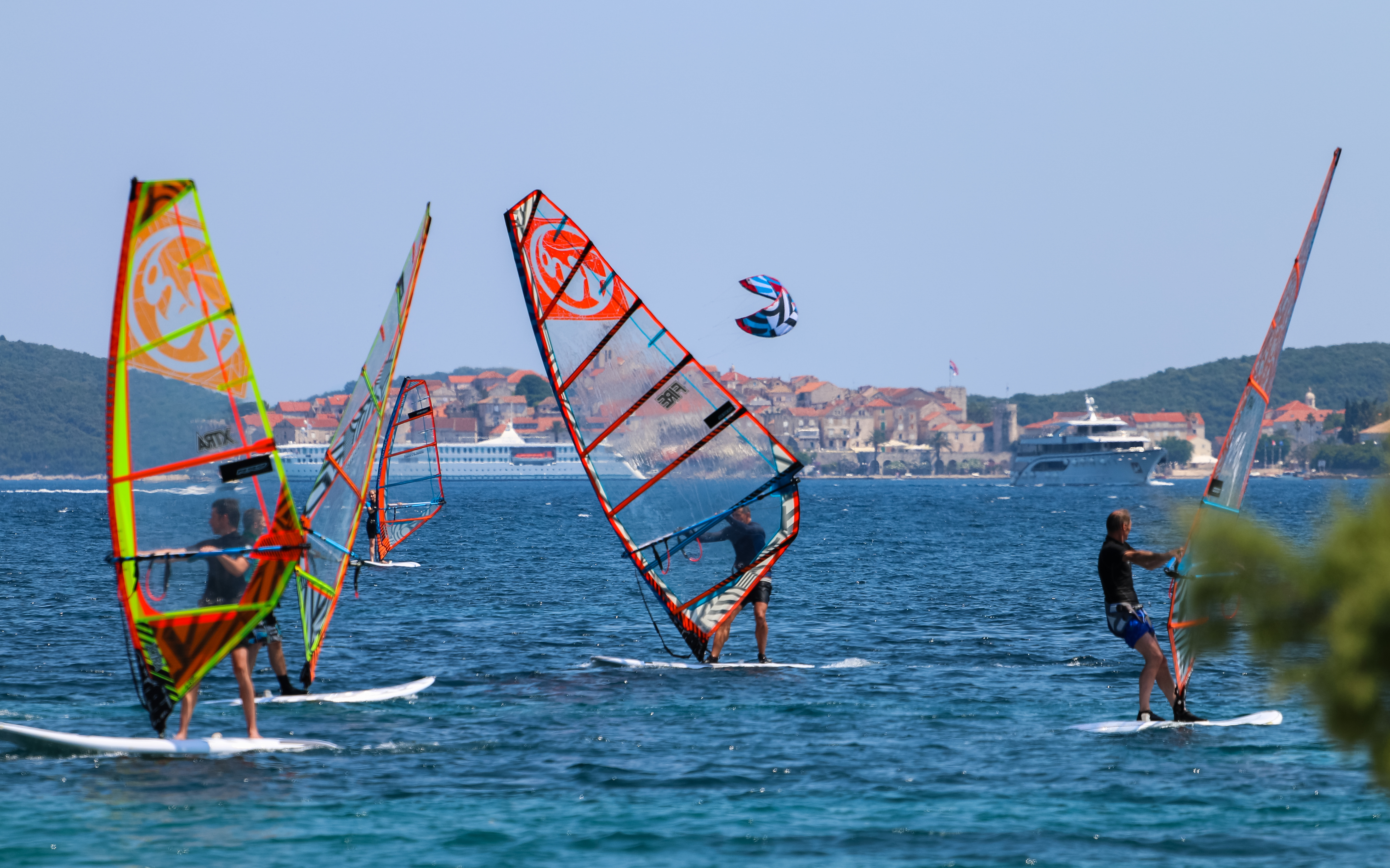
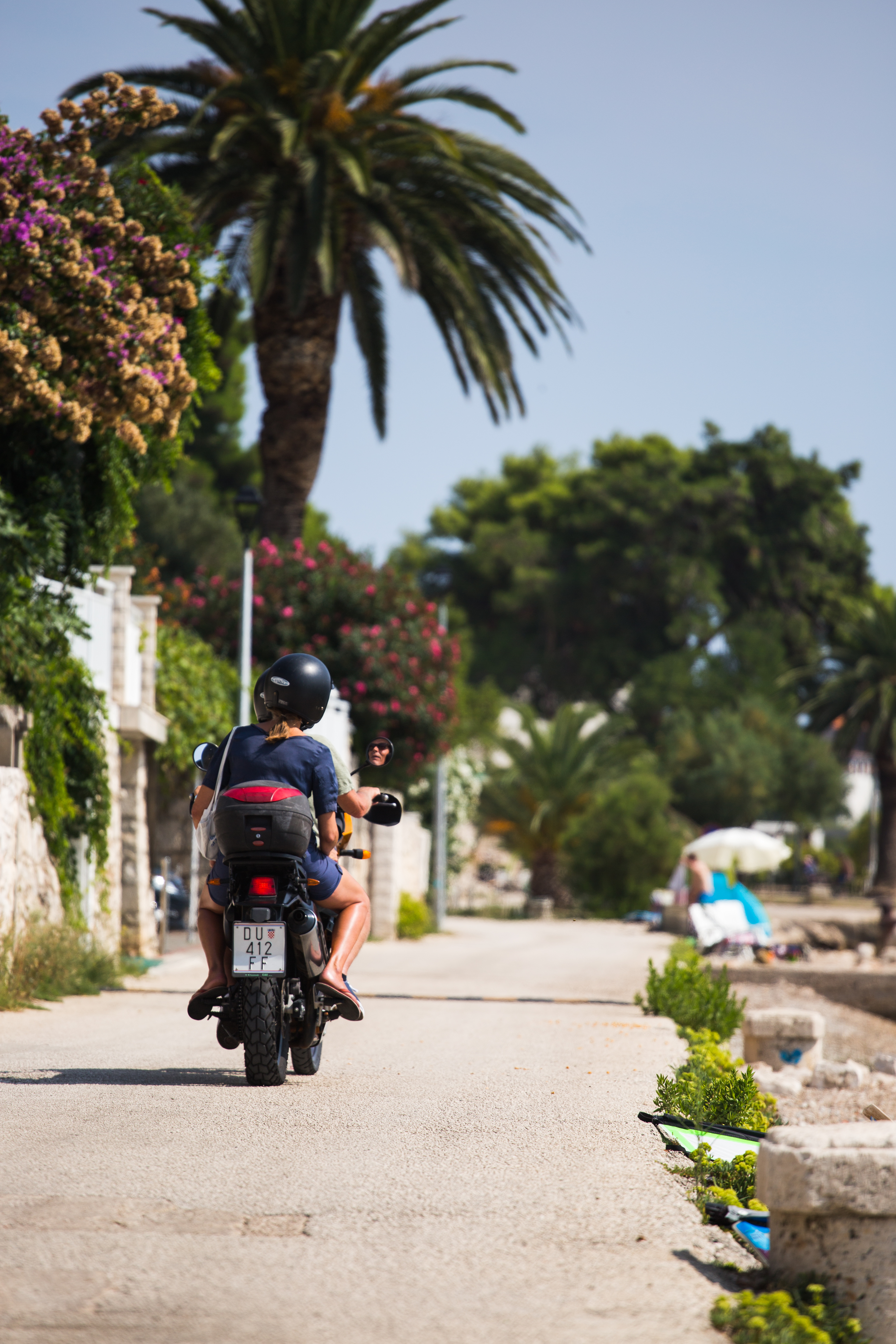
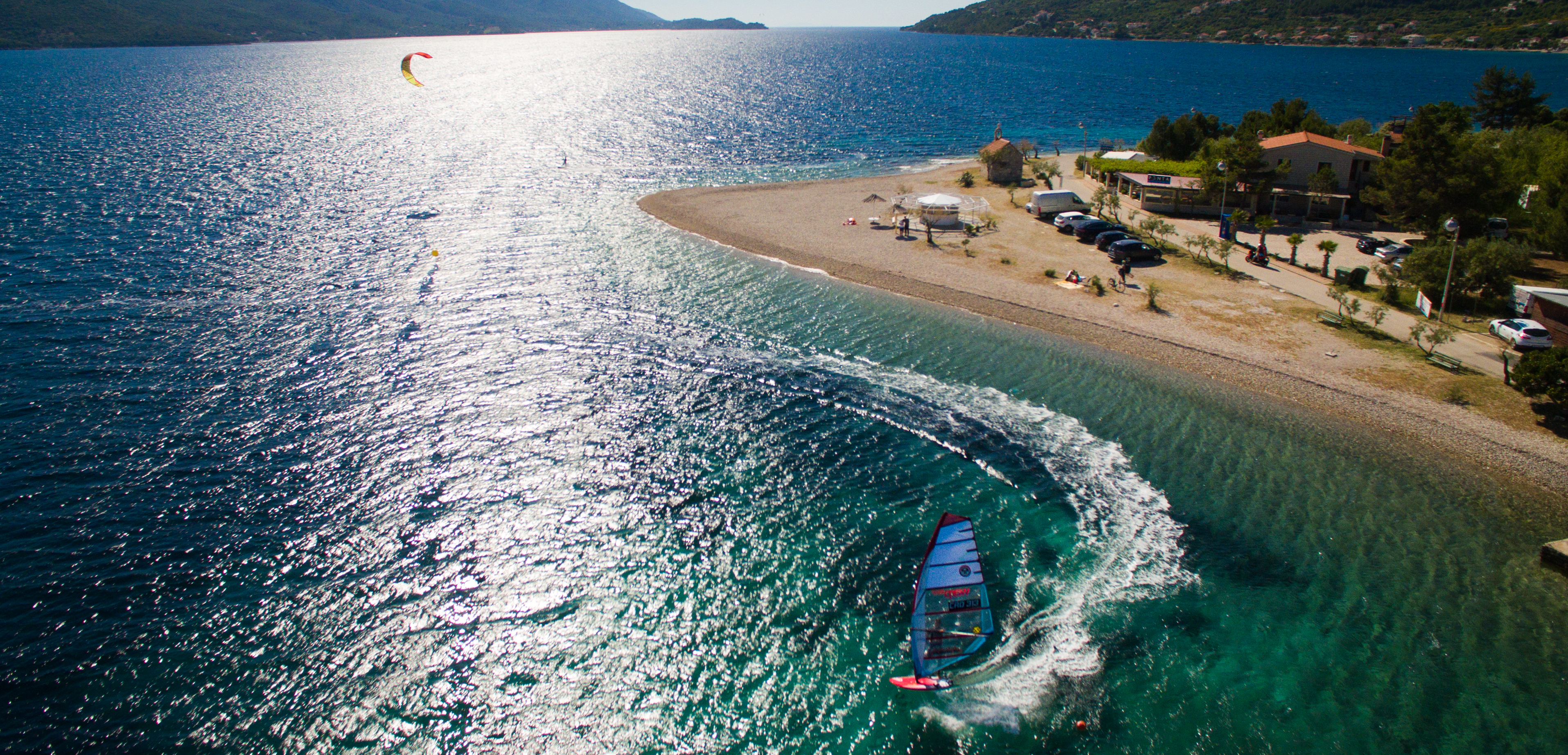
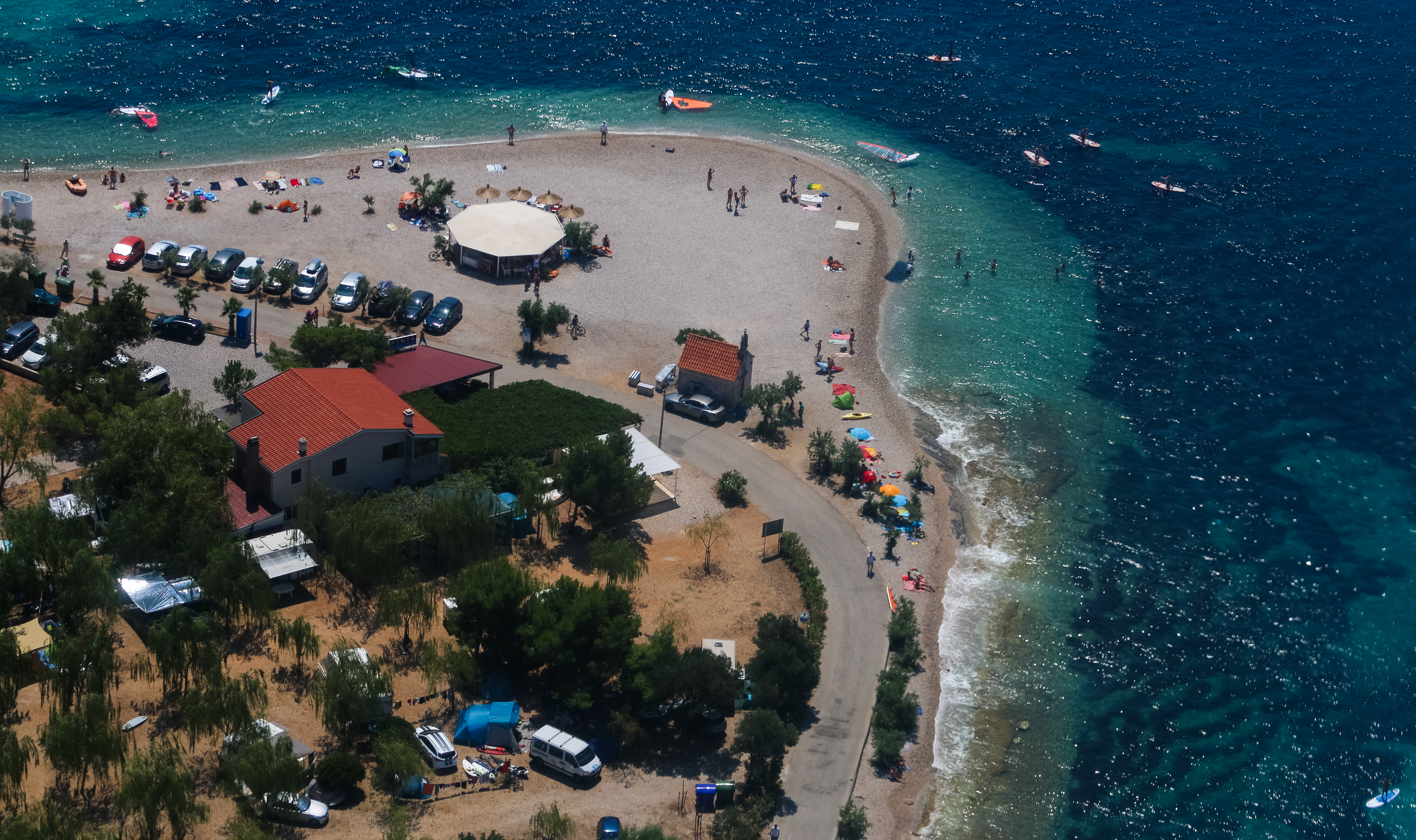
Žuljana
Žuljana is located in Žuljana Bay on the southern coast of the Pelješac peninsula, and is connected to the mainland by the highway via Ston. Pelješac is world known for its top quality wines, and as such the main economic activities of the peninsula is wine making, olive growing, fishing and aquaculture (shellfish, mussels and oysters) – all of which are specialties in Peljesac’s gastronomy.
One of the largest pebble beaches on the Adriatic is located in Žuljana Bay, and the neighbouring Vučina inlet is a favourite destination for sports fishermen.
Information
Ston Tourist Board
Pelješki puti bb, 20230 Ston
tzston@du.t-com.hr
www.ston.hr
Tel / Fax: +385 (0) 20 754452
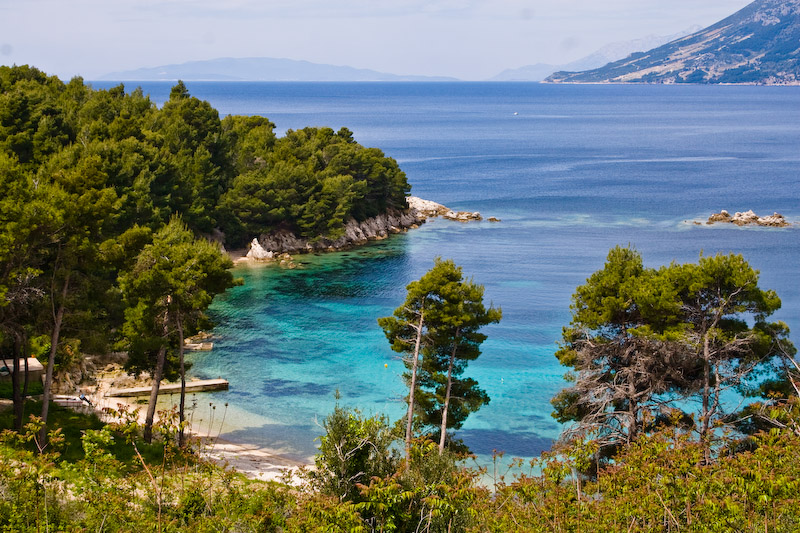
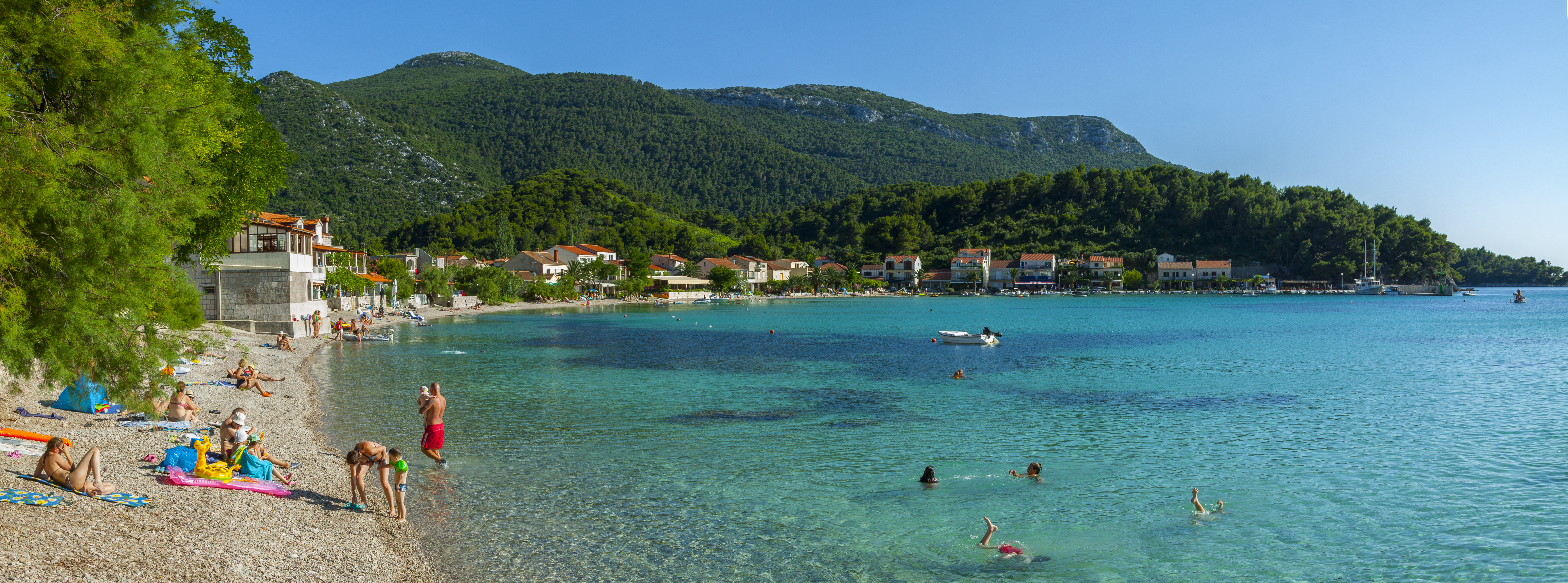
- Broce
-
Broce
Broce is situated on the Pelješac peninsula, and is connected to the mainland by the island highway via Ston. The settlement with its small boat dock is situated 3 kilometres south of Ston and the residents, though they traditionally worked in the fields and as fishermen, are increasingly turning to tourism as this region has many beautiful beaches lying in the shade of pine woods; plenty of resources and potential to offer a quality vacation to visitors.
Information
Ston Tourist Board
Pelješki puti bb, 20230 Ston
tzston@du.t-com.hr
www.ston.hr
Tel / Fax: +385 (0) 20 754452
- Drače
-
Drače
Drače is a picturesque town on the northern side of the Pelješac peninsula. Situated in a wide inlet, Drače is a good choice for a quiet family holiday, while excellent road connections to the mainland ensure a rich excursion program in the stunning environment.
Information
Janjina Tourist Board
20246 Janjina
info@tzjanjina.hr
www.tzjanjina.hr
Tel: +385 (0) 20 741130
Fax: +385 (0) 20741005 - Janjina
-
Janjina
A town in the interior of the Pelješac peninsula, at the foot of Gradine Mountain (244m), situated 2 kilometres from the port of Drače on the northeastern coast. The main economic activities here are agriculture, wine making and olive growing. It is situated along the national highway. At Gradine, just above Janjina, there are remnants of Illyrian structures, and there are grave stone piles nearby.
The town of Janjina is composed of five villages: Bara, Jaspričići, Prislivi, Dežulovići and Gornje Selo. Gornje Selo includes Lovrović, Gornje Selo and Polutić. Bara and Gornje Selo existed back in the 14th century, while the remaining settlements came into existence during the 15th and 16th centuries.
At the graveyard near the Church of St. Stephan, the remains of walls of a Roman country house and tombstones from the 1st century have been found. The ruins of the pre-Romantic Church of St. George (Jurja) with its late medieval graveyard are significant; the name of the donor Peter is engraved in the segments of the altar rail, decorated with braiding. In the wall above the entrance to the former Rector’s Palace is a rustic relief with the seated figure of St. Vlaho. The town has several lovely Captains’ homes from the 19th century, while the historic Church of St. Vlaho dominates.
Information
Janjina Tourist Board
20246 Janjina
info@tzjanjina.hr
www.tzjanjina.hr
Tel: +385 (0) 20 741130
Fax: +385 (0) 20741005 - Kuna Pelješka
-
Kuna Pelješka
The main economic activities of the town of Kuna Pelješka are agriculture and wine making. In the 19th century, citizens of Dubrovnik built the Gučetić castle and the first Church of St. Stephen at the graveyard (renovated at the end of the 19th century).
The triple nave Church of Our Lady of Loreta (1681) is the most monumental Baroque structure in the Dubrovnik region outside of the Dubrovnik Old Town. The church contains marble altars from the workshop of the Brutapelle family, and paintings by Celestin Medović. In 1705, the Franciscan monastery was built next to the church. The home of Celestin Medović contains a collection of his paintings and the town has a monument honoring the painter, the work of Frano Kršinić. Near the church (2.5 kilometres) are places suitable for swimming and water sports.
Information
Orebić Tourist Board
Zrinsko Frankopanska 2
20250 Orebić
info@visitorebic-croatia.hr
www.visitorebic-croatia.hr
Tel: +385 (0) 20 713718
Fax: +385 (0) 20 714001


- Kućište
-
Kućište
The road westward from Orebić, which passes along the seashore, arrives at this Captain’s town, where about 200 people live today.
Here you can find a series of Baroque captain’s homes with their ornate gardens, and the vlake (boat shelters) are especially picturesque. The Baroque Church of the Holy Trinity, dating back to 1725, with its creatively shaped facade and the Baroque home of the Lazarović family stand out in particular. The path by the seashore passes by Liberan Cape with its beautiful, long pebble beach, and arrives finally at the town of Viganj.
Information
Orebić Tourist Board
Zrinsko Frankopanska 2
20250 Orebić
info@visitorebic-croatia.hr
www.visitorebic-croatia.hr
Tel: +385 (0) 20 713718
Fax: +385 (0) 20 714001




- Lovište
-
Lovište
Lovište is a town on the far western tip of the Pelješac peninsula, situated in a deep inlet. The town has about 250 residents who work in the shipping industry and tourism, and they are well known for raising figs, almonds and carob. In the middle of the 19th century, the town was established by settlers from the town Bogomolja on the island of Hvar. Many private bed and breakfasts offer guests local culinary specialities, and the beaches here are perfect for a quiet family vacation.
Information
Orebić Tourist Board
Zrinsko Frankopanska 2
20250 Orebić
info@visitorebic-croatia.hr
www.visitorebic-croatia.hr
Tel: +385 (0) 20 713718
Fax: +385 (0) 20 714001




- Orebić
-
Orebić
This municipality with about 1500 residents spreads from the old part of town along the seashore inland, with numerous new homes and bed and breakfasts constructed behind this narrow belt. The coastal part of the town boasts Baroque homes of the Orebić sailors, with large gardens filled with flowers, trellis-work and exotic tree species. For centuries, the main economic activity here was shipping, and generations of local families produced distinguished captains of sailing ships, later steamships and today,large motor ships. In 1865, the Pelješac Maritime Society (Associacione Marittima di Sabioncelo – AMSD) was founded, which soon had 33 sailing ships for transatlantic sailing, and they opened their own shipyard in Orebić.
In the centre of town is the Church of Christian Aid from the 19th century, and not far is the old municipal building, where the reading room and library are situated on the main floor and where the Maritime Museum, founded in 1957, is located. The museum has a valuable archaeological collection of many models, ships, photographs of sailing ships, portraits of the captains and various maritime equipment and maps, as well as documents relating to shipping and the Orebić families.
Not far away, above the dense pine and cypress woods, the Franciscan monastery with its Church of Our Lady of Angels was erected in 1475 on a nearby cliff. Next to the church is the graveyard, called the “Captain’s graveyard”, as many generations of captains and sailors are buried here. The church has a collection of valuable art, including the Mother with Child by the Florence master Fiamiberi, relief in marble and the Mother with Child by Nikola Firentinac and more.
The monastery has its own museum collection with a number of votive paintings from the 17th and 19th centuries, which depict ships in trouble under the protection of the Mother of God. In addition to the art, the monastery also has a small Baroque loggia-viewing point, which offers a unique view of the Pelješac Channel, the archipelago of islets, the city and island of Korčula, and towards the east offers views of the Pelješac peninsula and the island of Mljet.
The residents here still work in shipping, as well as in tourism: there are a large number of bed and breakfasts and vacation homes, along with a number of large hotels and campgrounds, all directly near to pebble beaches and pine forests.
Information
Orebić Tourist Board
Zrinsko Frankopanska 2
20250 Orebić
info@visitorebic-croatia.hr
www.visitorebic-croatia.hr
Tel: +385 (0) 20 713718
Fax: +385 (0) 20 714001






- Oskorušno
-
Oskorušno
This settlement in the interior of the Peljesac peninsula, 10 kilometres northwest of Janjina is situated at an altitude of 325 metres. The main economic activities are agriculture and livestock breeding. It is situated on the regional highway which stretches the length of the peninsula.
Information
Orebić Tourist Board
Zrinsko Frankopanska 2
20250 Orebić
info@visitorebic-croatia.hr
www.visitorebic-croatia.hr
Tel: +385 (0) 20 713718
Fax: +385 (0) 20 714001

- Osobjava
-
Osobjava
This settlement and inlet in the central part of the northern coast of the Pelješac peninsula is 4 kilometres north of Janjina. The main economic activities are agriculture and fishing. The coastline is very steep, rocky and poorly developed, with only a few small coves. The inlet is a docking area for small yachts. The town is on a side road of the regional highway which stretches the length of the peninsula.
Information
Janjina Tourist Board
20246 Janjina
info@tzjanjina.hr
www.tzjanjina.hr
Tel: +385 (0) 20 741130
Fax: +385 (0) 20741005 - Potomje
-
Potomje
This settlement in the central part of the interior of the Pelješac peninsula lies 15 kilometres southeast of Orebić at an altitude of 50 metres. The main economic activities are agriculture and wine making. It is situated in the western portion of the Dingač wine region, well known for its excellent wines and wine products. It is on the regional highway.
In recent times, a tunnel was drilled from Potomje to the coast, and as such the coastal settlements under the Dingač slopes have become exceptionally attractive swimming spots.
Information
Orebić Tourist Board
Zrinsko Frankopanska 2
20250 Orebić
info@visitorebic-croatia.hr
www.visitorebic-croatia.hr
Tel: +385 (0) 20 713718
Fax: +385 (0) 20 714001


- Putnikovići
-
Putnikovići
Welcome to Putnikovići, a picturesque village in the interior of the Pelješac peninsula. This soil, warmed by the sun, is perfect for growing grapes for top quality wines, while the nearby olive groves give golden-yellow oil full of flavour and aroma.
Information
Ston Tourist Board
Pelješki puti bb, 20230 Ston
tzston@du.t-com.hr
www.ston.hr
Tel / Fax: +385 (0) 20 754452
- Sreser
-
Sreser
Sreser is situated on the southern Dalmatian Pelješac peninsula, some 30 kilometres west of Ston. Throughout history, the peninsula gave many captains and sailors. To tourists, it is well known for the quality of its wines and the true Mediterranean landscape.
Sreser was originally a settlement of fishing homes, considering that fishing was the basis of life, alongside agriculture and wine making. Tourism developed gradually here. The environment will be especially pleasing to hikers and all those with a love for old authentic towns, where the residents still live in the same traditional way.
Information
Janjina Tourist Board
20246 Janjina
info@tzjanjina.hr
www.tzjanjina.hr
Tel: +385 (0) 20 741130
Fax: +385 (0) 20741005 - Ston
-
Ston
 By its economic and strategic significance, Ston was one of the most important towns in the Dubrovnik Republic. This is confirmed by the monumental walls, constructed between the 14th and 15th centuries, and extending over 5 kilometres in length and measuring 5-10 metres in height. The walls were fortified by forty towers and bastions. In the 14th century, the construction of Mali (Little) and Veliki (Ston) began, one on each side of the isthmus, which was of great importance for the defence of Pelješac and the entire western section of the Republic.
By its economic and strategic significance, Ston was one of the most important towns in the Dubrovnik Republic. This is confirmed by the monumental walls, constructed between the 14th and 15th centuries, and extending over 5 kilometres in length and measuring 5-10 metres in height. The walls were fortified by forty towers and bastions. In the 14th century, the construction of Mali (Little) and Veliki (Ston) began, one on each side of the isthmus, which was of great importance for the defence of Pelješac and the entire western section of the Republic.A large natural salt works is located at the base of the Ston Channel, where sea salt has been produced for centuries – a precious monopoly product of the Dubrovnik Republic. The Mali Ston Channel, at Bistrina, is the location of a shellfish farm. There is also a lovely islet called the ‘Island of Life’.
Not far from Ston is the beautiful bay Prapratno with its centuries-old olive trees, Mediterranean macchia thickets and clean sandy beaches, and the site of one of the loveliest auto camps in this region.
History
In Roman times, Ston bore the name Turris Stagni. Today’s Ston was established in 1333 as soon as Dubrovnik came into possession of the Pelješac peninsula. The city was surrounded by 980 metres of walls with fortresses. The strongest Ston fortress was called “Veliki Kaštio”, with its walls drawn out along the seashore and which bordered towards the sea with the salt works.
This large fortified complex was built by Dubrovnik (1333-1506). The first school in Ston is mentioned in 1389, the first almshouse in 1458 and the orphanage in 1494. Buildings within the walls included the former office of the Dubrovnik Republic, built in the Gothic style, the Gothic palace Sorkočević-Đorđić and the former Bishop’s Palace. The former Rector’s Palace (Renaissance style) was expanded and adapted in the 19th century. On the hill of St. Michael (Mihajlo), there is the well preserved pre-Romantic Chapel of St. Michael (11-12th century) with the remnants of its wall frescos. Next to the church is the stone monument collection, with fragments of braided decoration.












Mali Ston
The gastronomic centre of the county, Mali Ston, the town with the longest walls in Europe is situated near Dubrovnik, and is surrounded by breathtaking scenery which, together with the picturesque city architecture, forms a harmonic entity. Here you can relax in untouched nature, and at the end of the day, try the oysters and mussels from the well-known Ston aquaculture farms.
Brijesta
It is a small tourist town in the inlet of the same name, situated in Mali Ston Bay on the island of Pelješac.
Information
Ston Tourist Board
Gundulićeva poljana 1, 20230 Ston
tzston@gmail.com
www.ston.hr
Tel / Fax: +385 (0) 20 754452 - Trpanj
-
Trpanj
This old, historical fishing village has water springs, dense Mediterranean vegetation and old Renaissance palaces. Above the harbour are the ruins of old fortresses, while there are remnants of mosaics and city walls at the Trpanj graveyard. The Renaissance Church of Our Lady of Karmen has an altar with the crest of the Gundulić family, to which the great poet Đivo F. Gundulić belonged.
Trpanj has good wine cellars, fish-filled waters, clean beaches surrounded by pine woods, numerous small coves and very attractive and pleasant summer resorts. Above all, it has hospitable hosts. Accommodations are available in resorts, in a home-style atmosphere, the ‘Faraon’ Hotel and an auto camp.
Information
Trpanj Tourist Board
Žalo 7; 20240 Trpanj
tzo-trpanj@du.t-com.hr
www.tzo-trpanj.hr
Tel: +385 (0) 20 743433
Fax: +385 (0) 20 743920








- Trstenik
-
Trstenik
Trstenik is situated on the southern coast of the Pelješac peninsula, and is connected to the mainland by the coastal road via Ston. Trpanj and the island of Mljet are connected by the ferry line Trstenik-Polače. The town is 20 kilometres away from the ferry landing, and is situated in a deep inlet under the tall Pelješac hills, with a lovely pebble beach at the base of the bay. The bay is an anchoring spot, though it is not recommended in times of southern winds.
Information
Orebić Tourist Board
Zrinsko Frankopanska 2
20250 Orebić
info@visitorebic-croatia.hr
www.visitorebic-croatia.hr
Tel: +385 (0) 20 713718
Fax: +385 (0) 20 714001




- Viganj
-
Viganj
Located 8 kilometres from Orebić, this town is home to 300 inhabitants and has a long maritime tradition and many captain’s houses. The remains of the Dominican monastery with its cloisters from the 17th century can be found in Viganj (today a school and restaurant) located next to the Church of Our Lady of Roses. A picture of the maritime battle at Lepanta in 1571, and a wooden Gothic statue of Mother and Child from the 15th century are found on the altar. There are many gardens here with exotic plants, as well as gardens with homegrown vegetables. Along with the maritime trade, more and more inhabitants are employed in the tourism business.
Information
Orebić Tourist Board
Zrinsko Frankopanska 2
20250 Orebić
info@visitorebic-croatia.hr
www.visitorebic-croatia.hr
Tel: +385 (0) 20 713718
Fax: +385 (0) 20 714001





- Žuljana
-
Žuljana
Žuljana is located in Žuljana Bay on the southern coast of the Pelješac peninsula, and is connected to the mainland by the highway via Ston. Pelješac is world known for its top quality wines, and as such the main economic activities of the peninsula is wine making, olive growing, fishing and aquaculture (shellfish, mussels and oysters) – all of which are specialties in Peljesac’s gastronomy.
One of the largest pebble beaches on the Adriatic is located in Žuljana Bay, and the neighbouring Vučina inlet is a favourite destination for sports fishermen.
Information
Ston Tourist Board
Pelješki puti bb, 20230 Ston
tzston@du.t-com.hr
www.ston.hr
Tel / Fax: +385 (0) 20 754452








